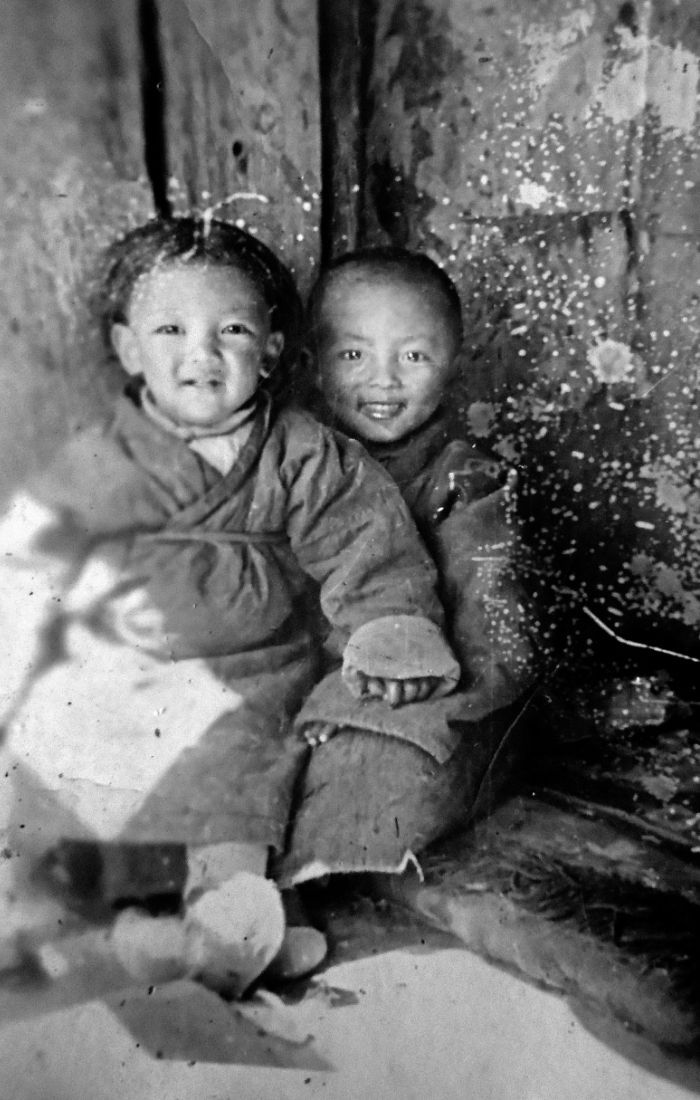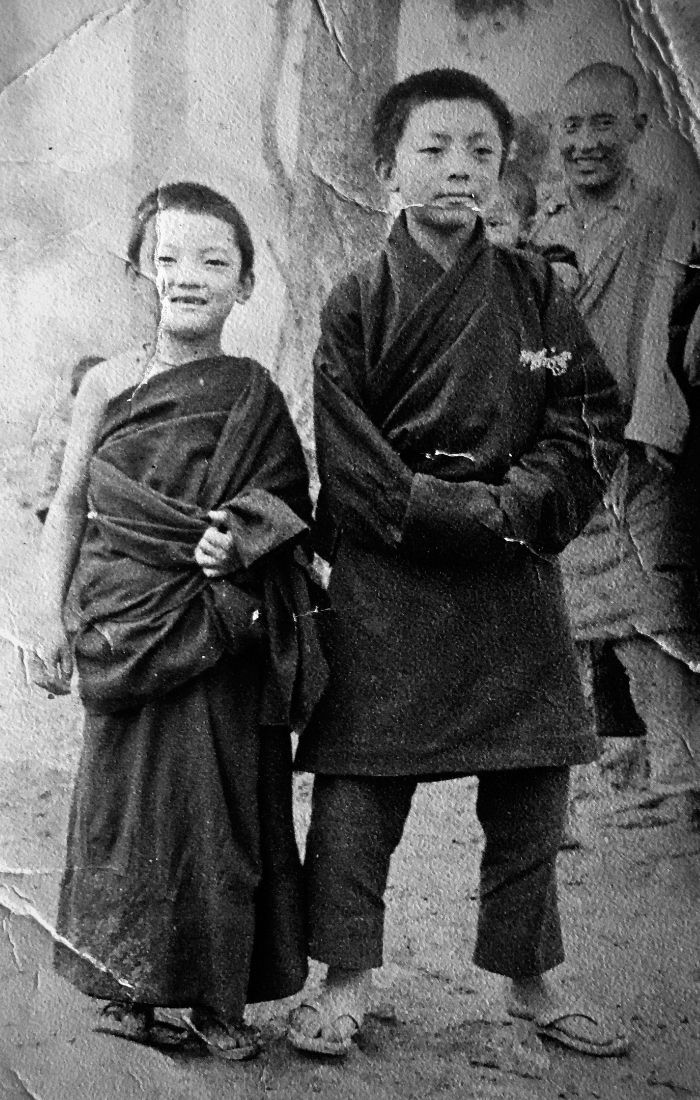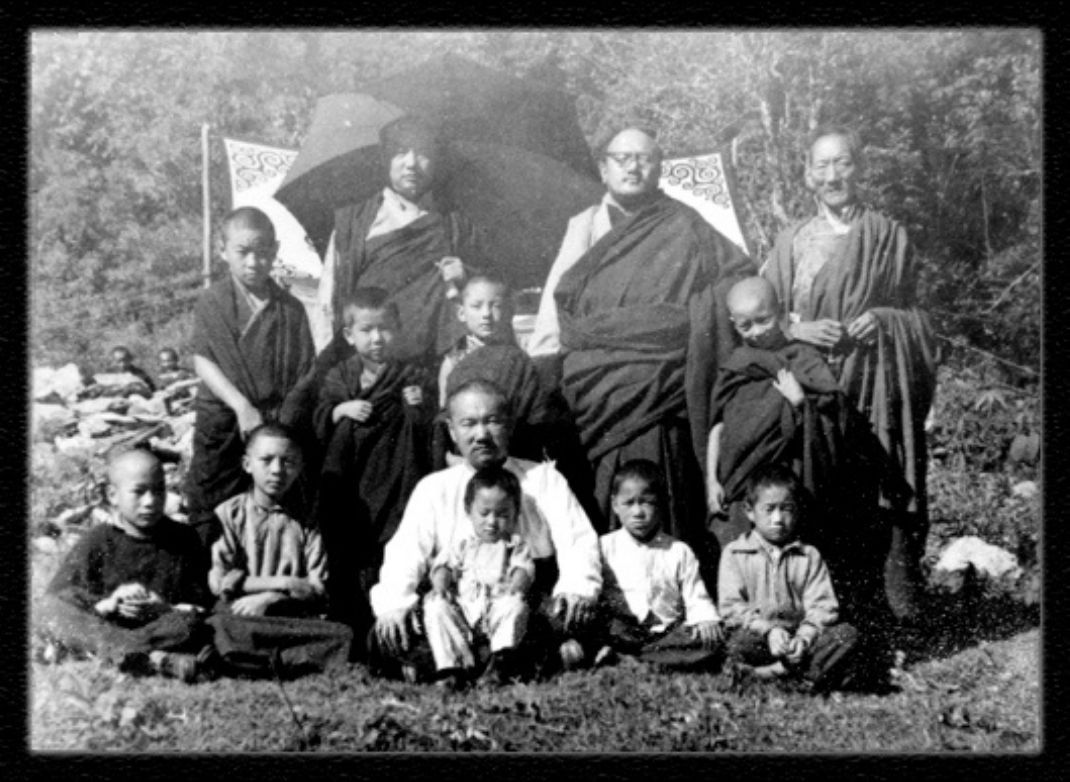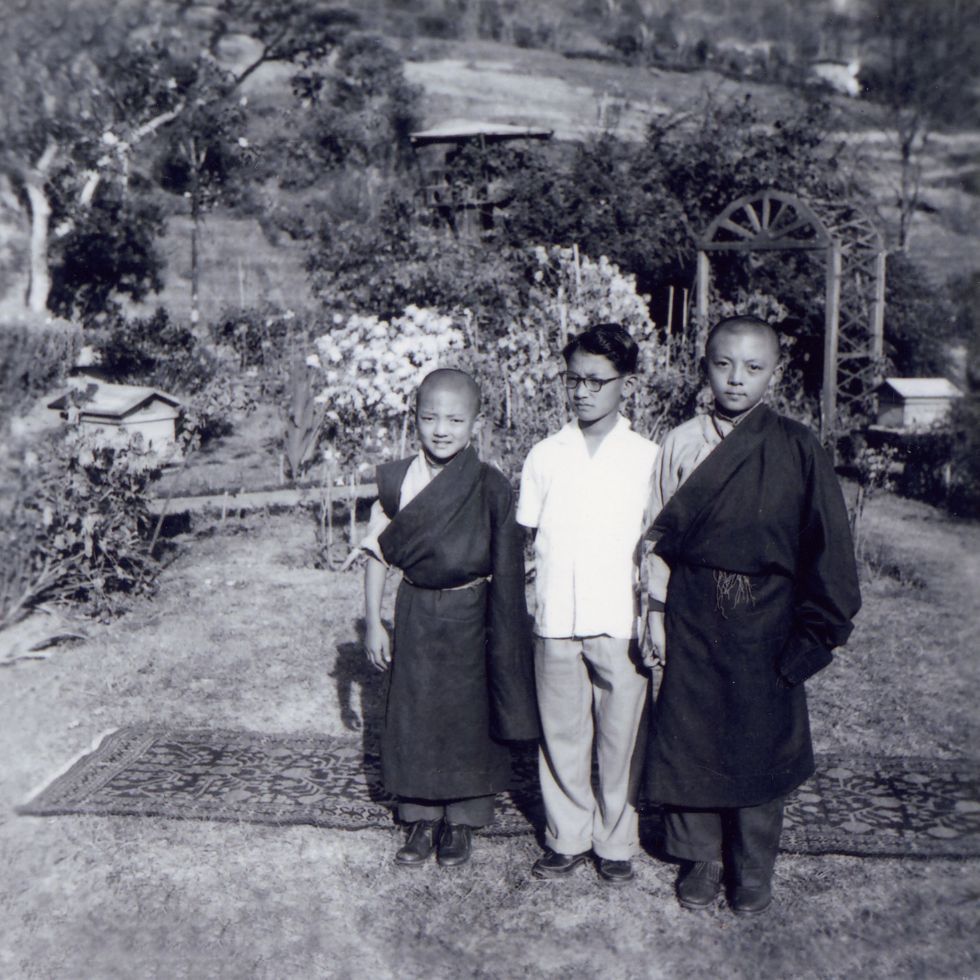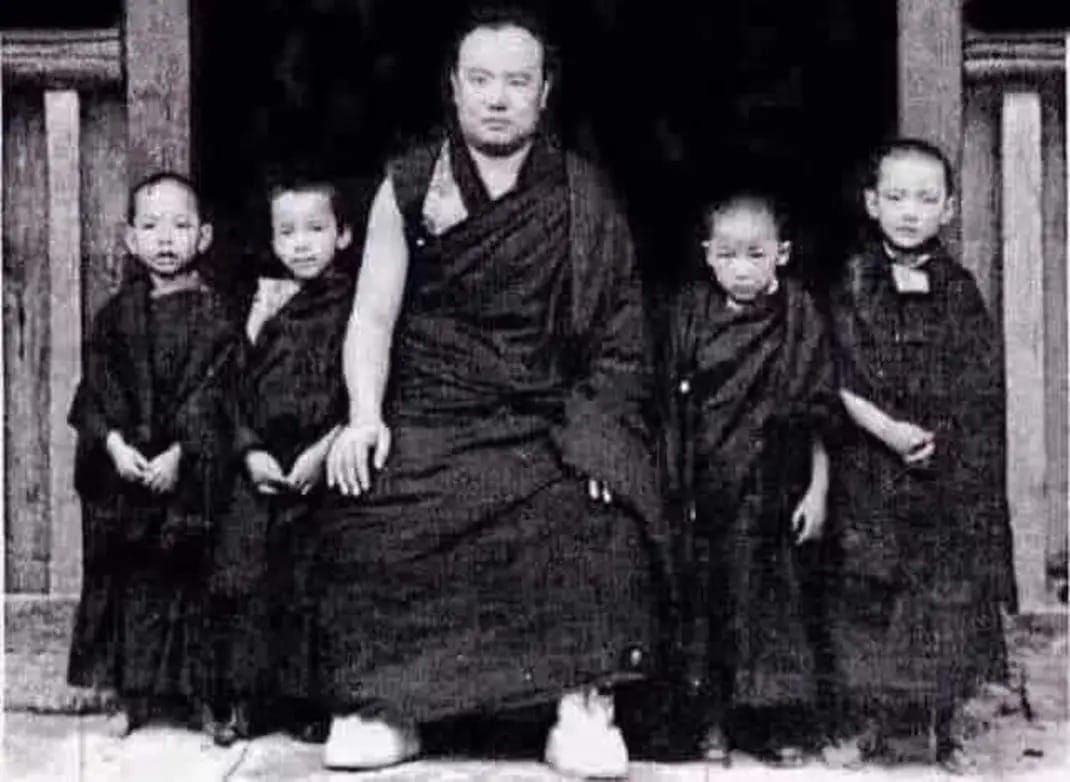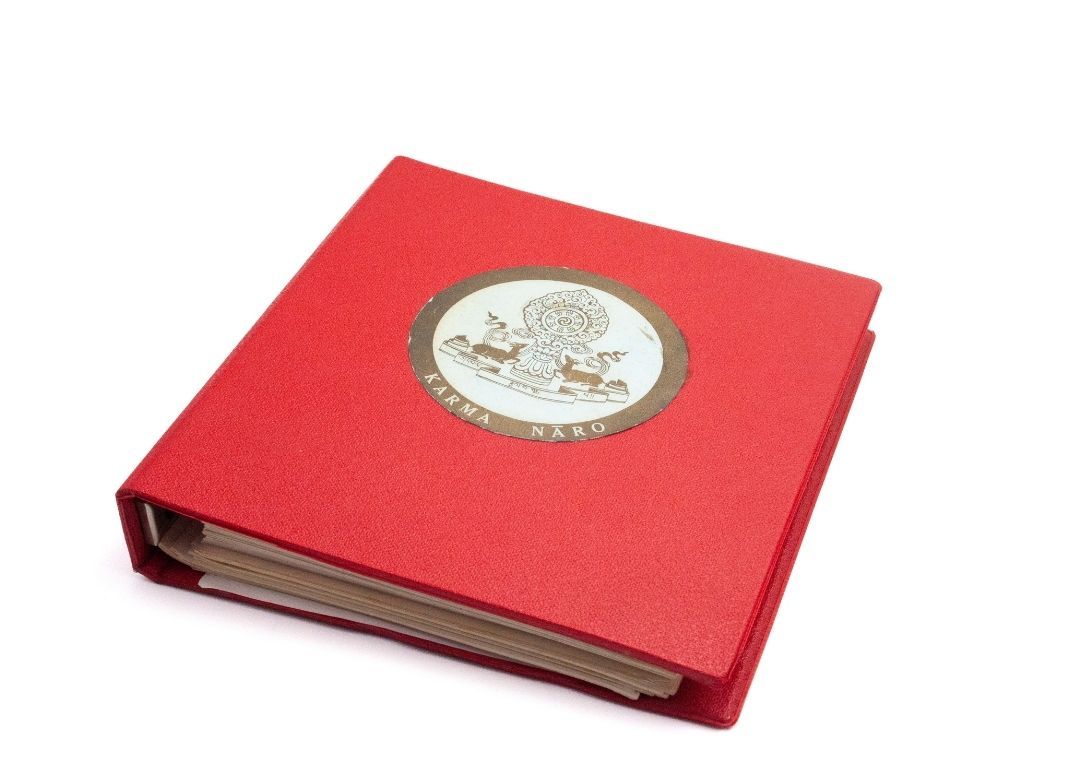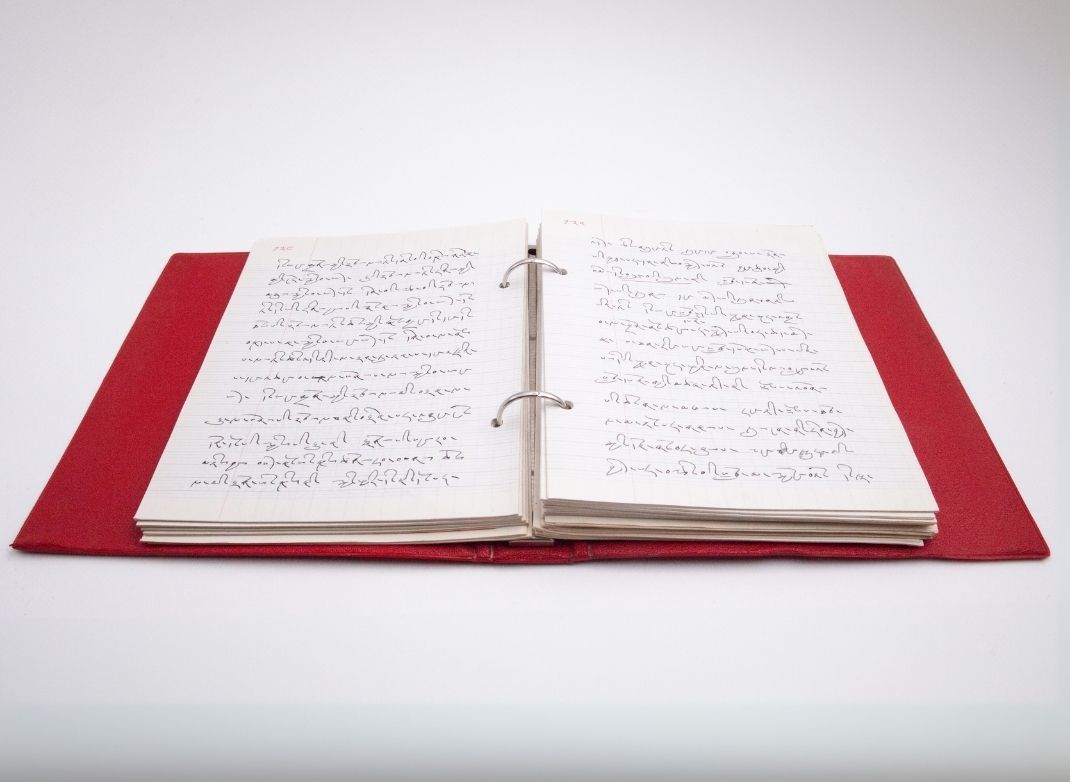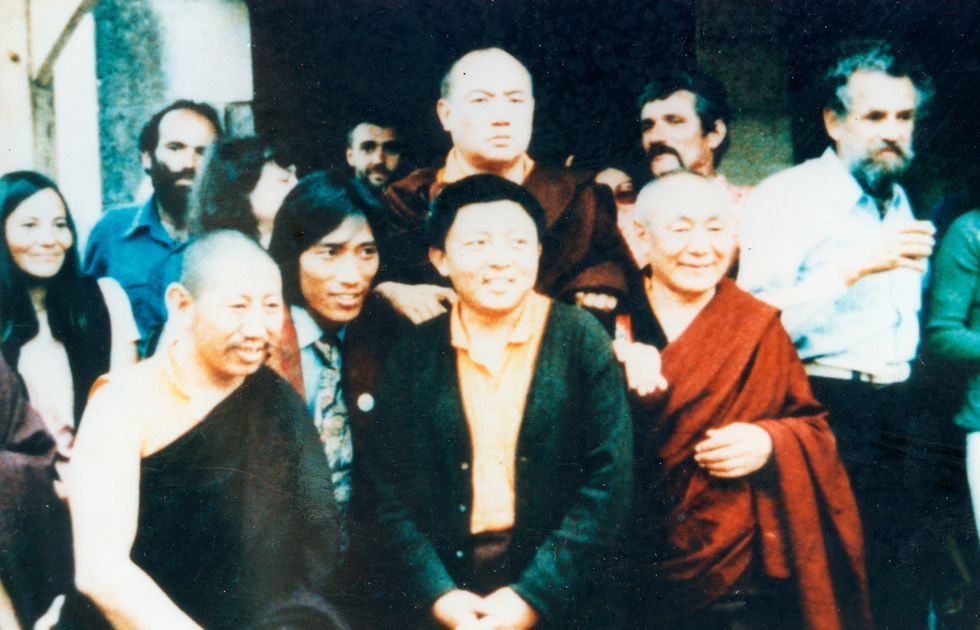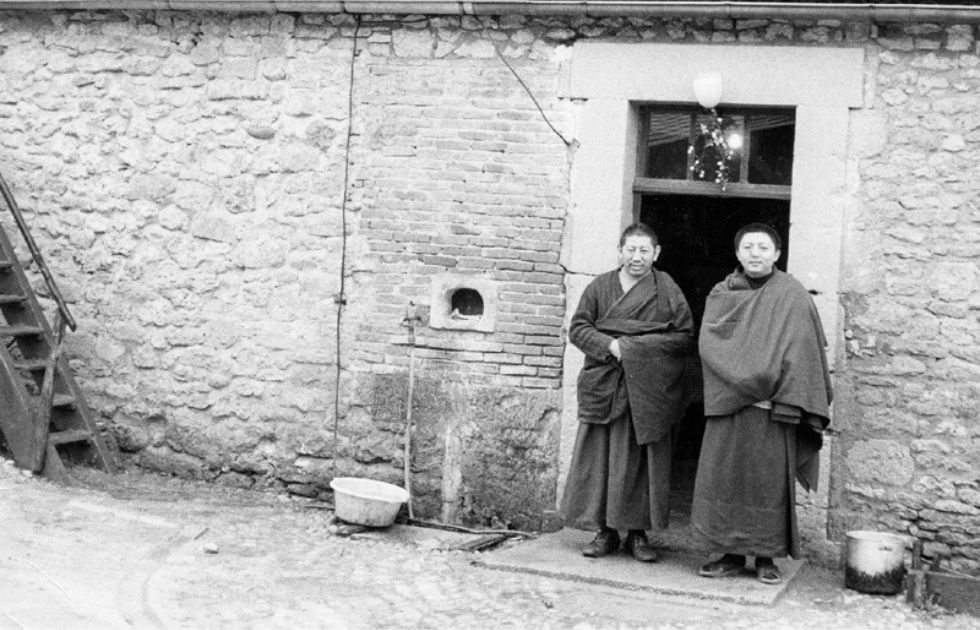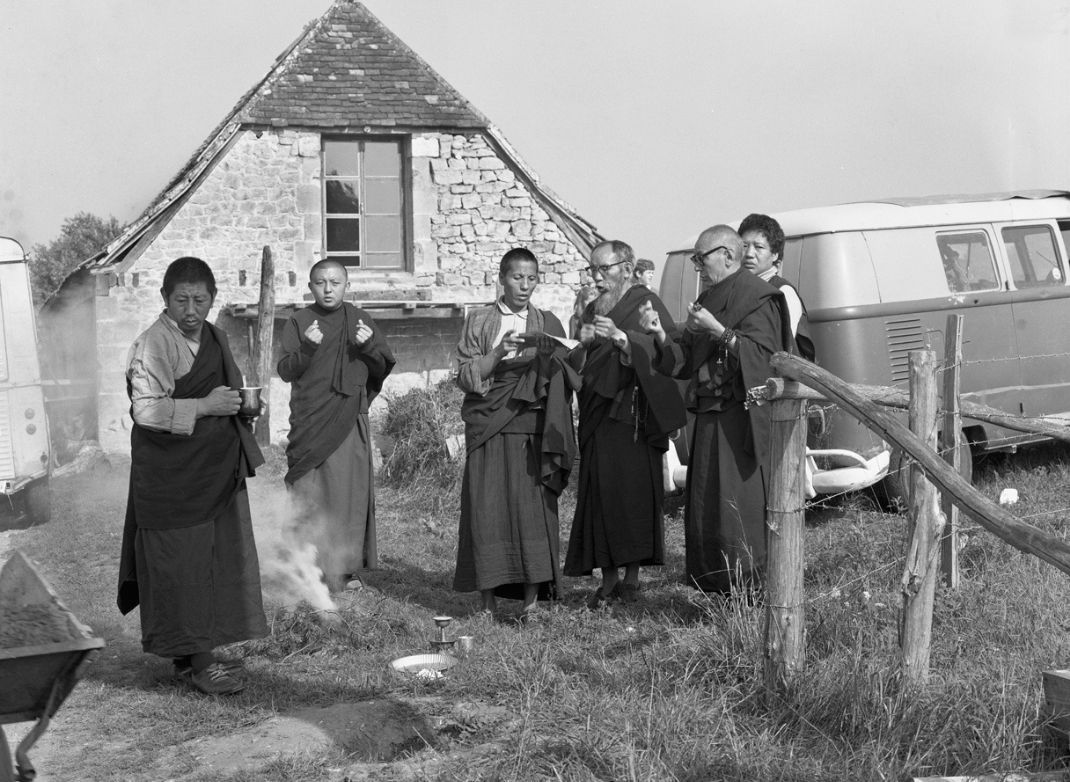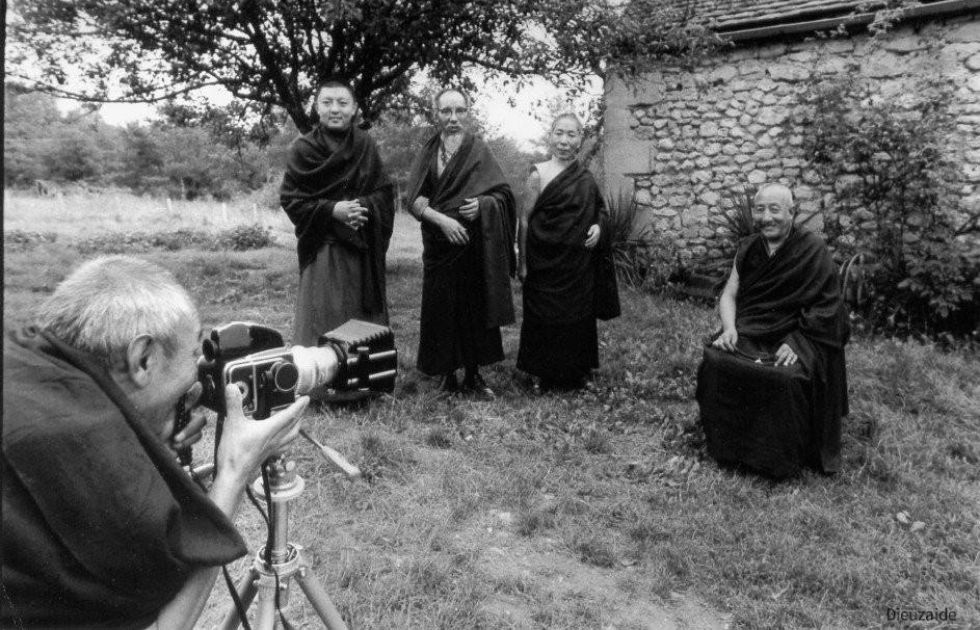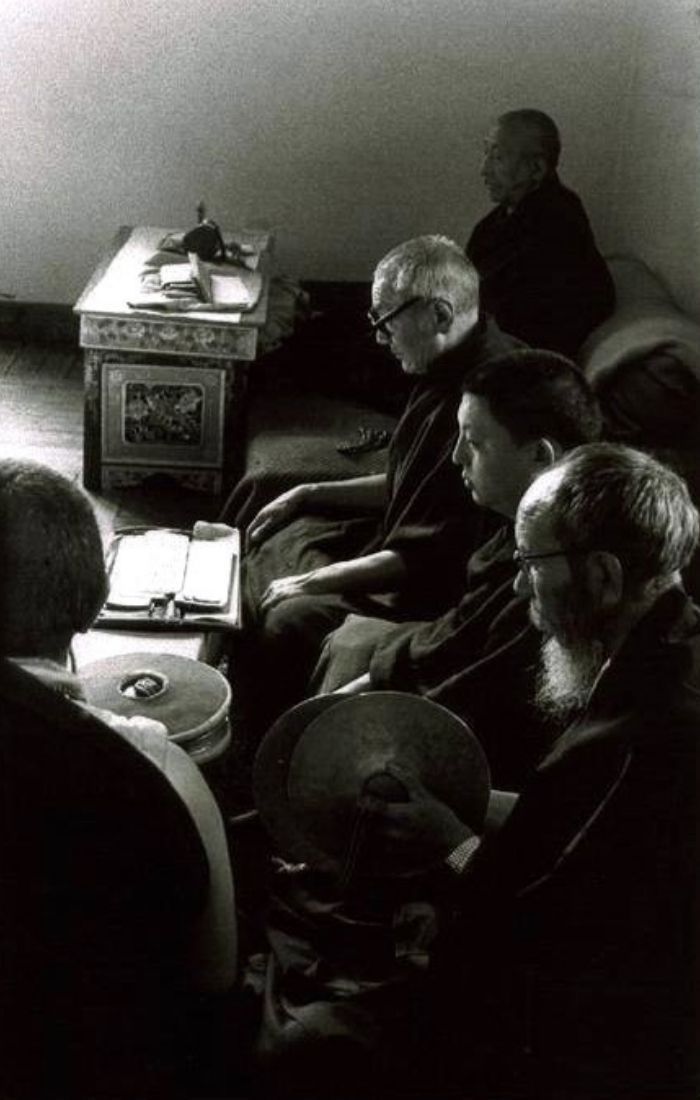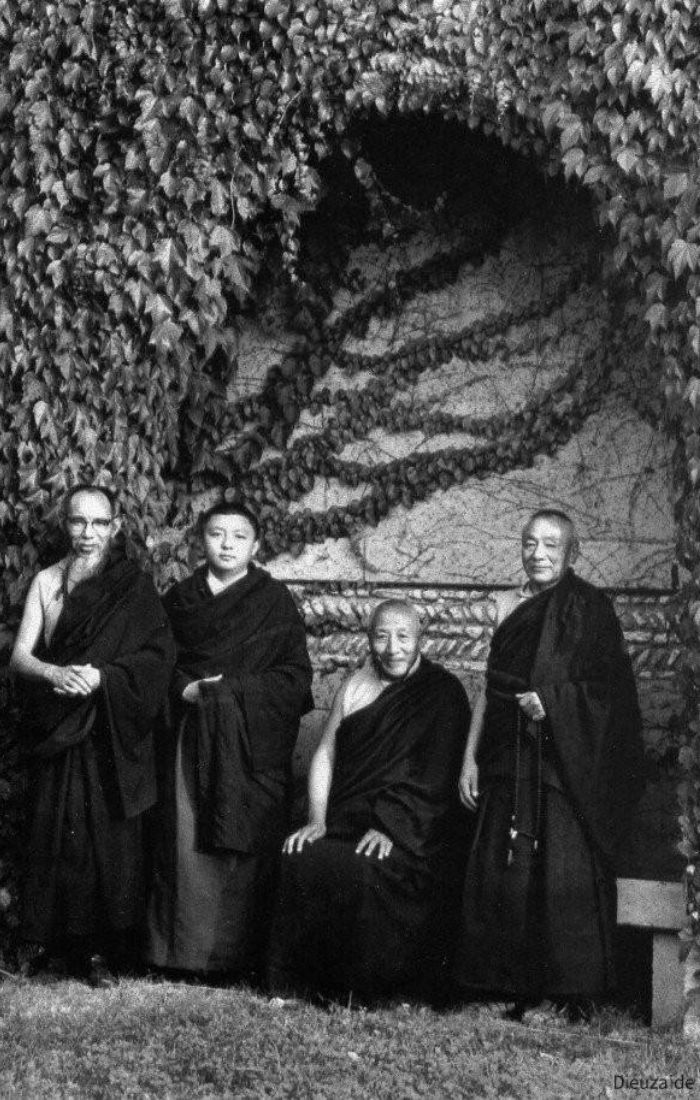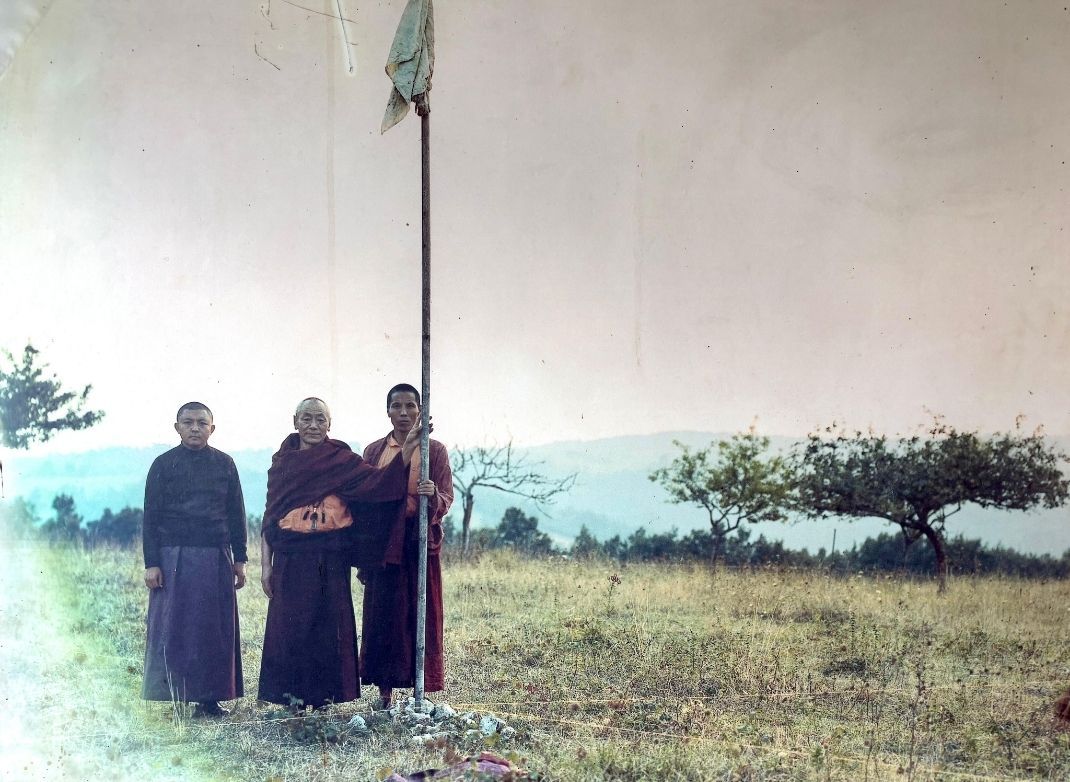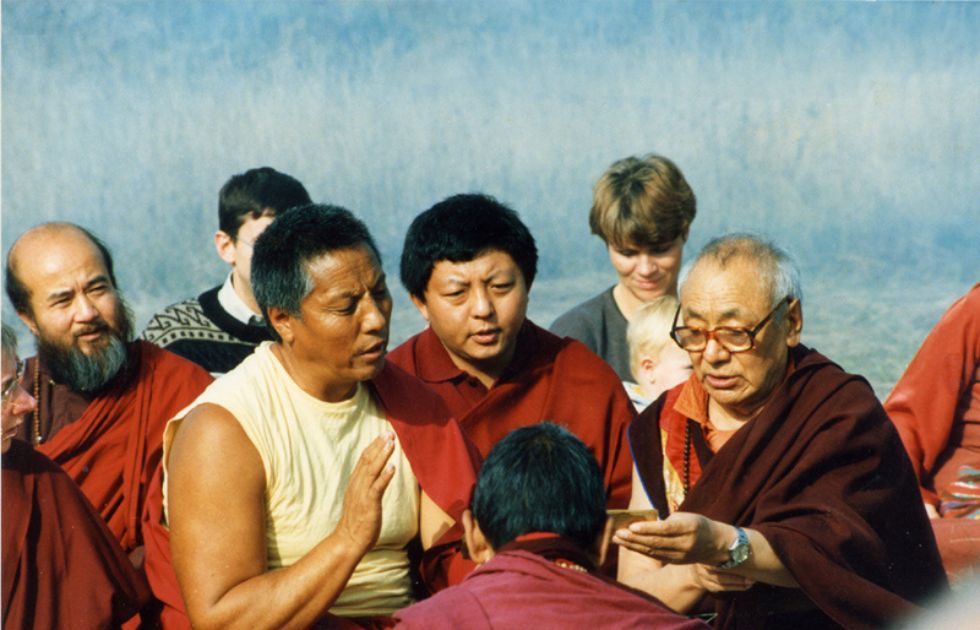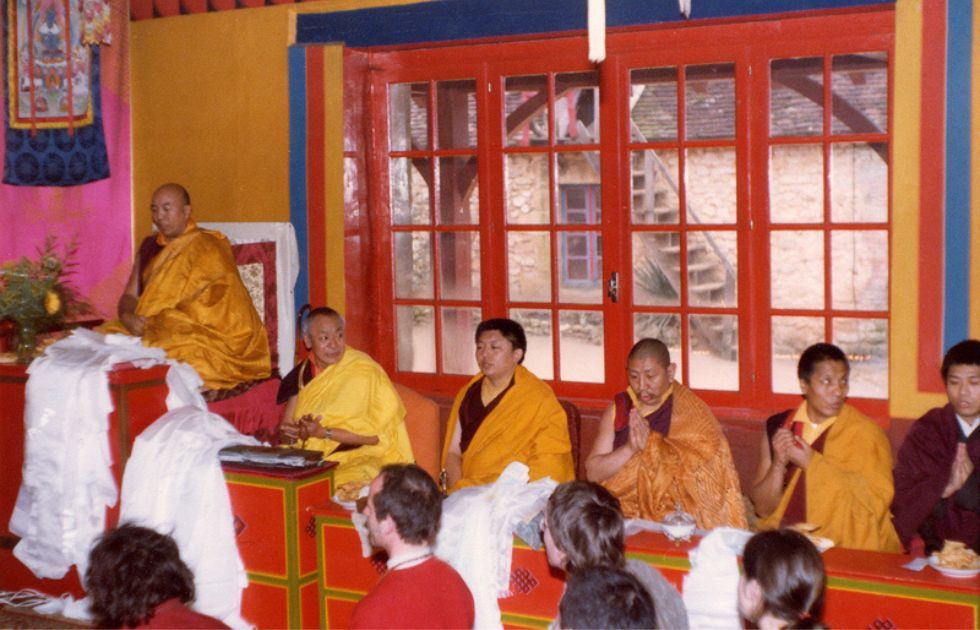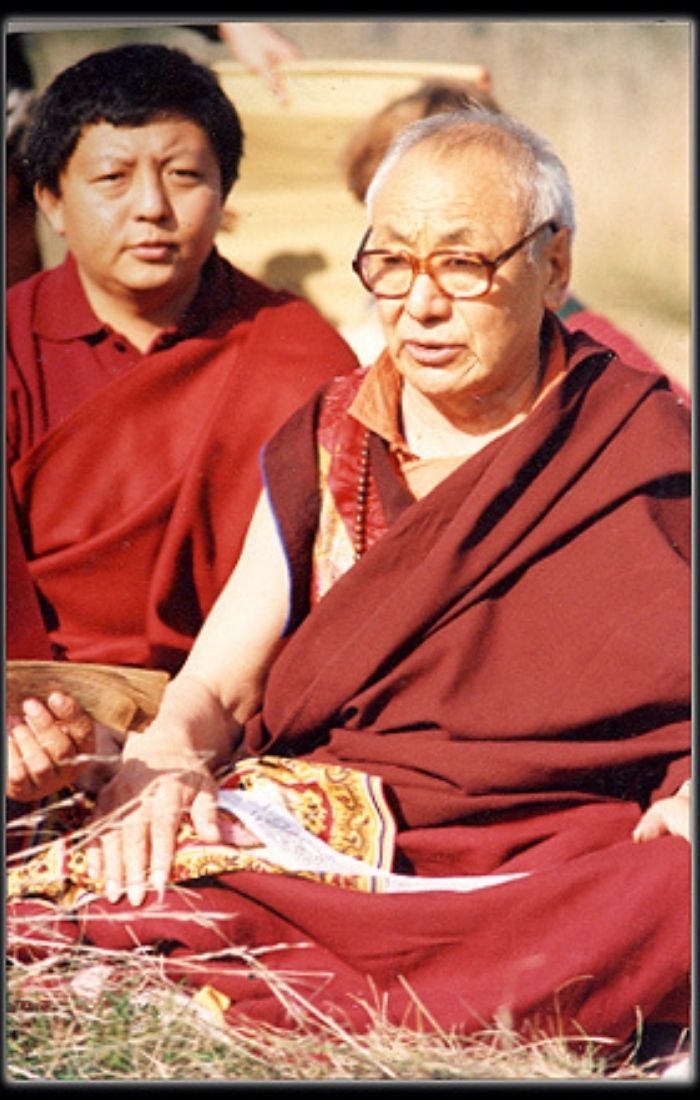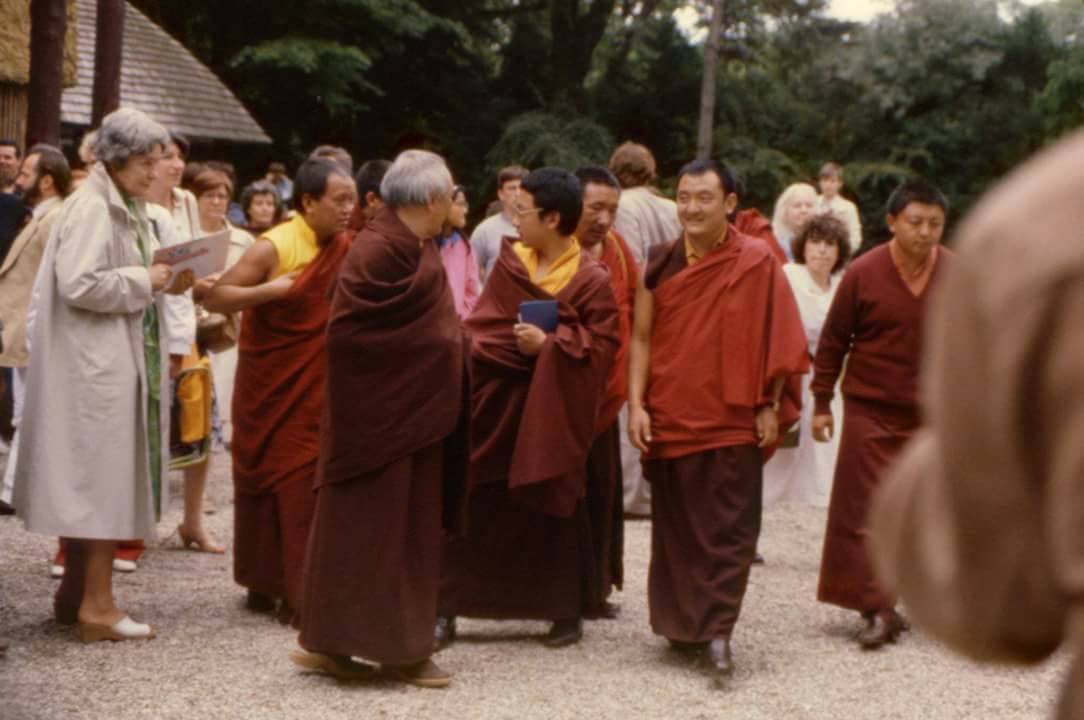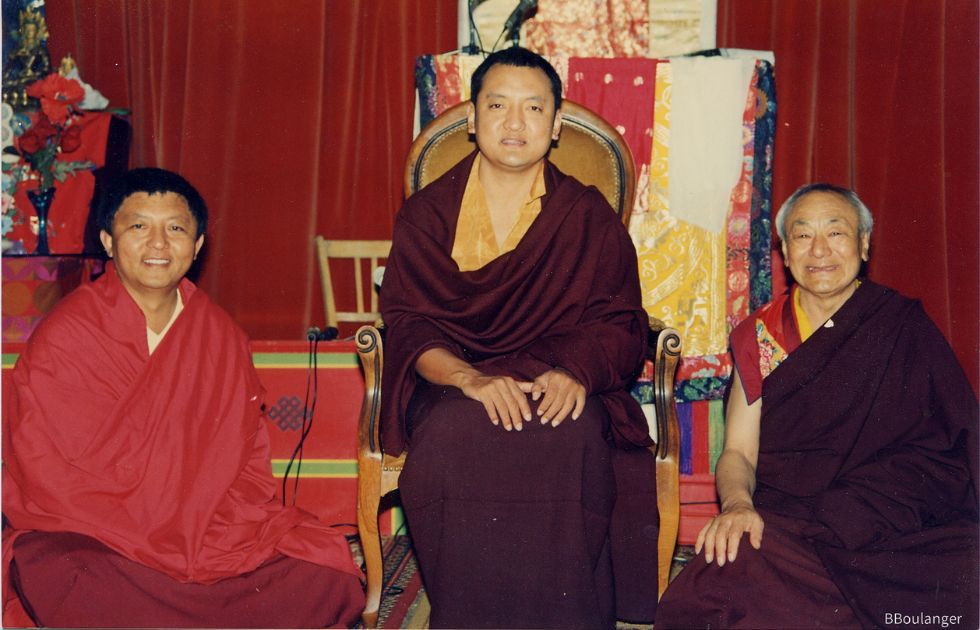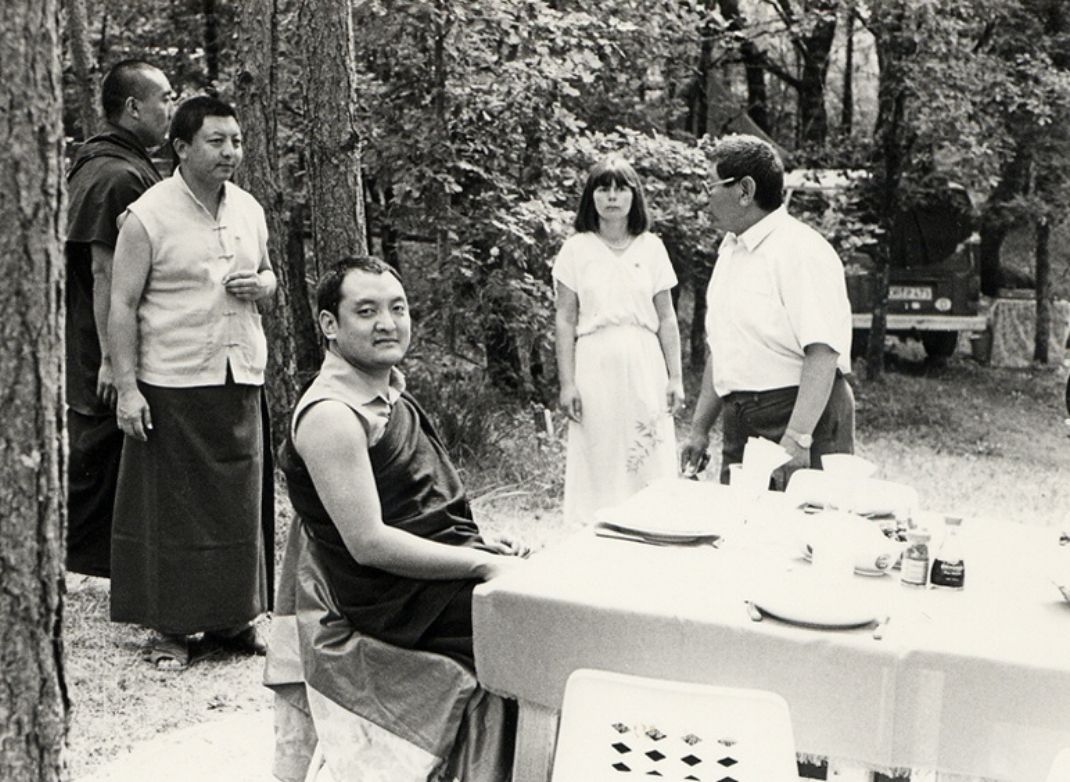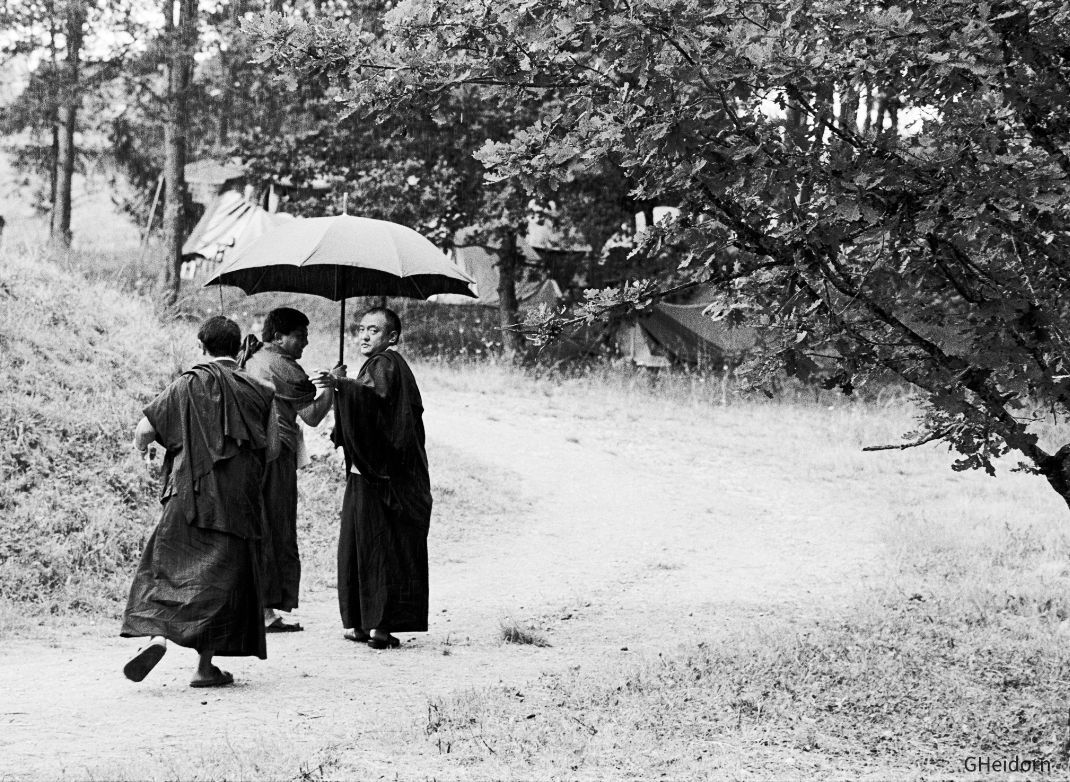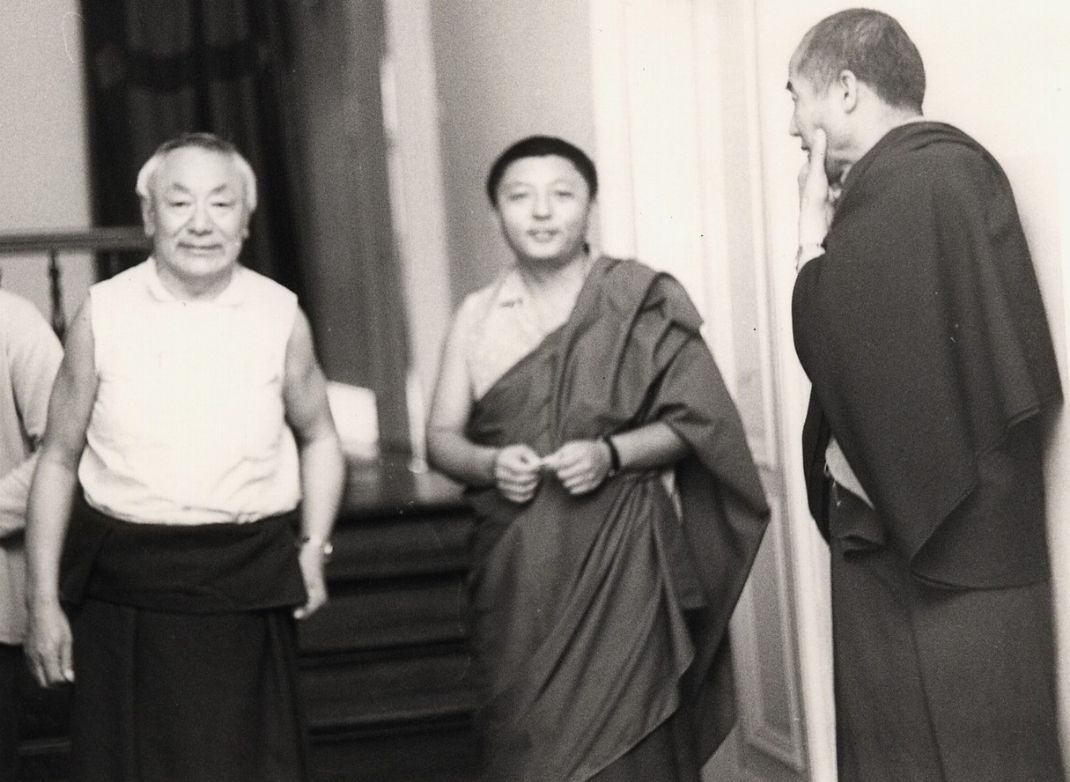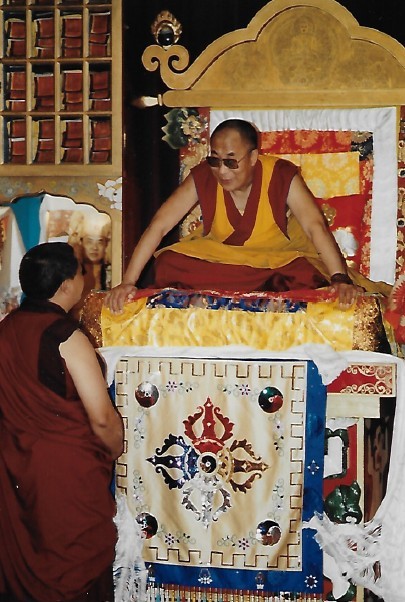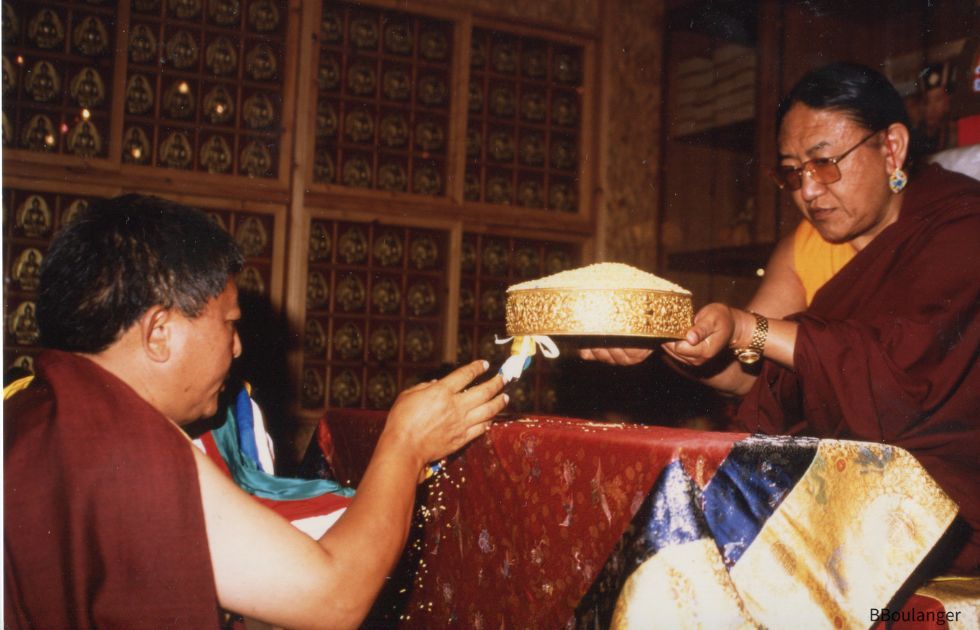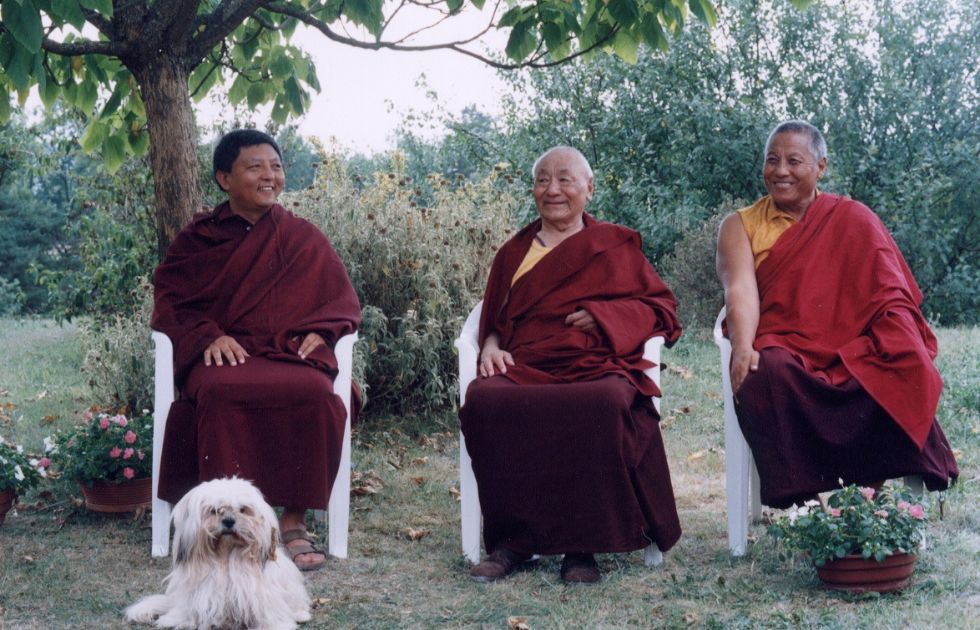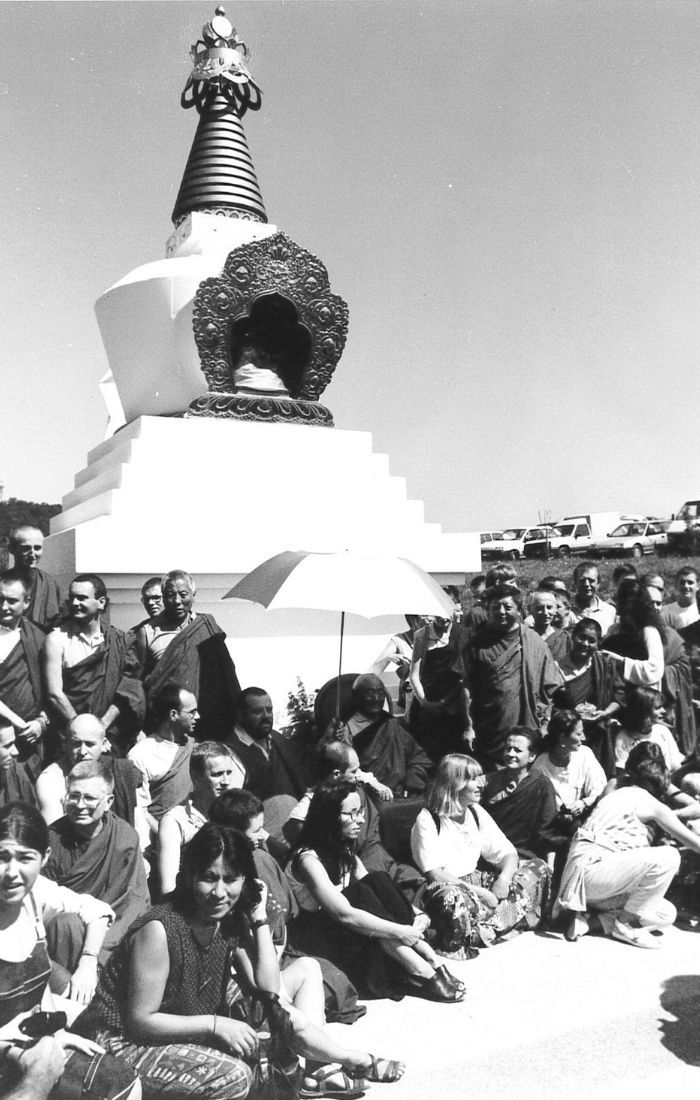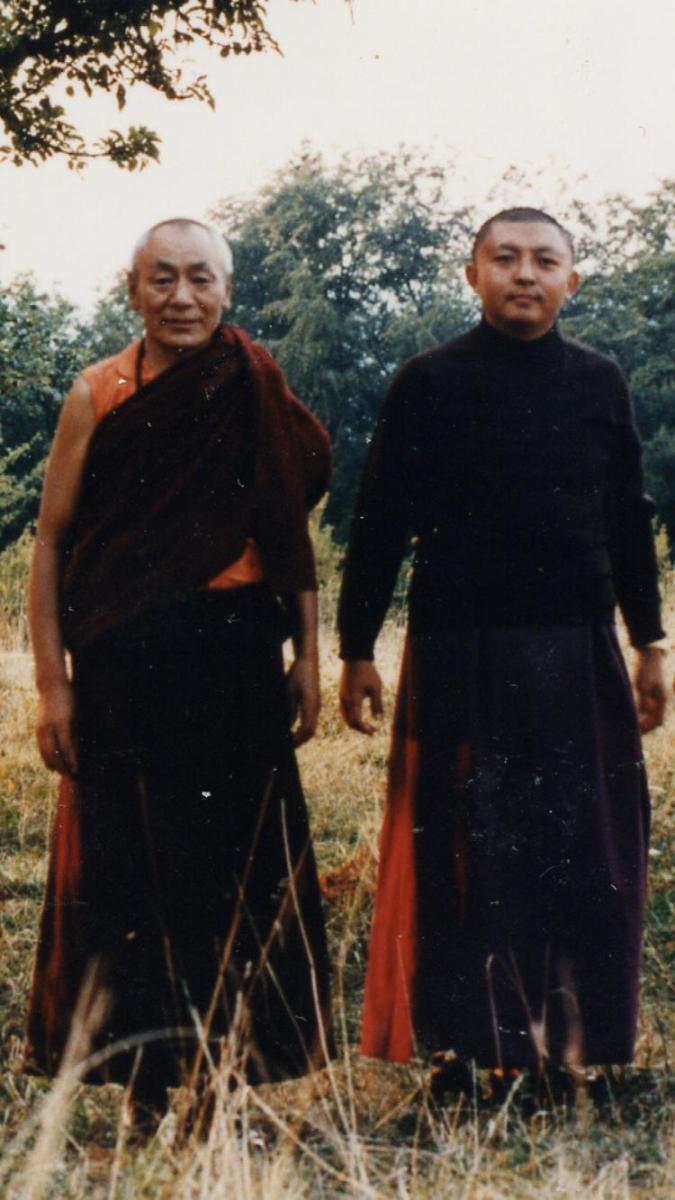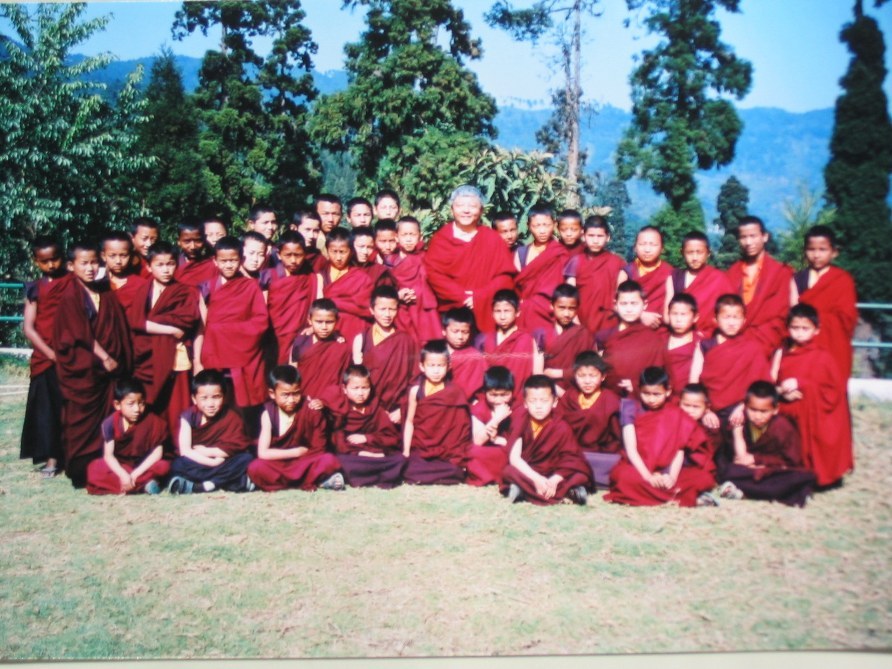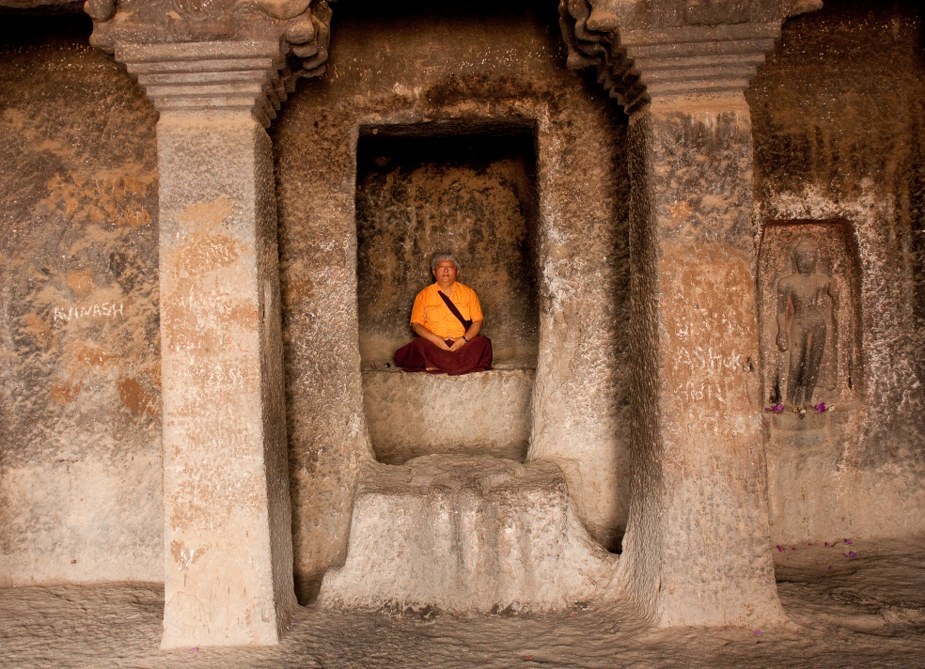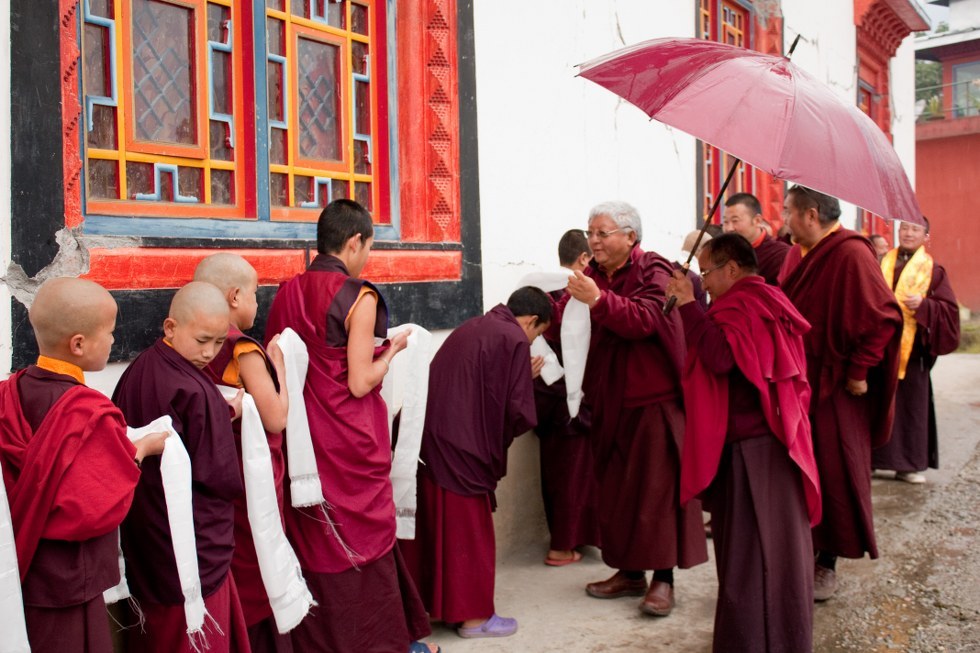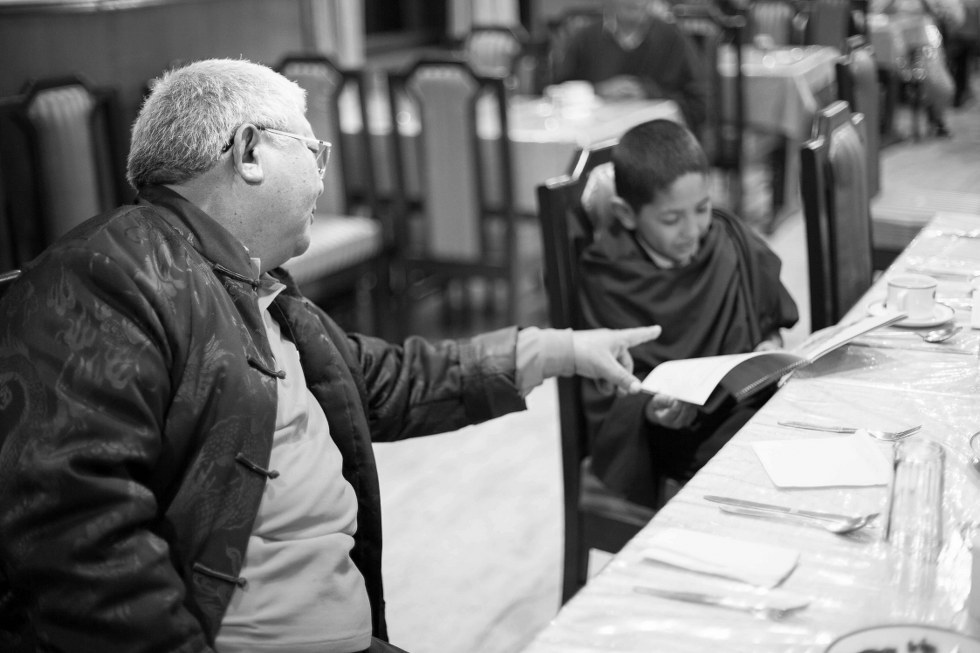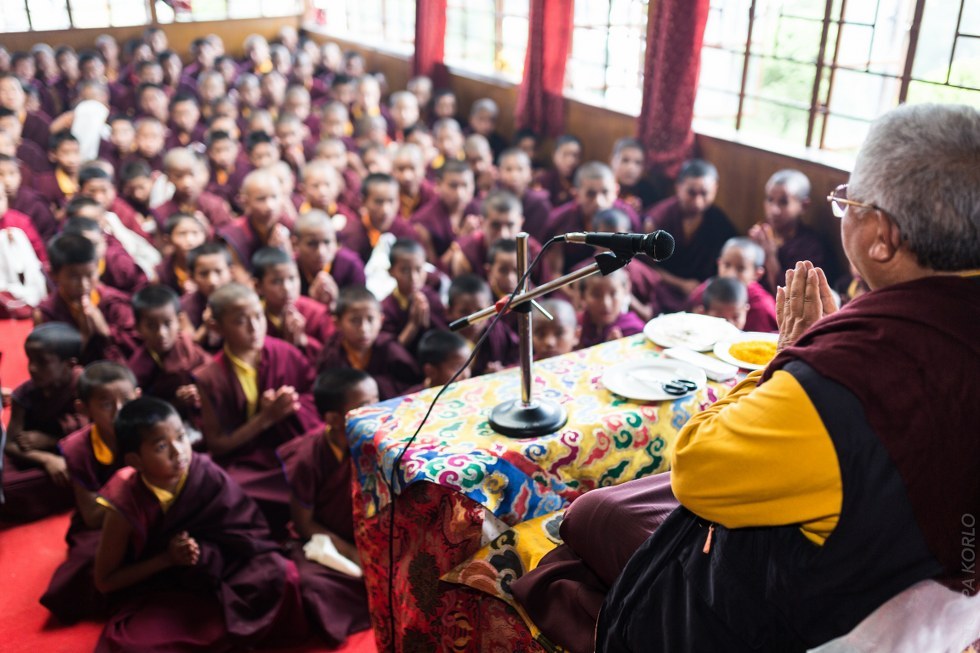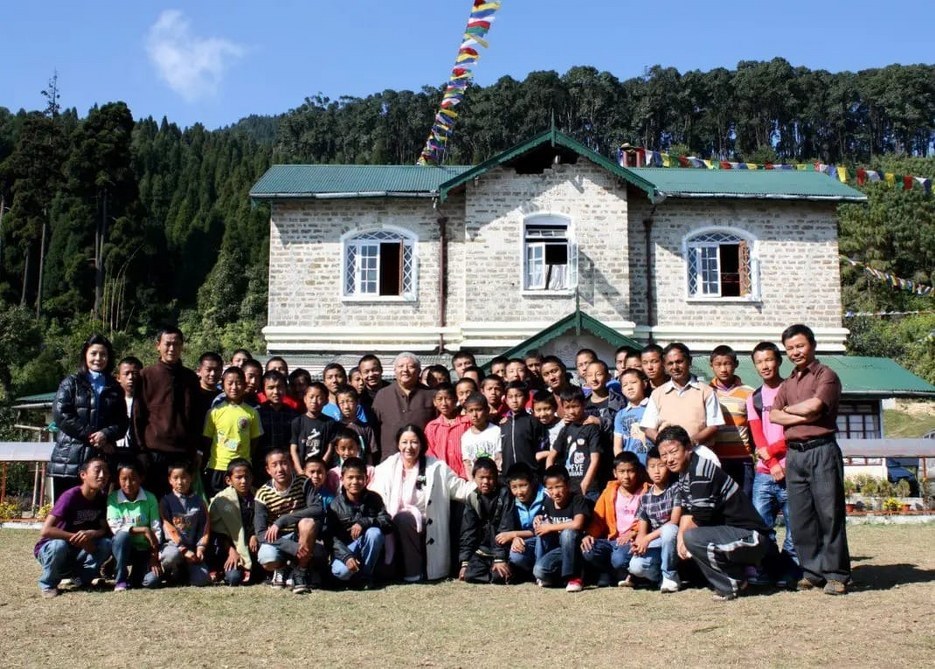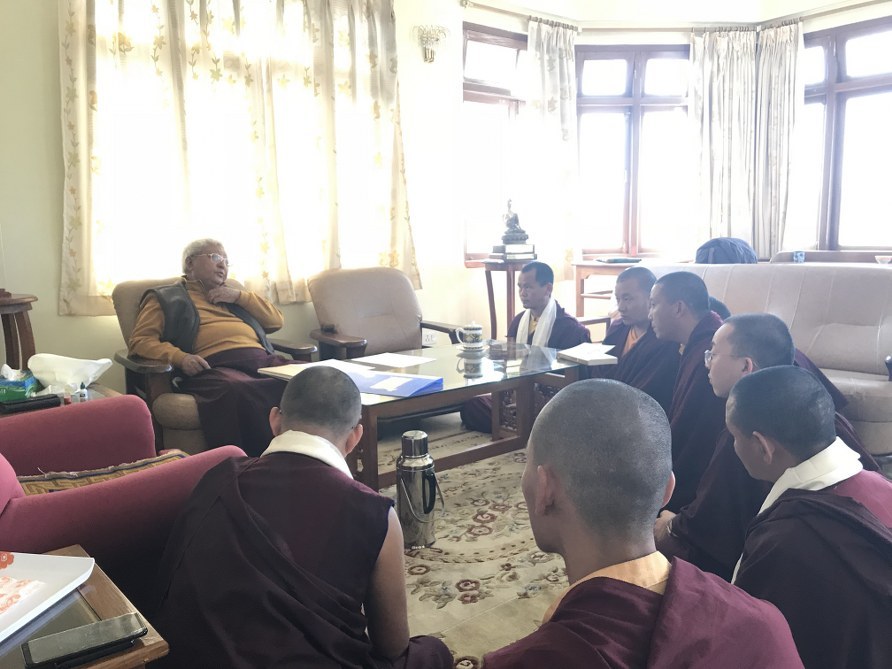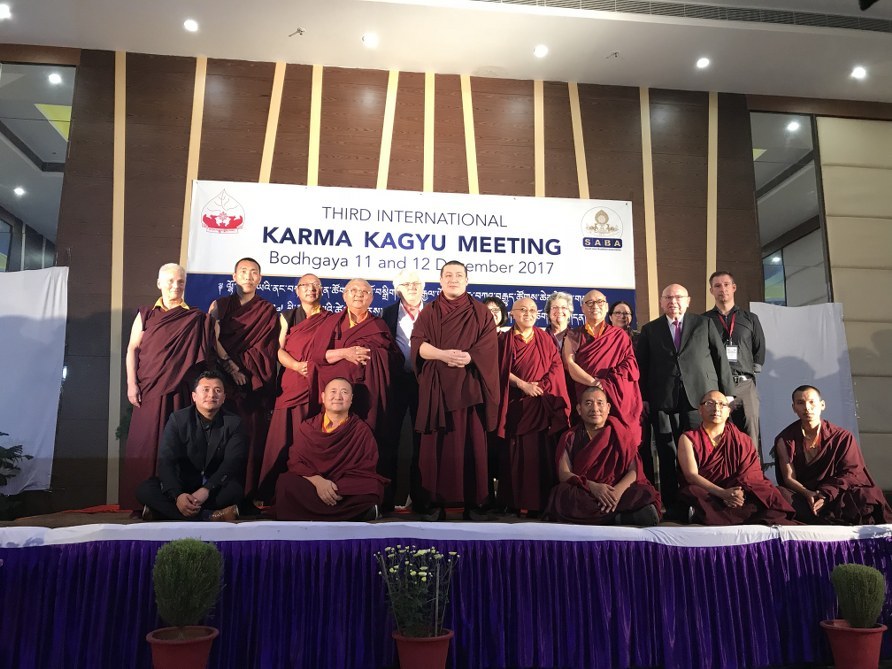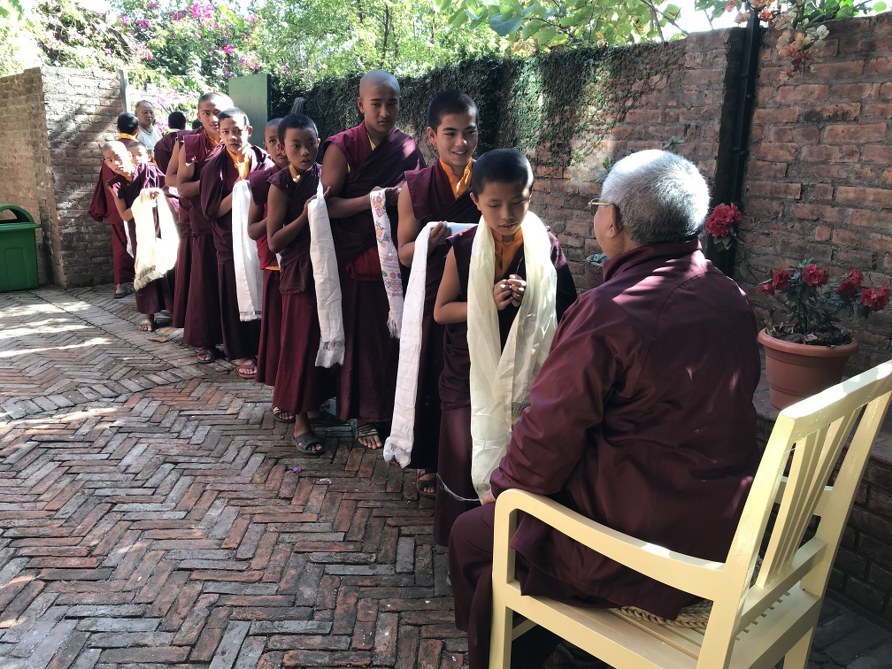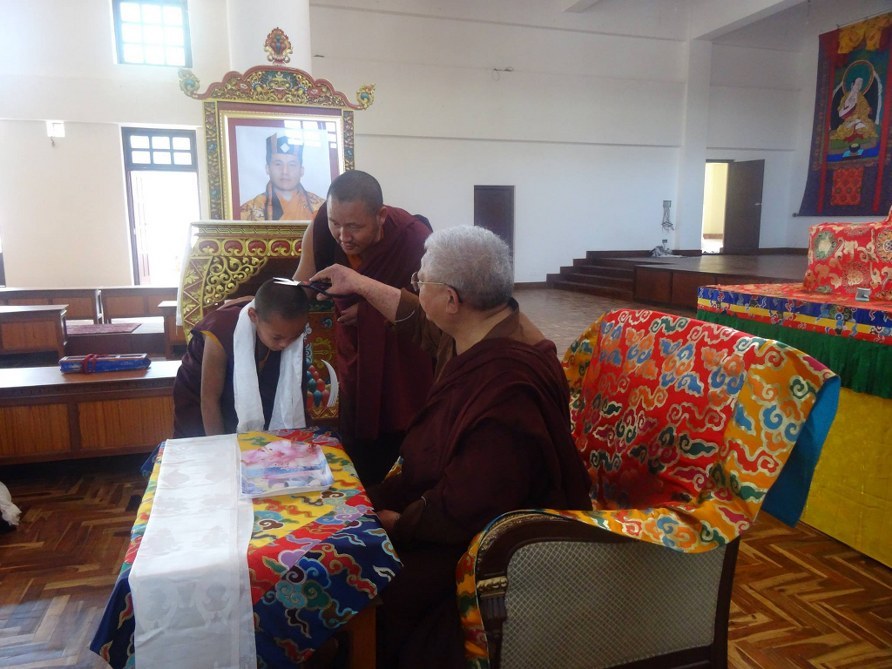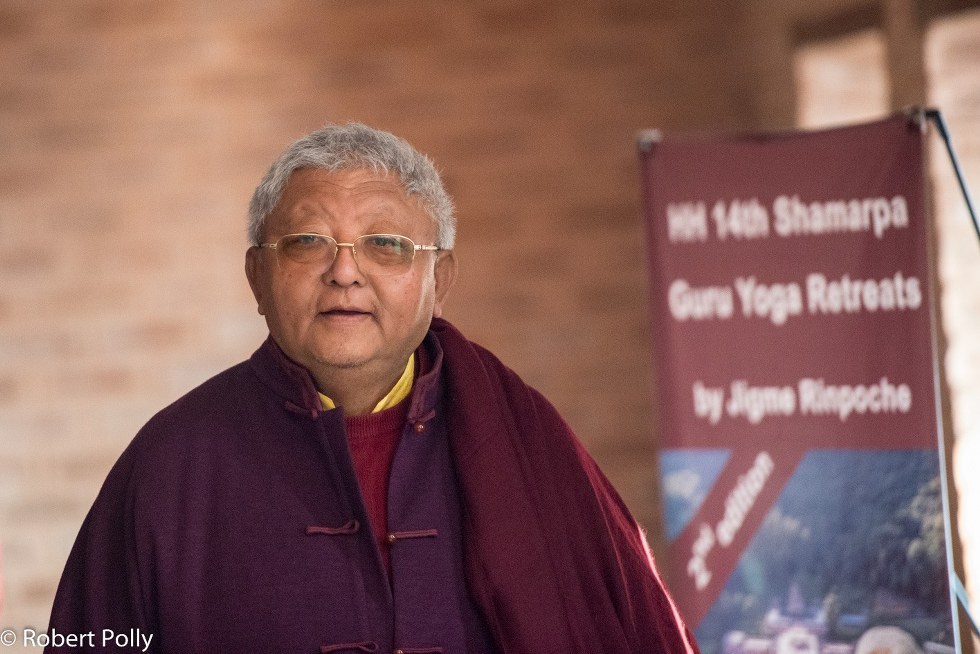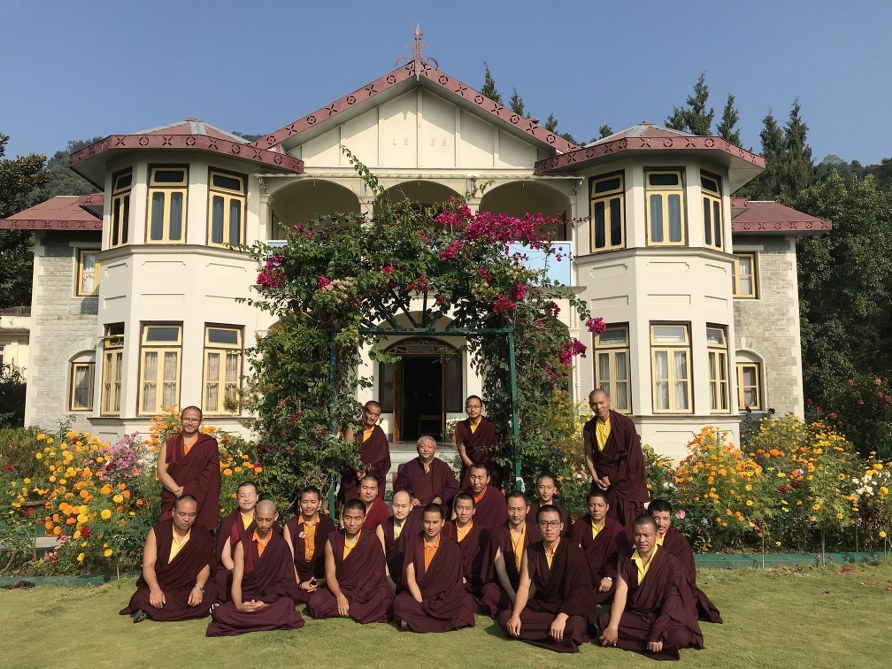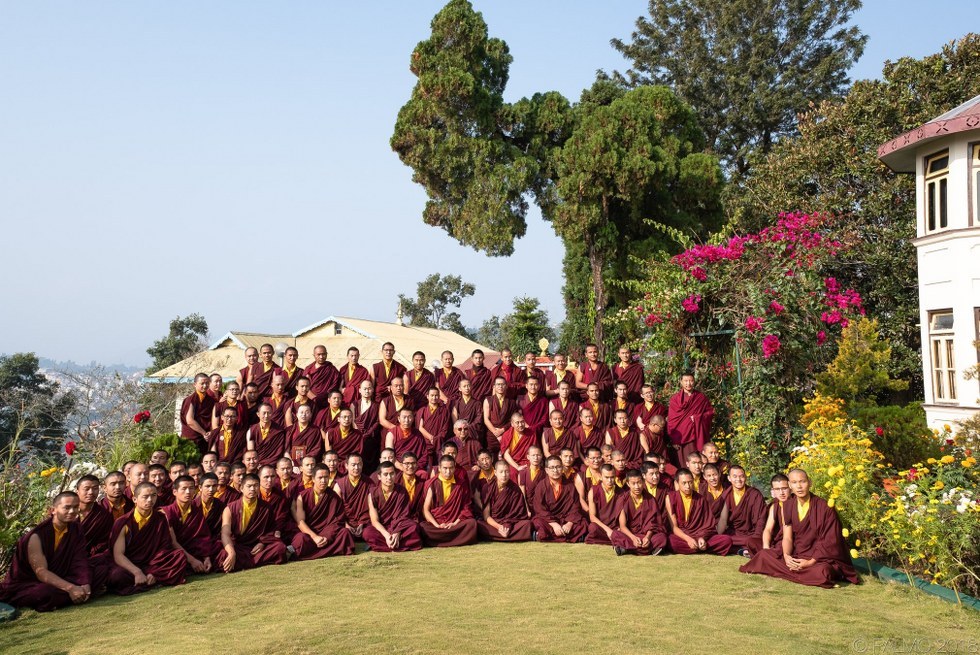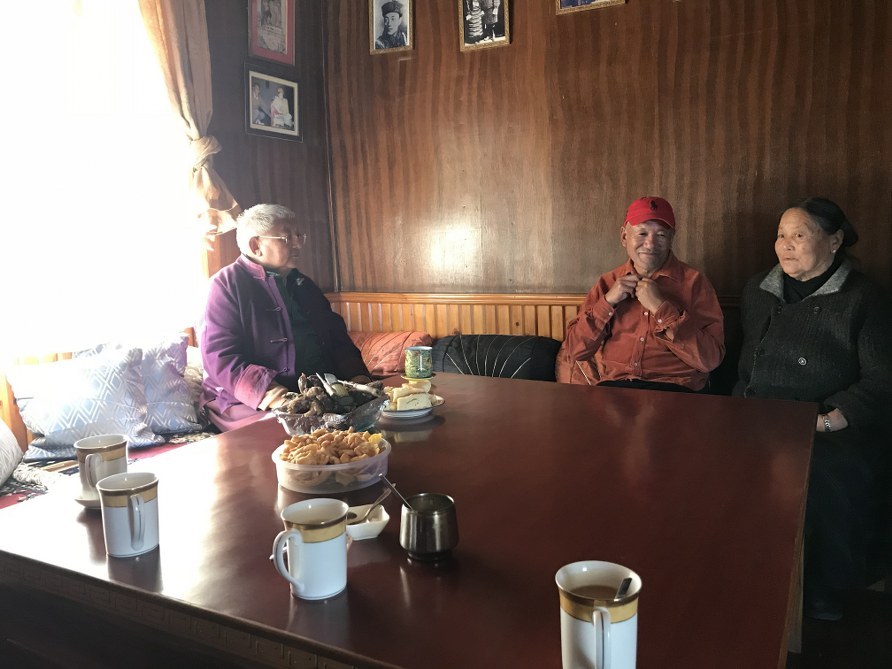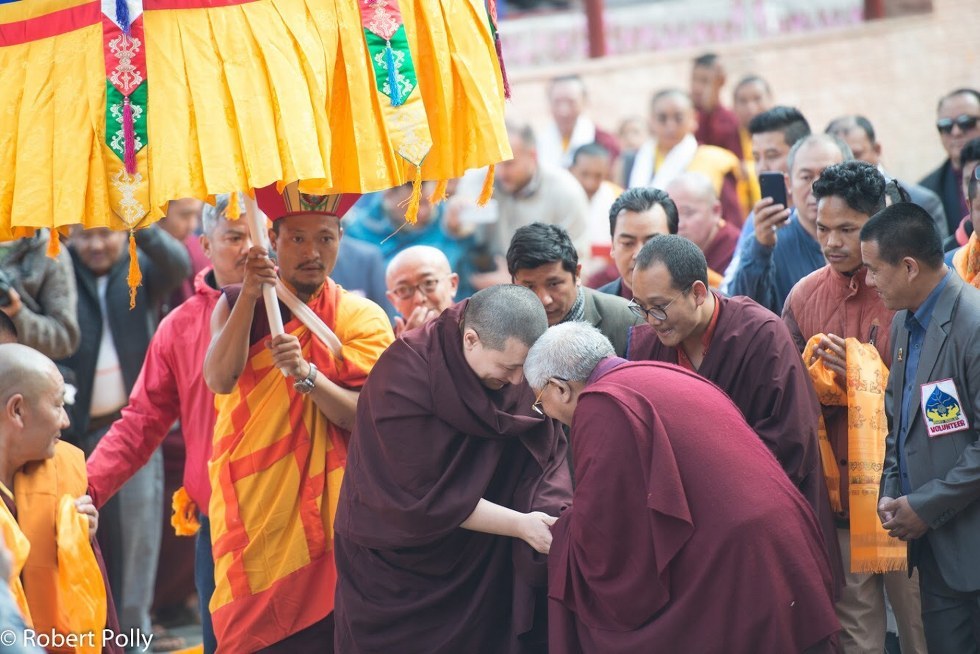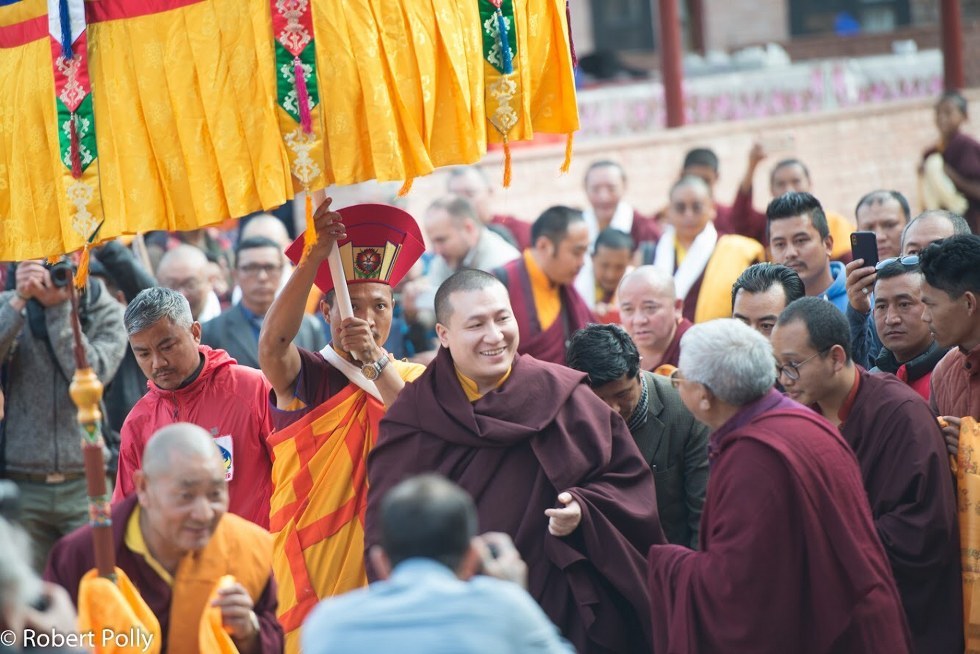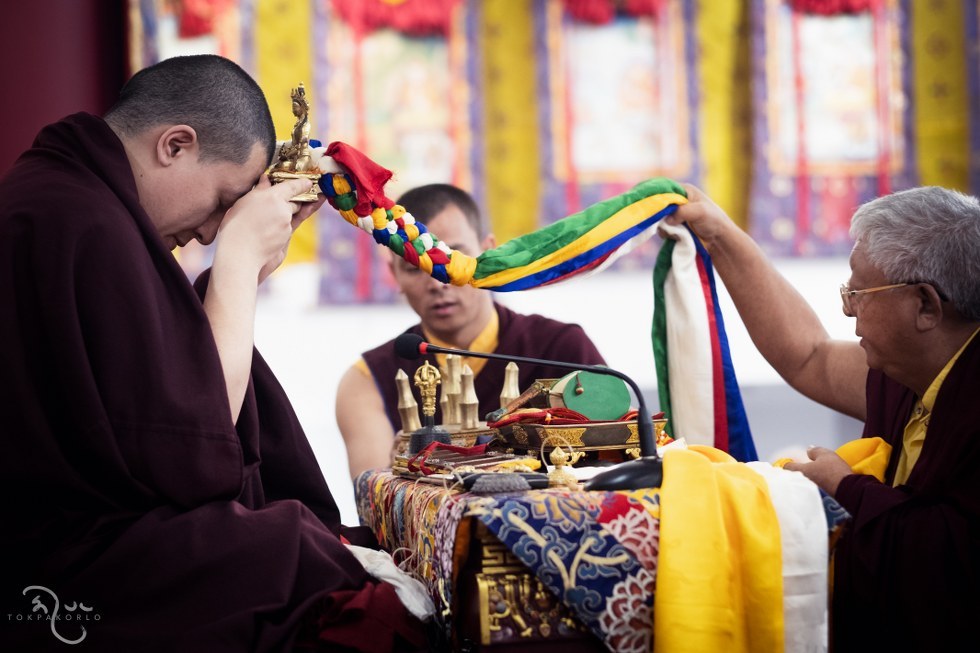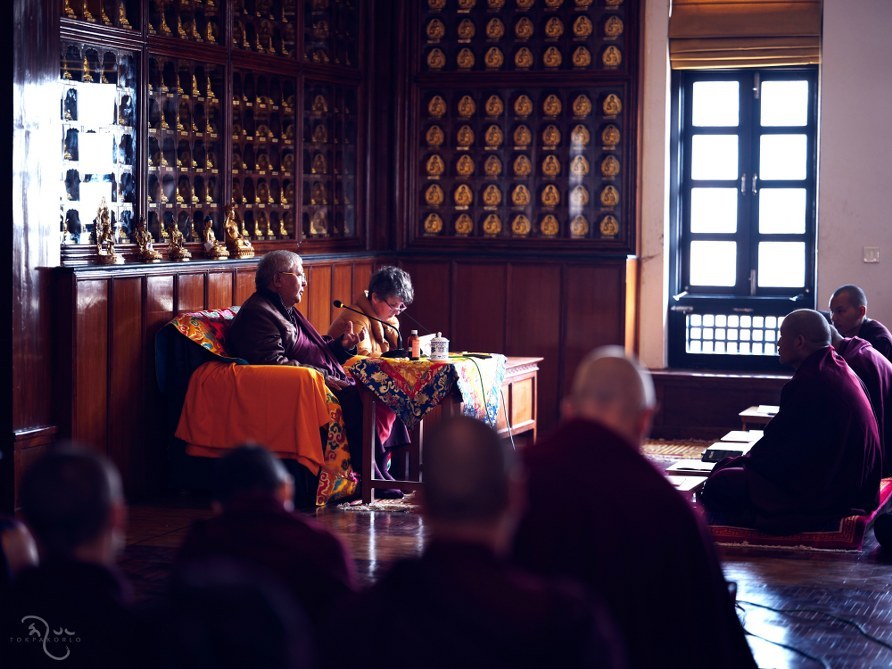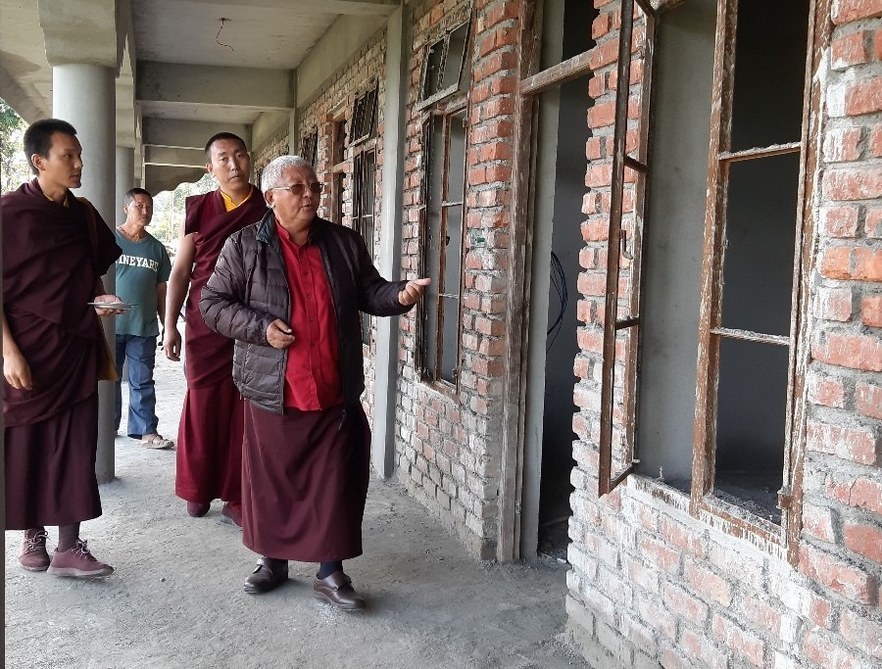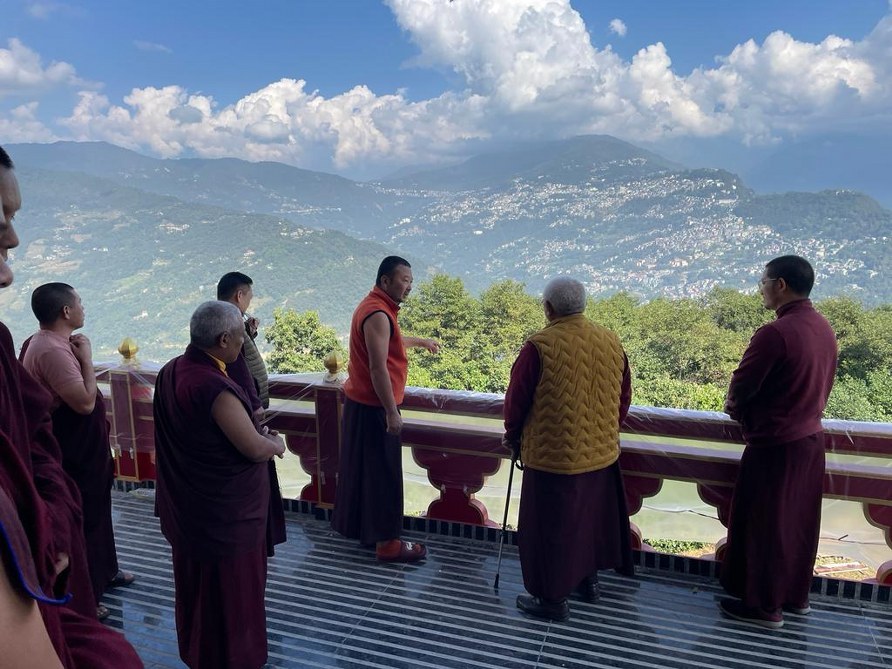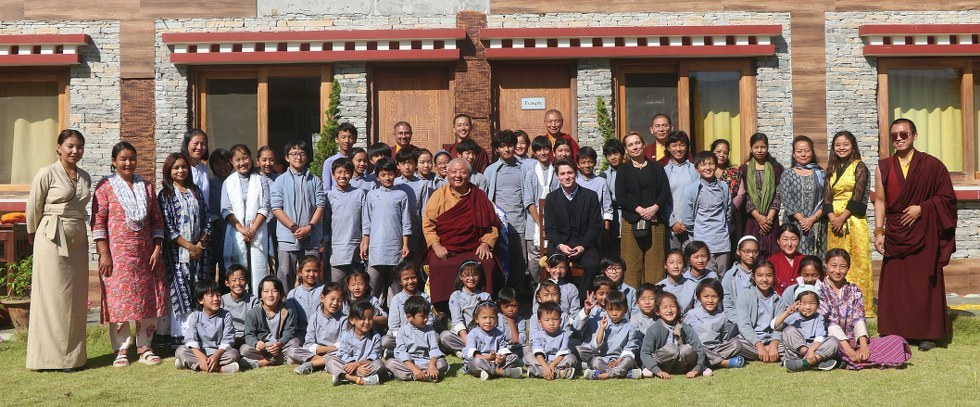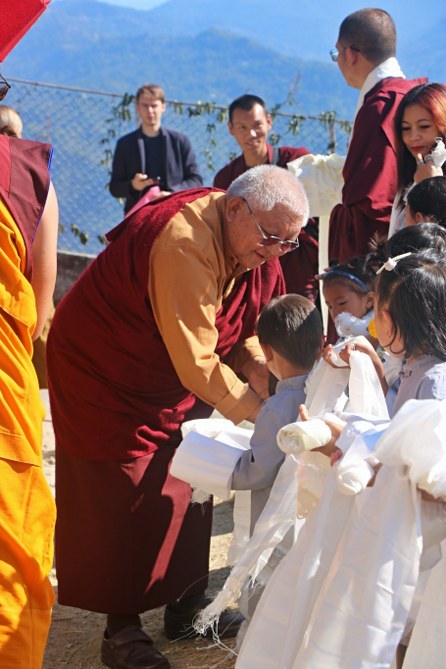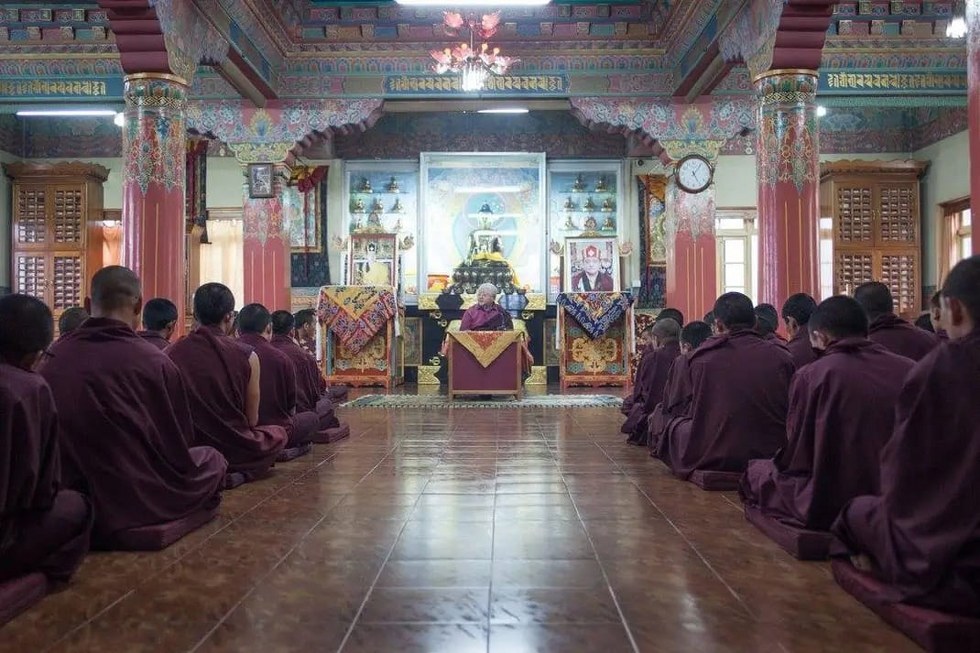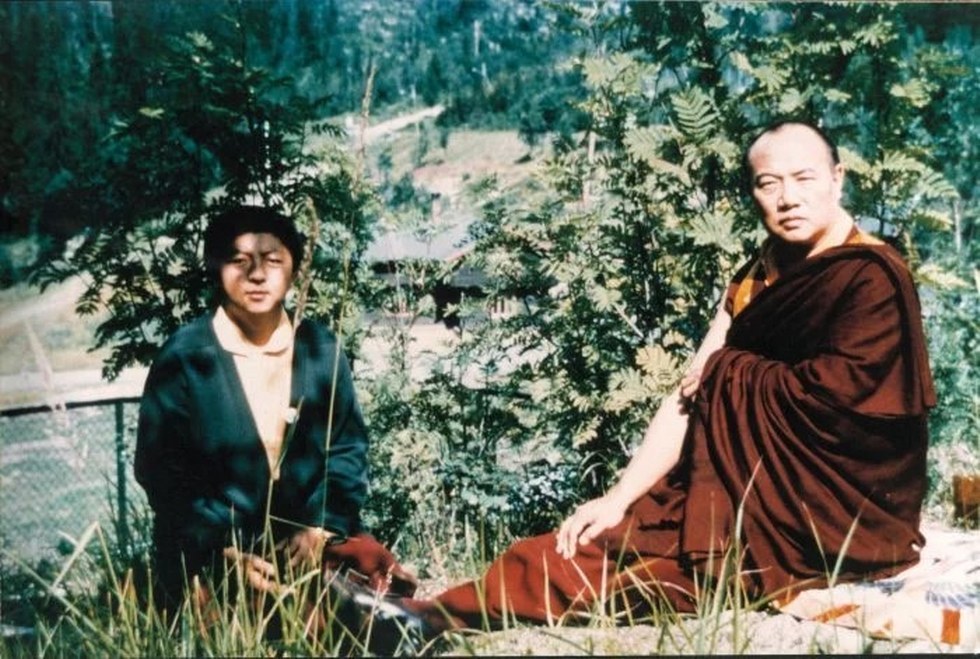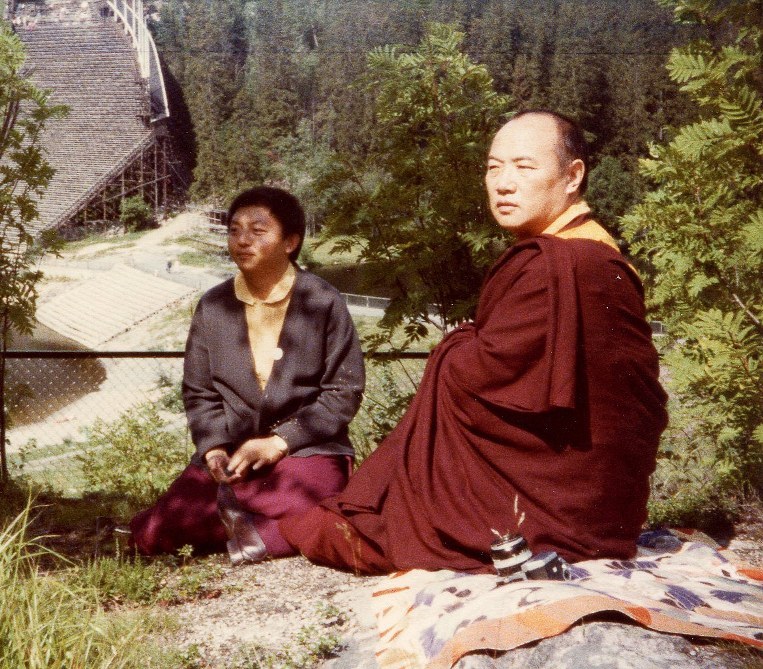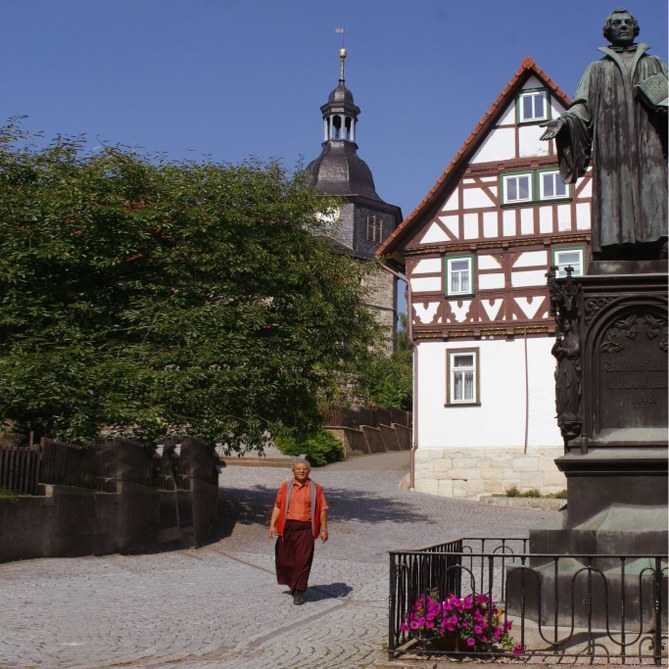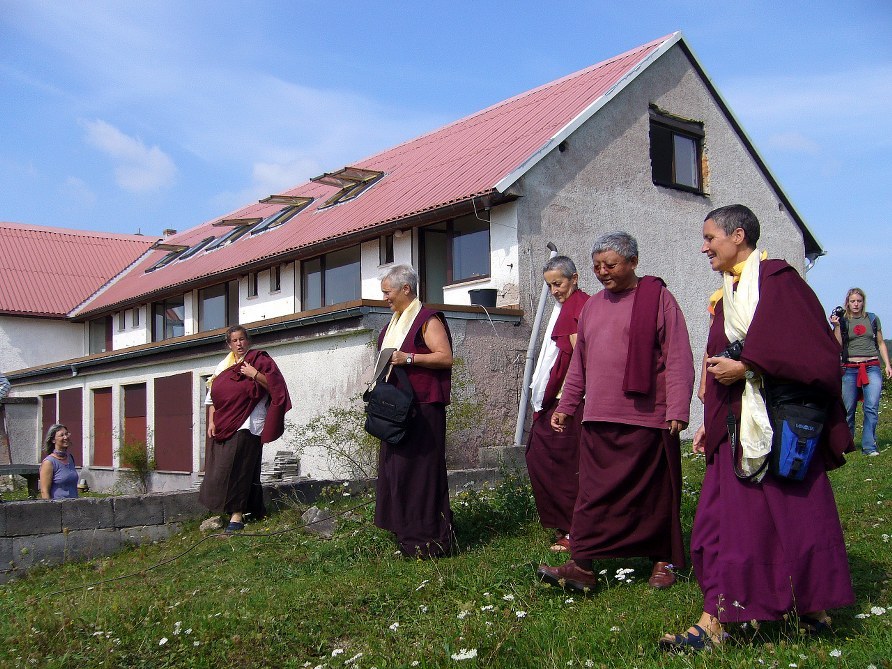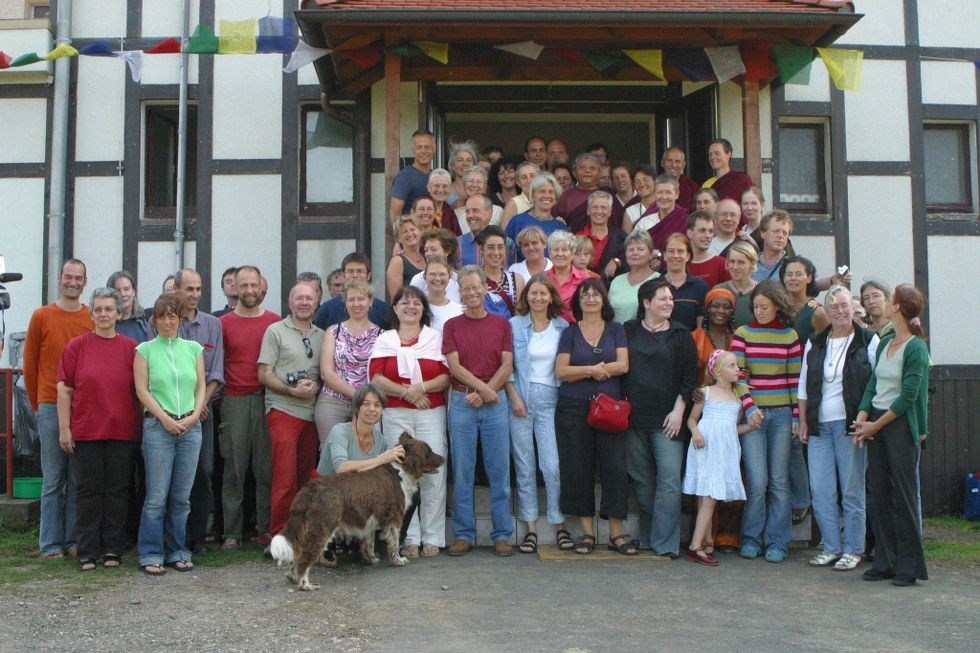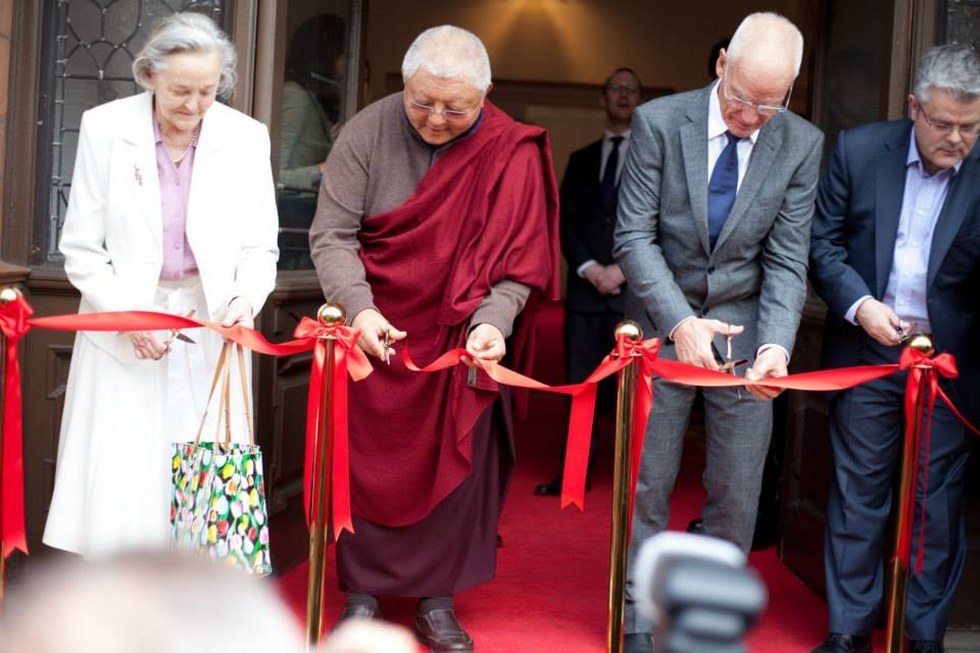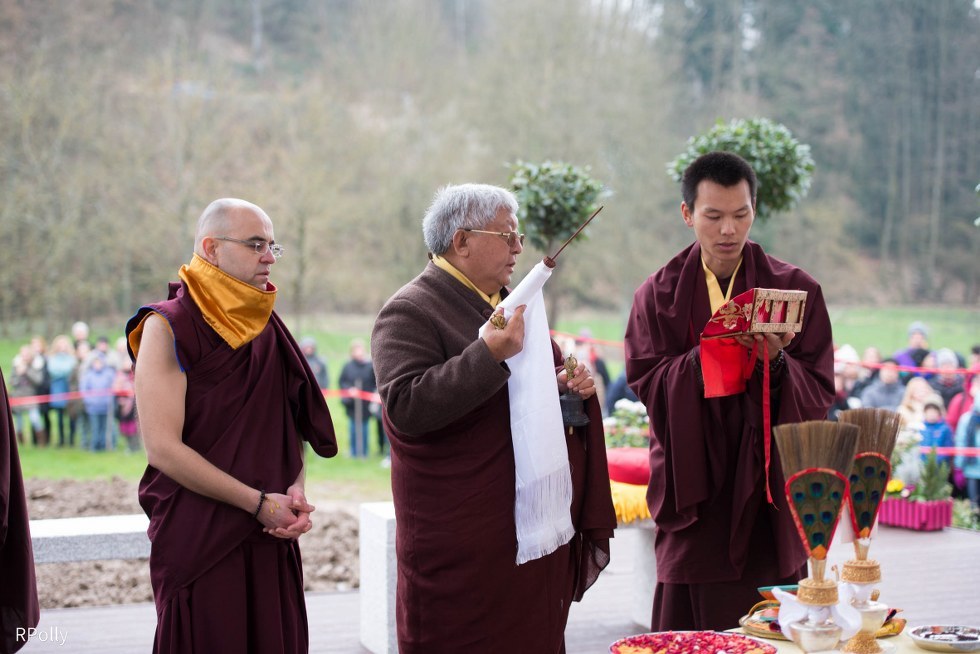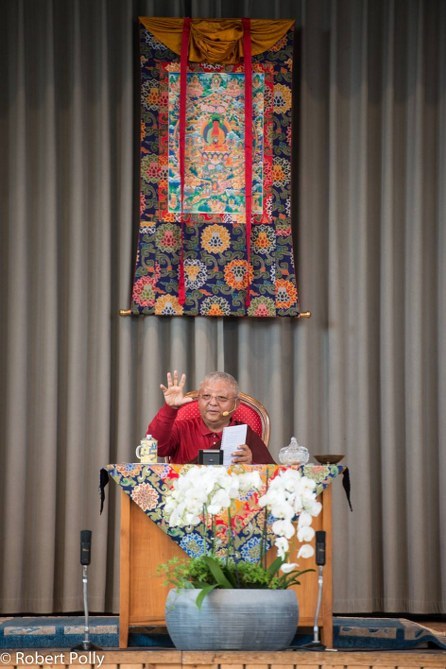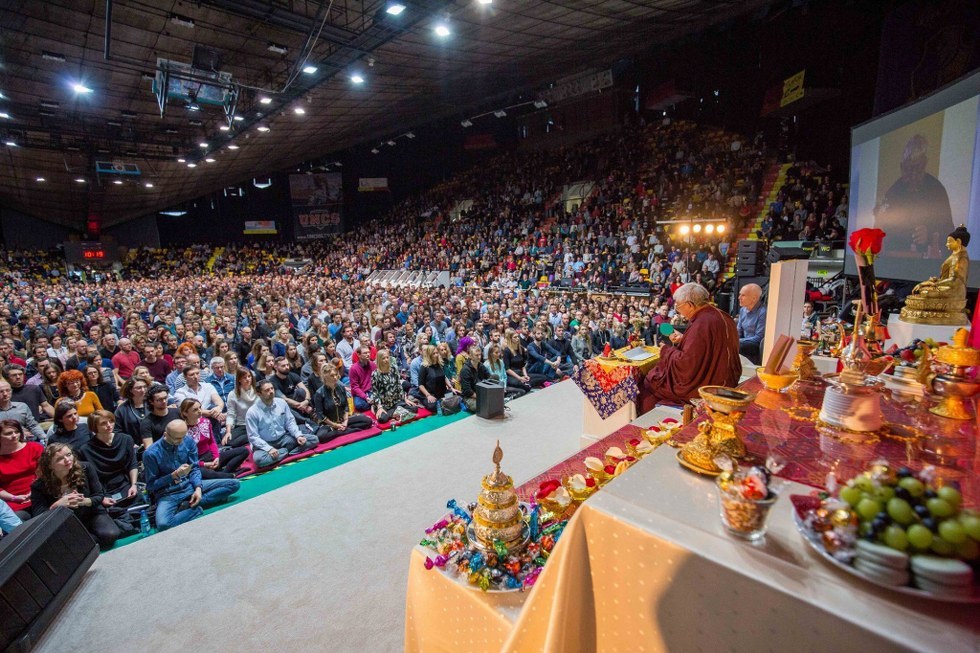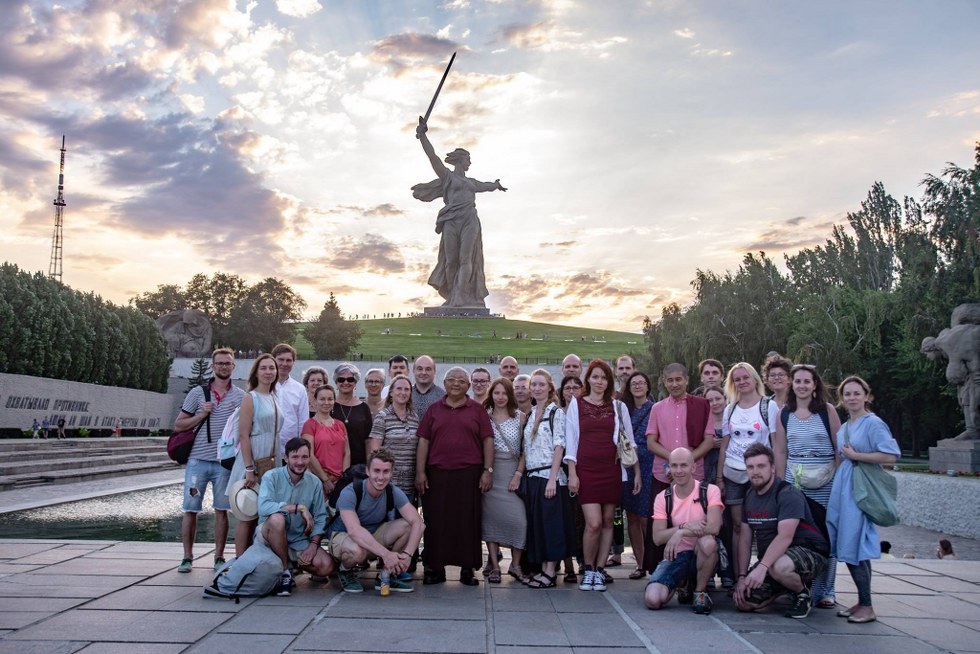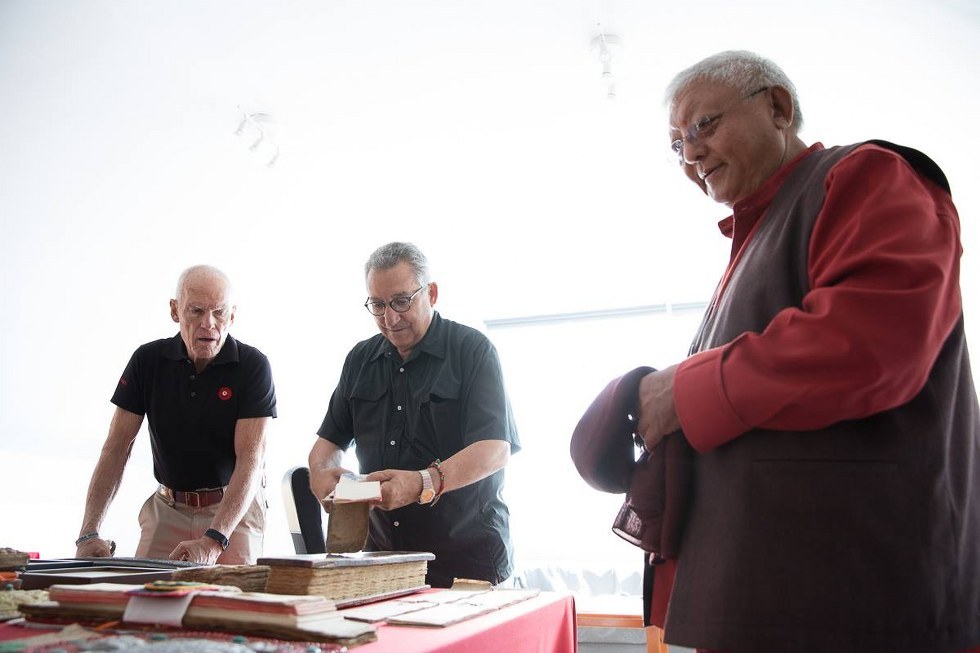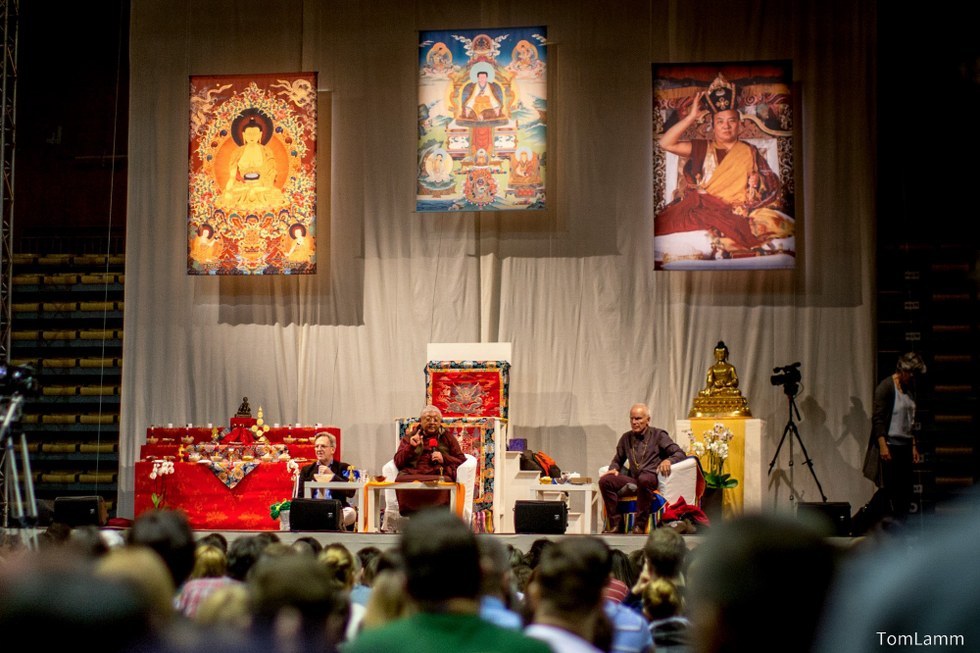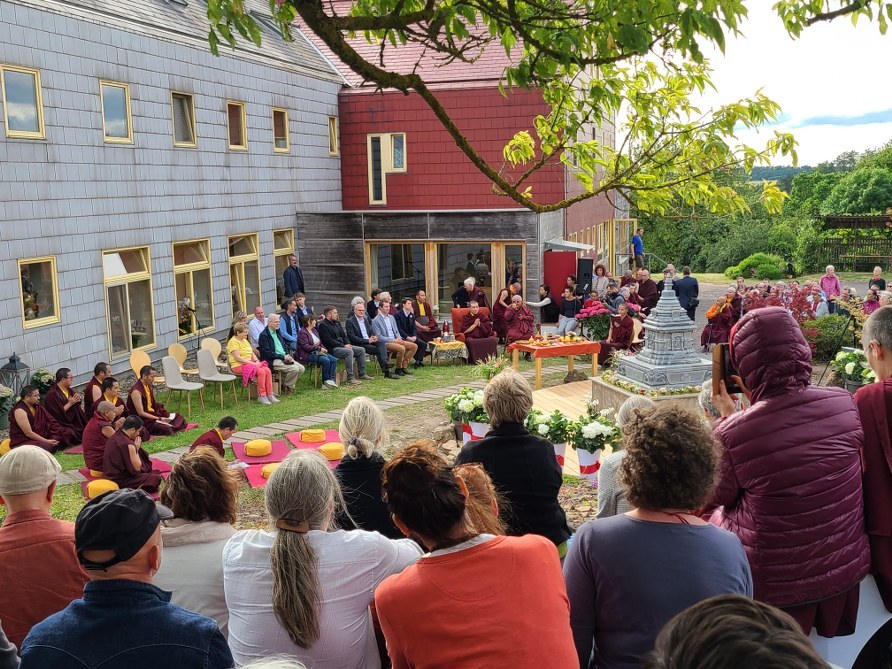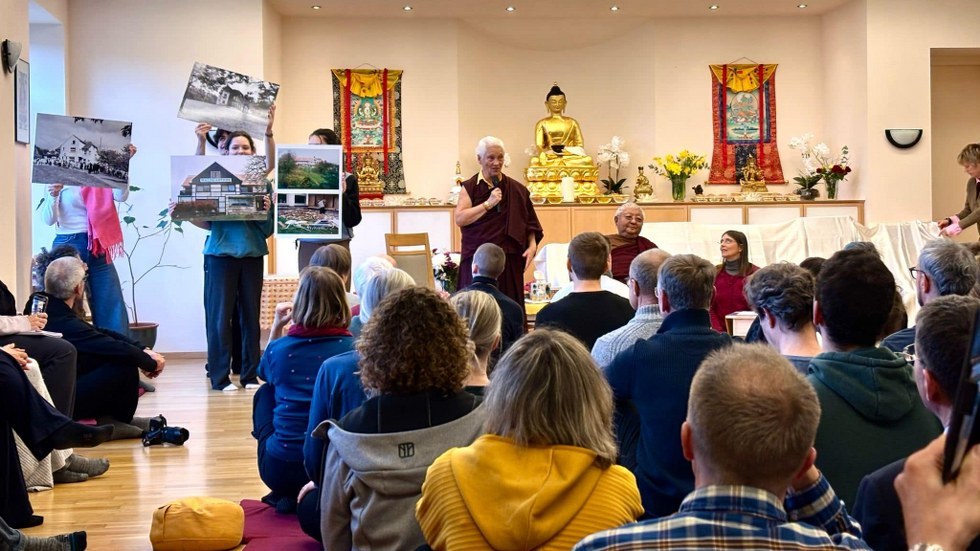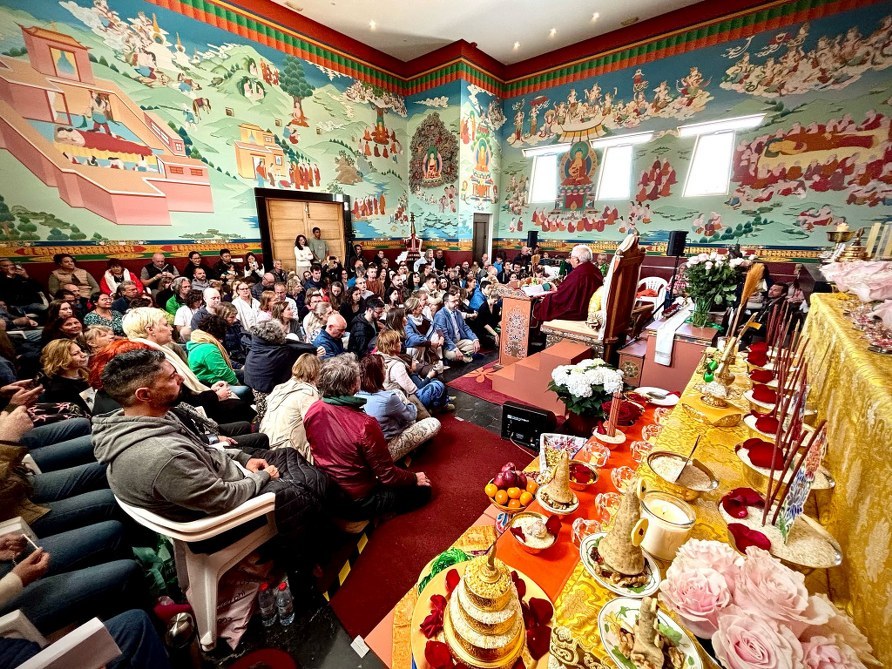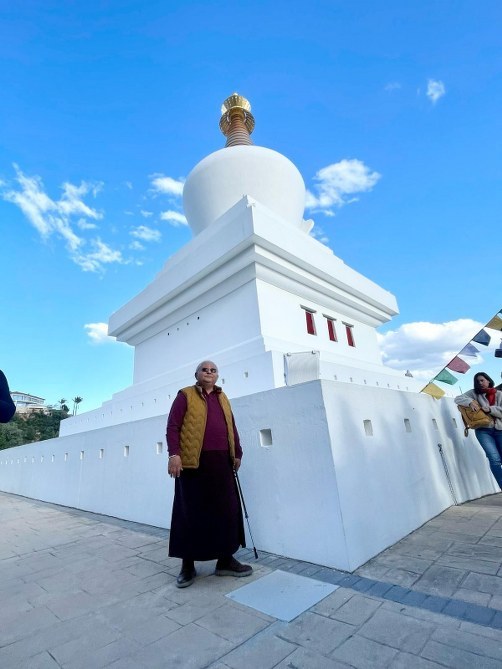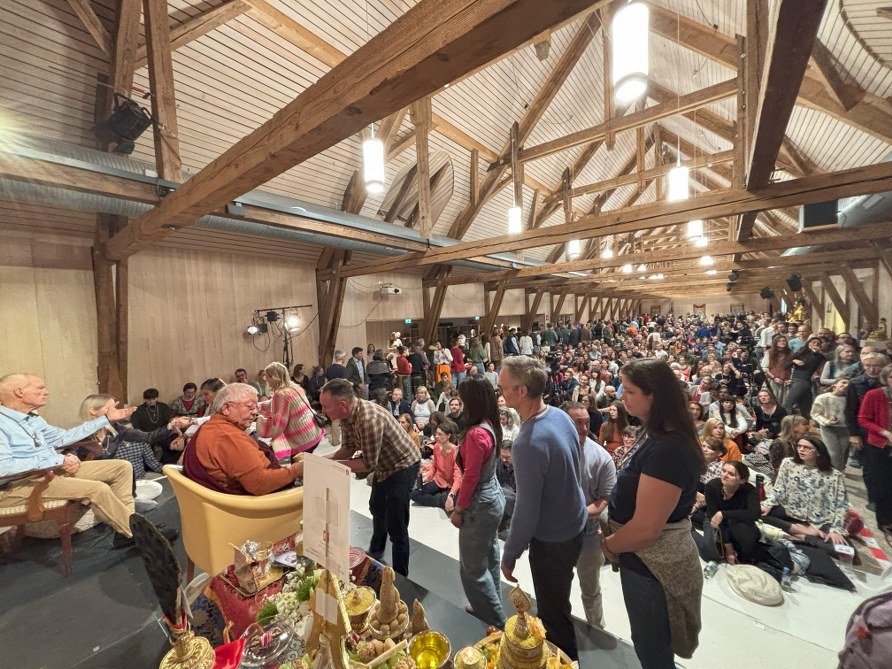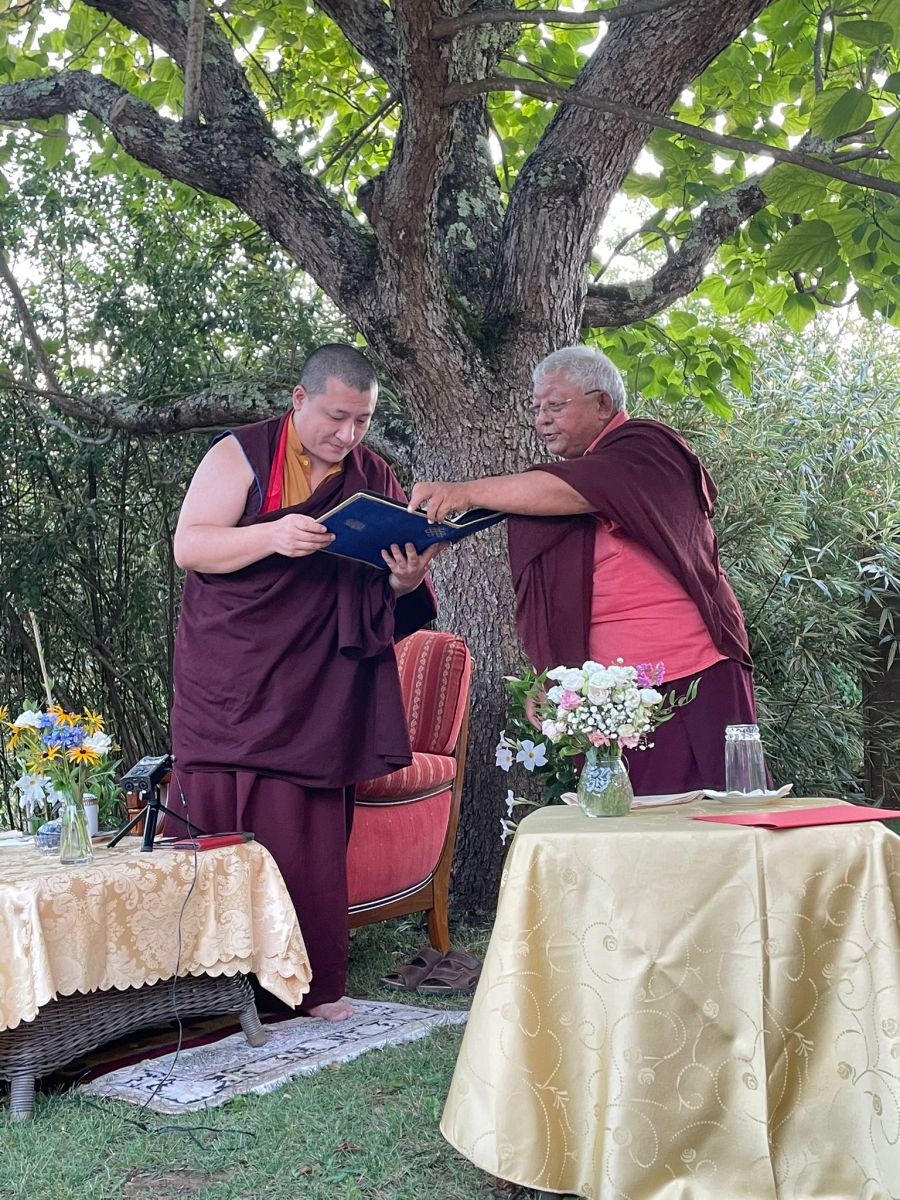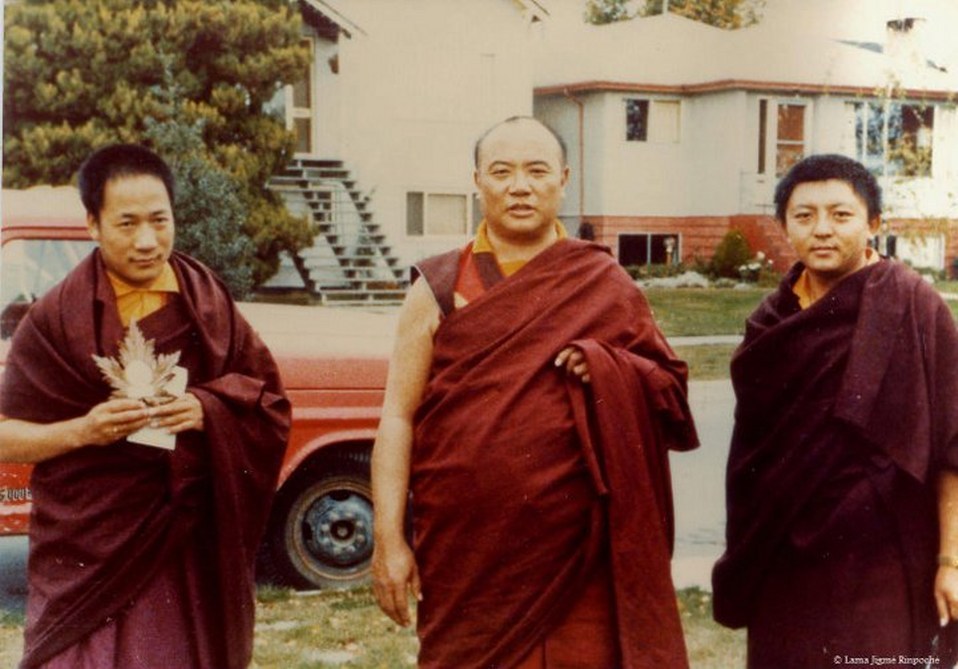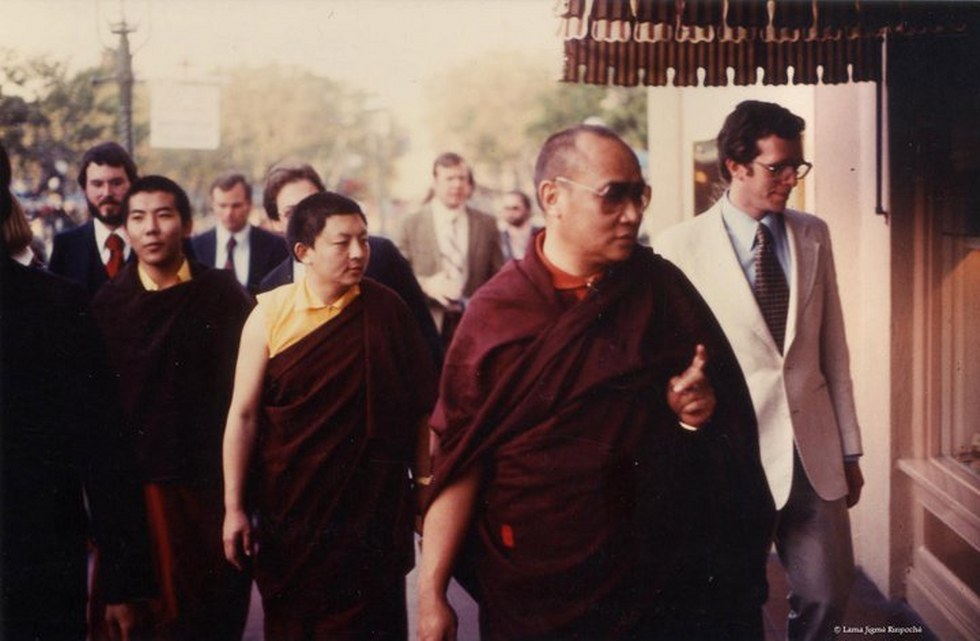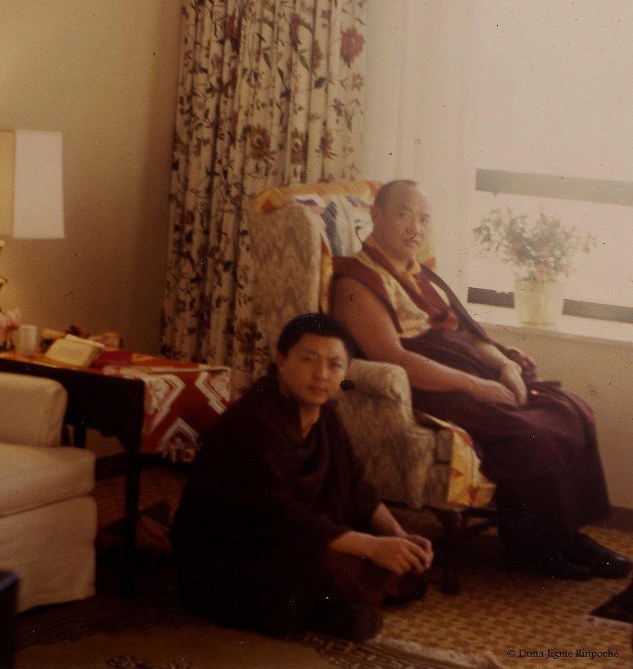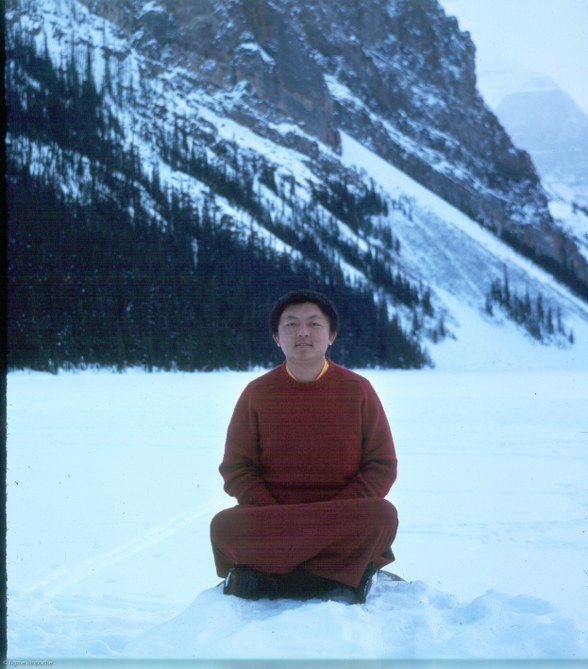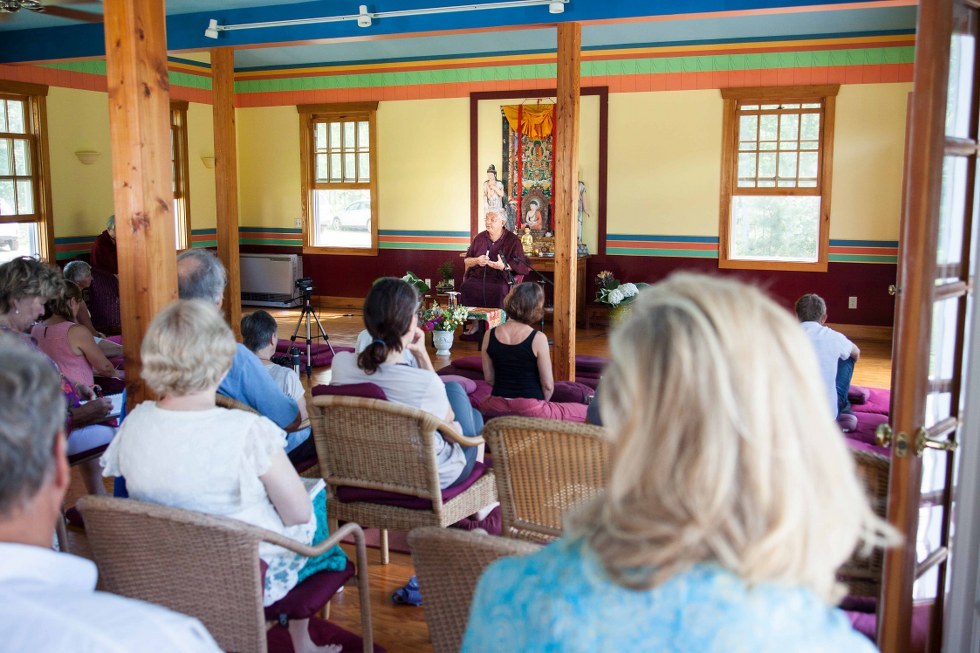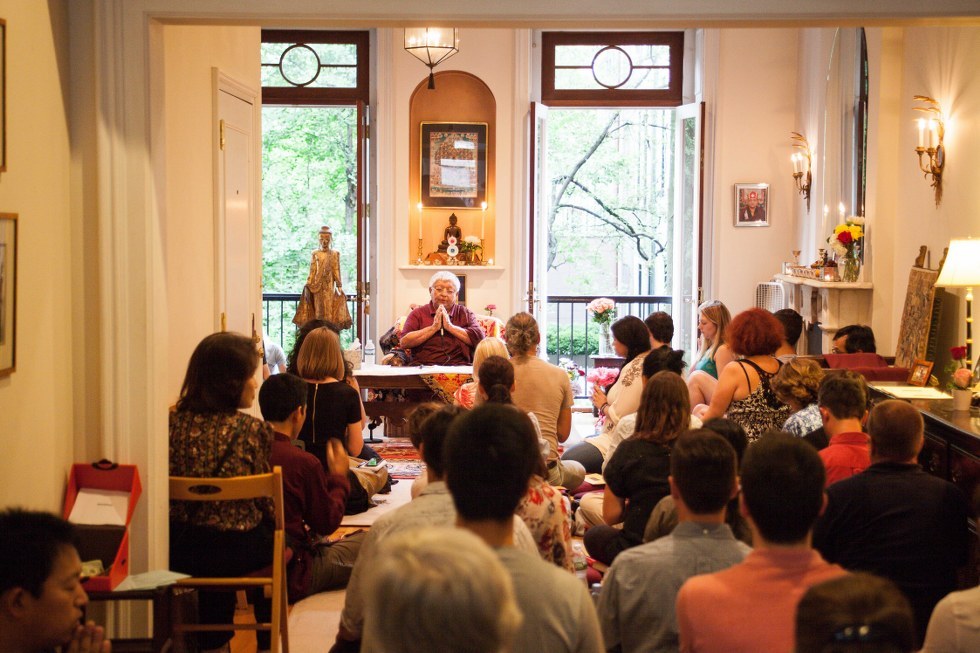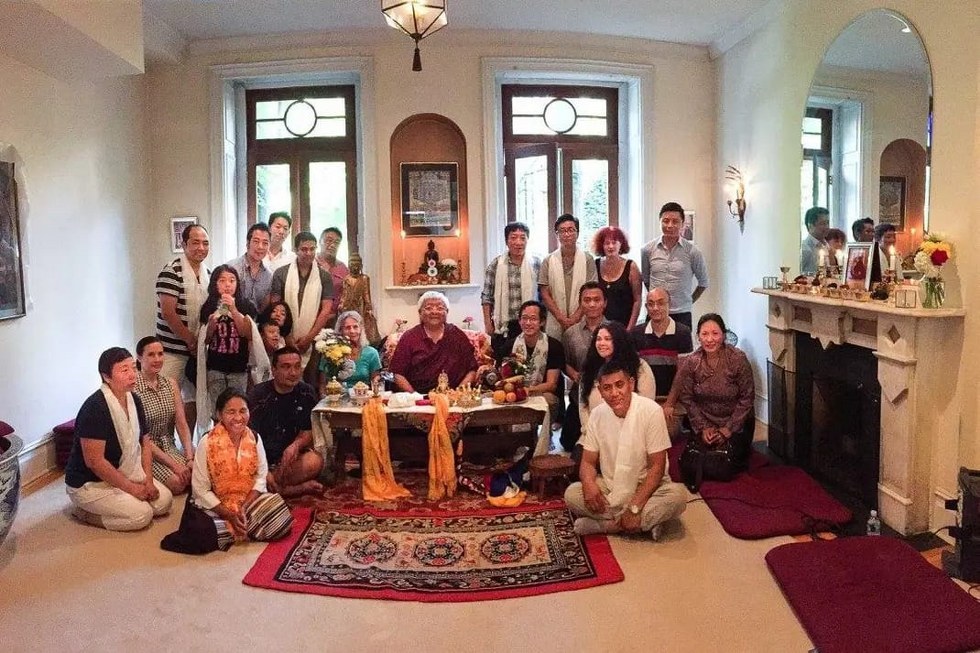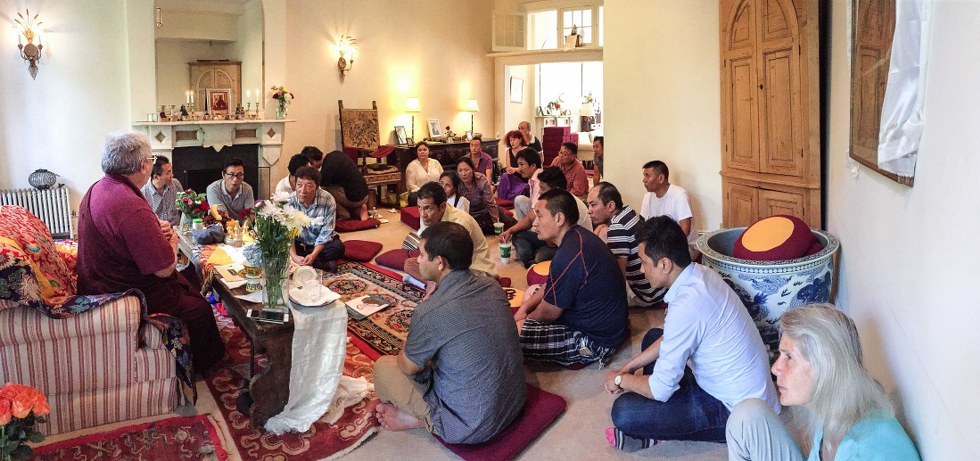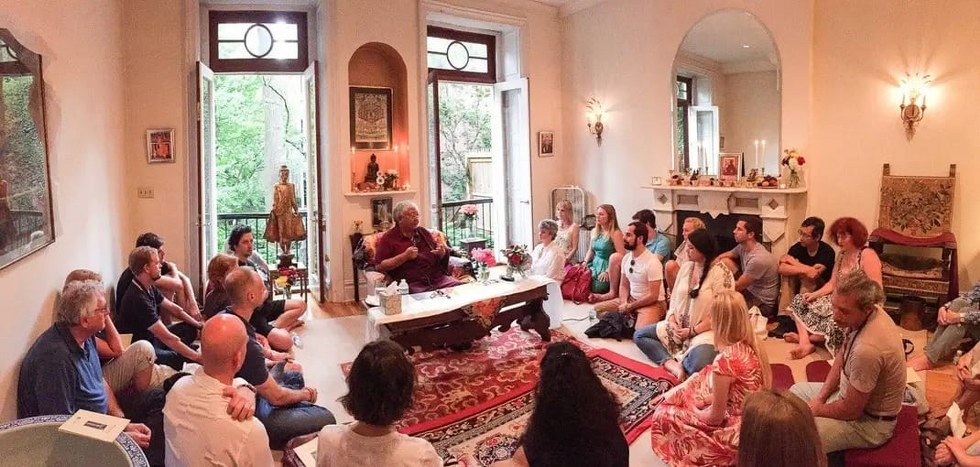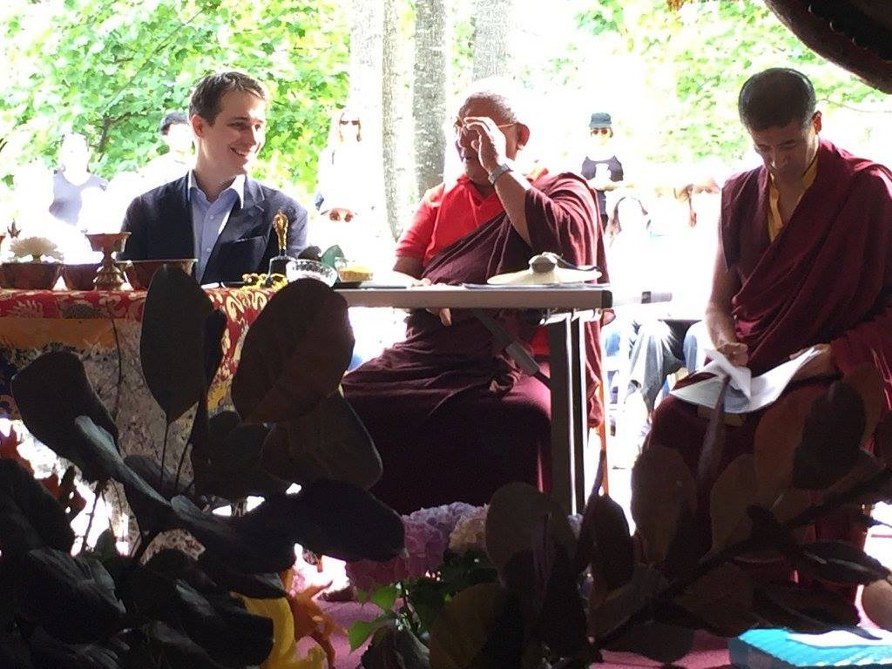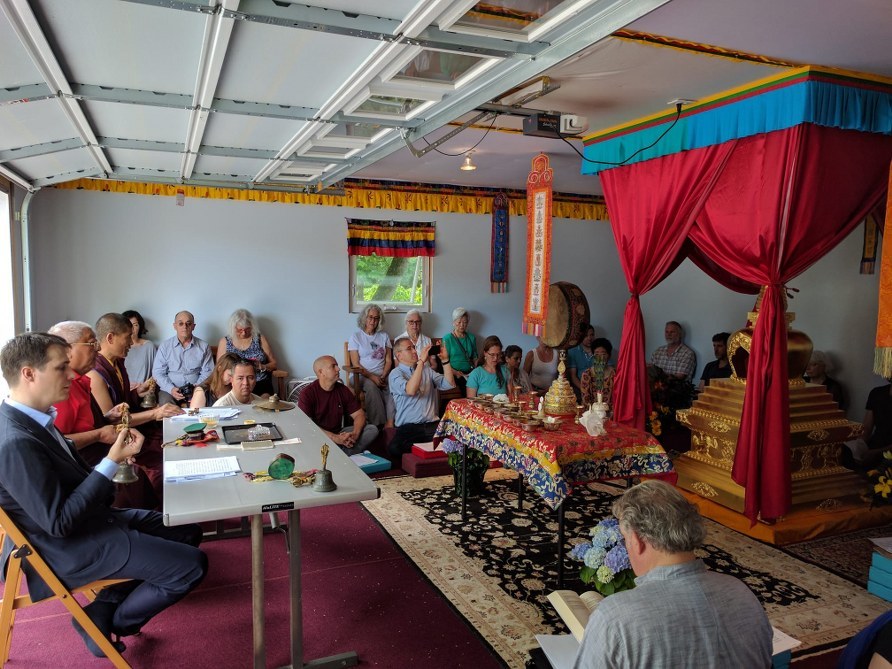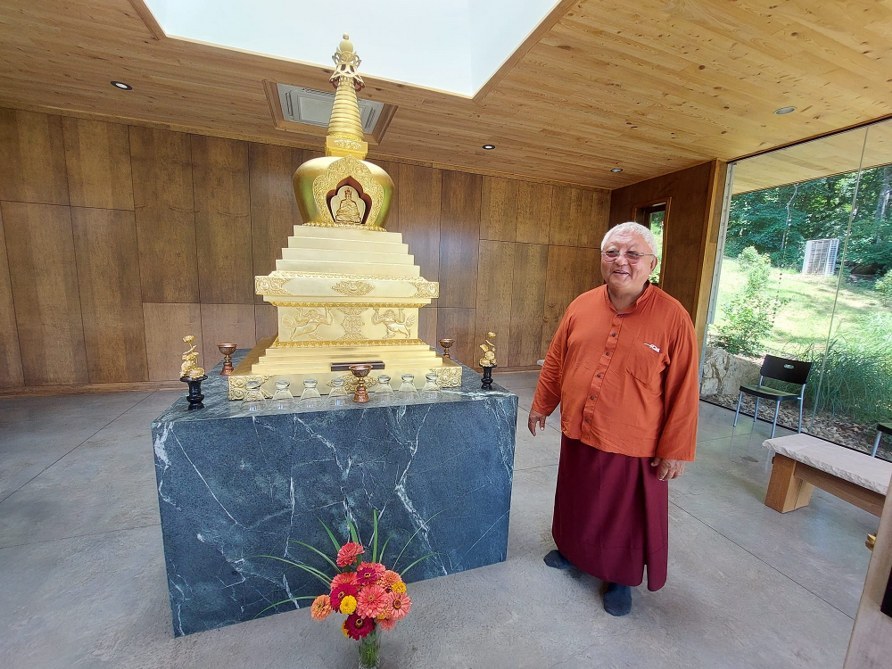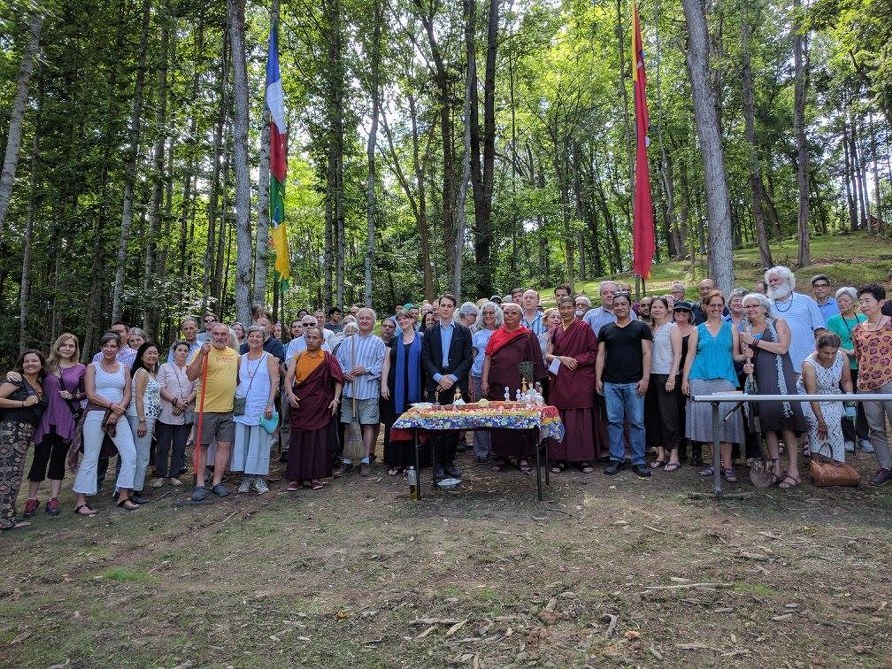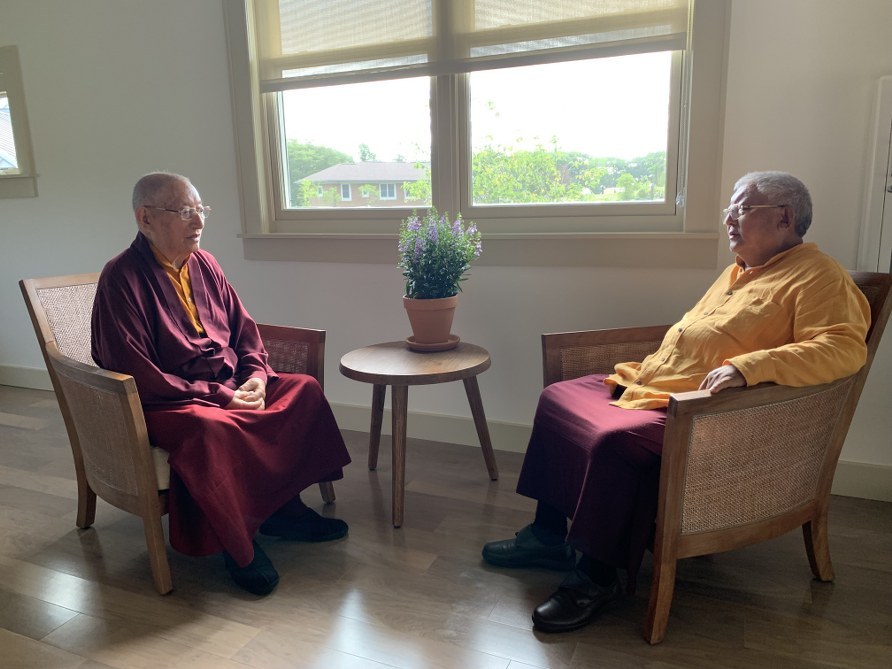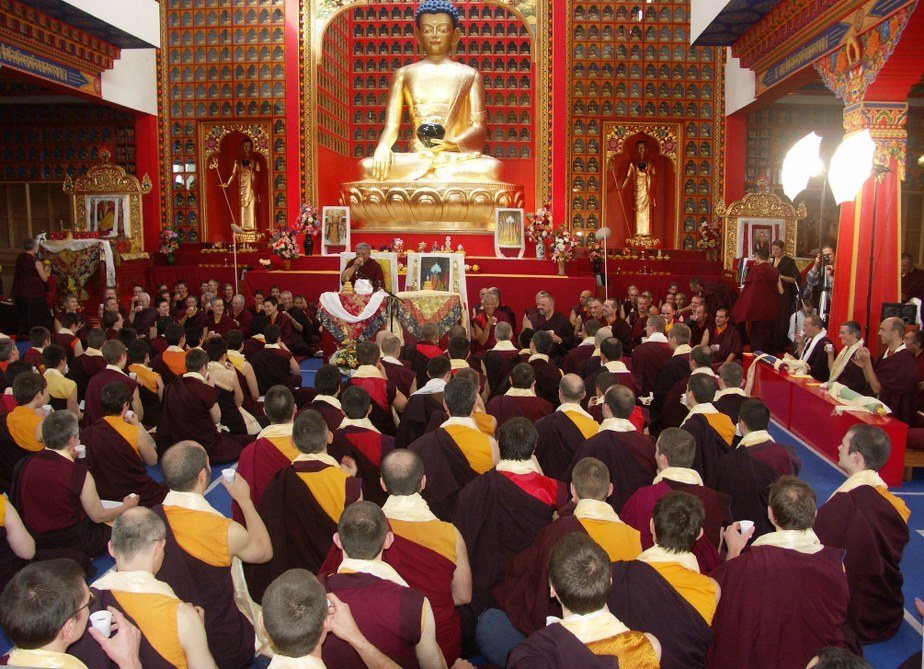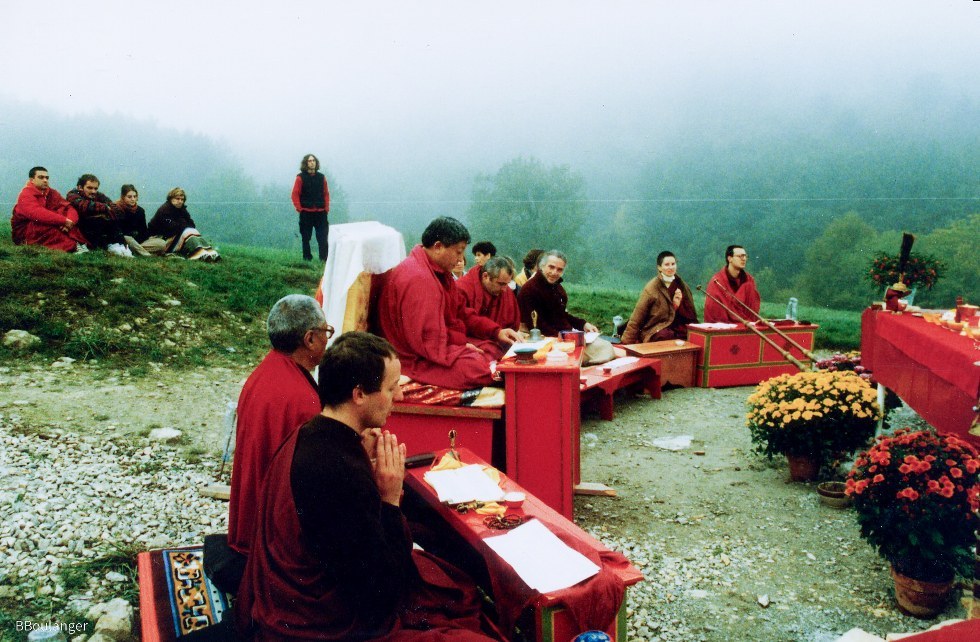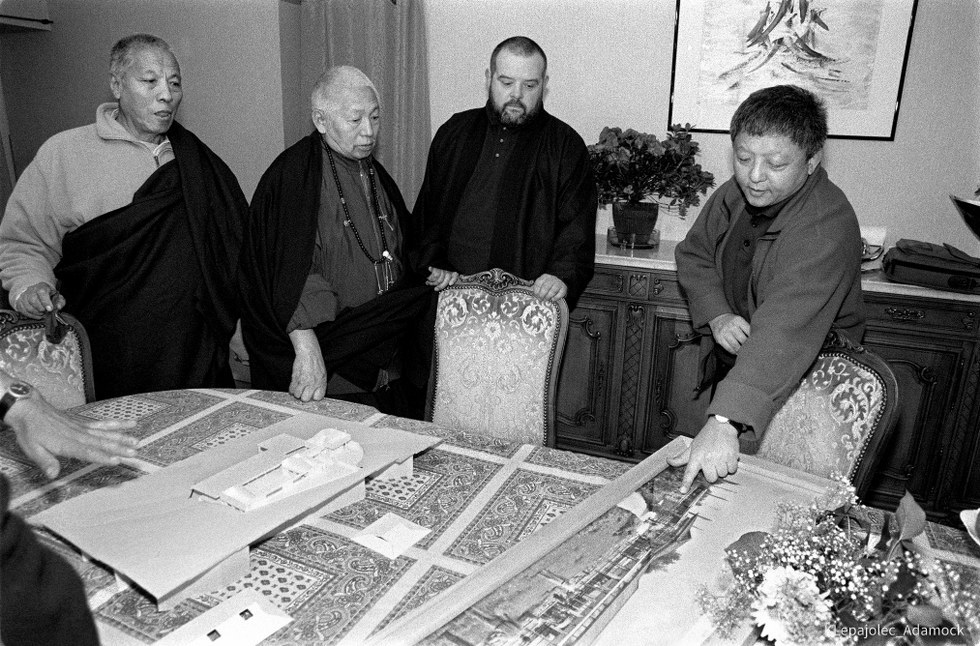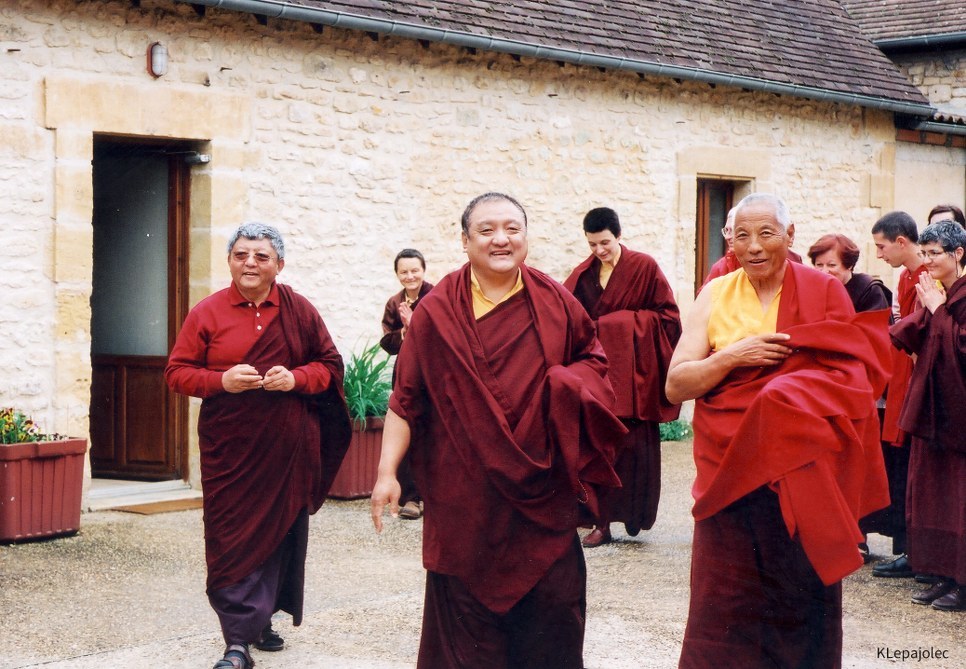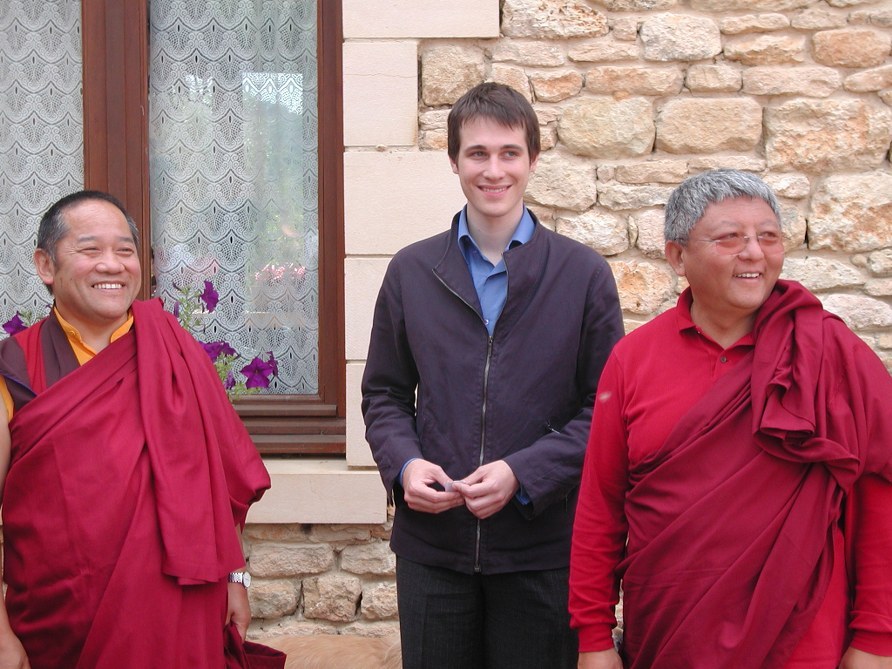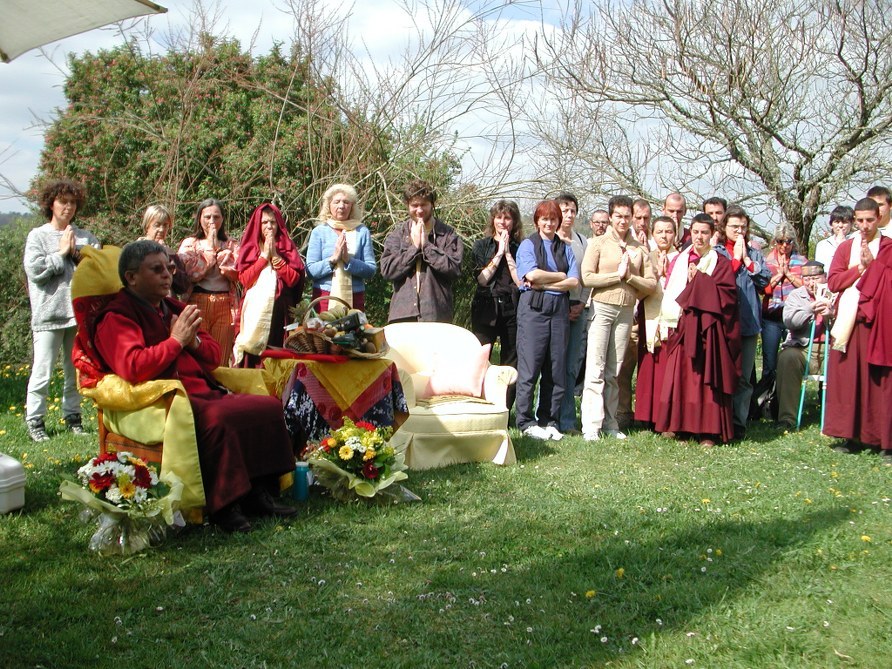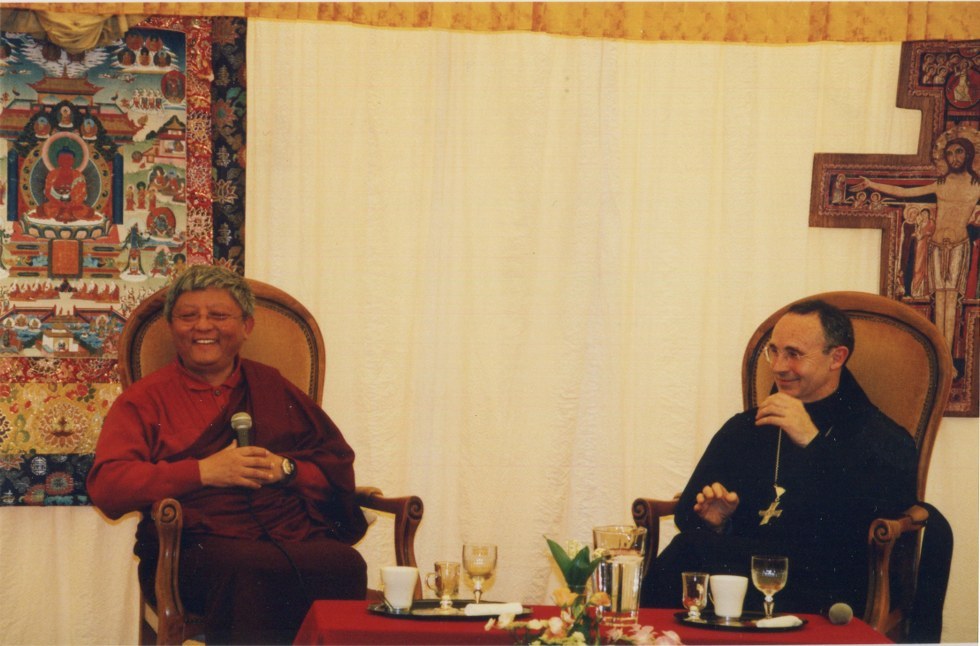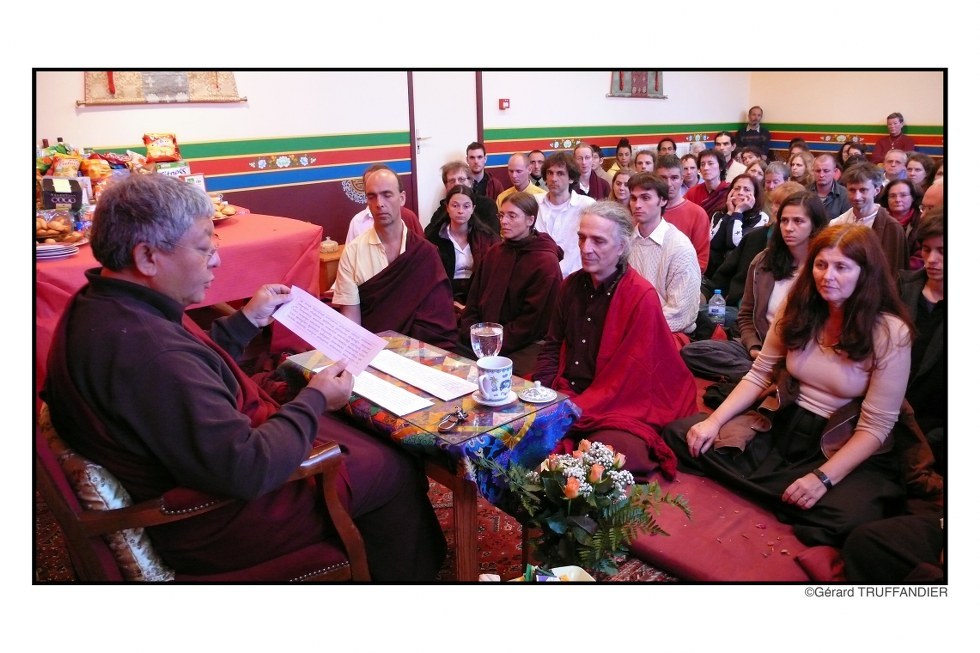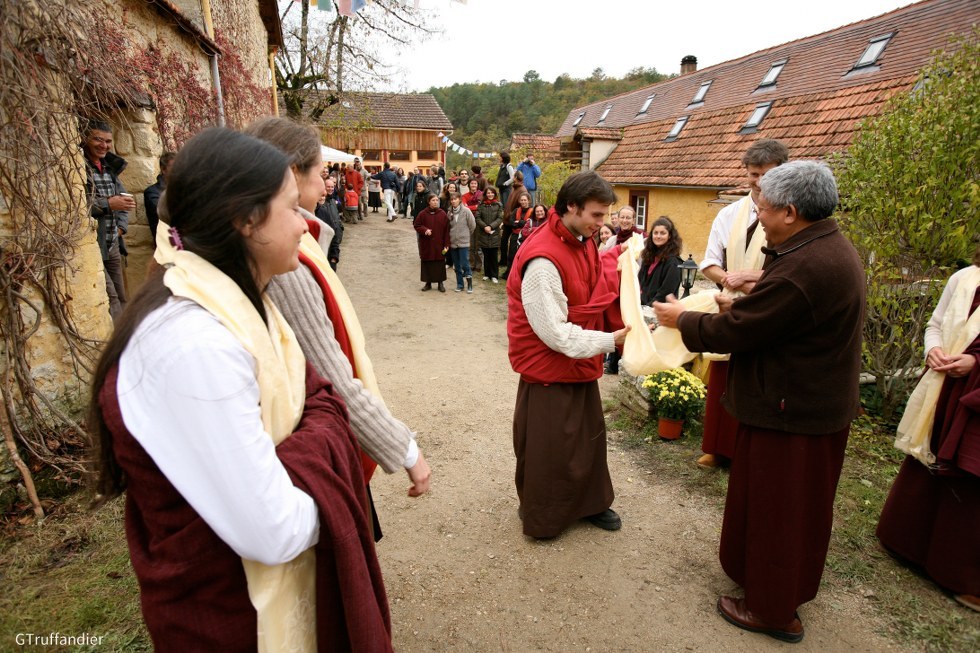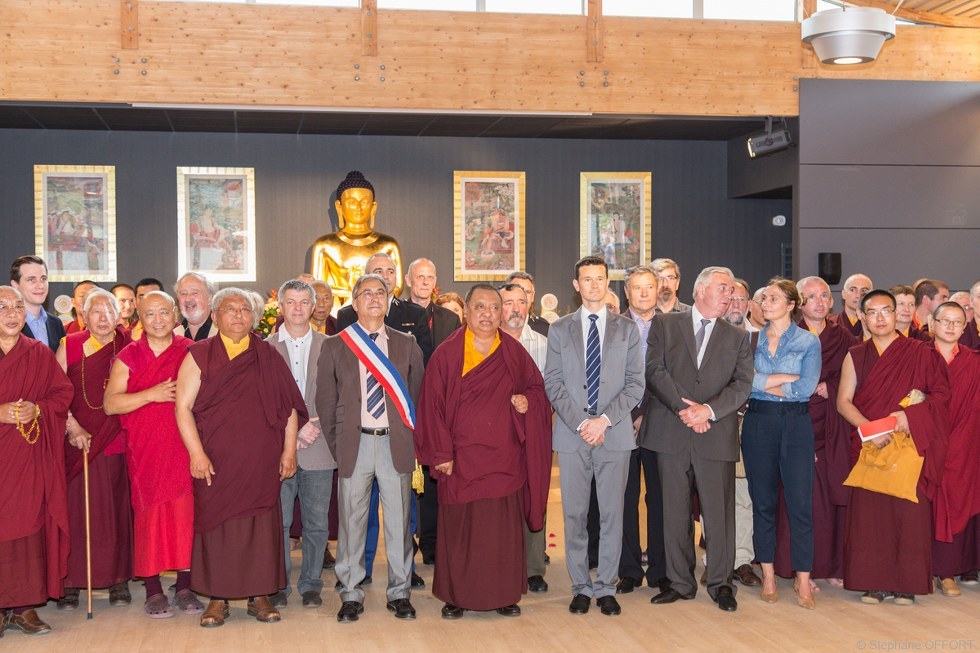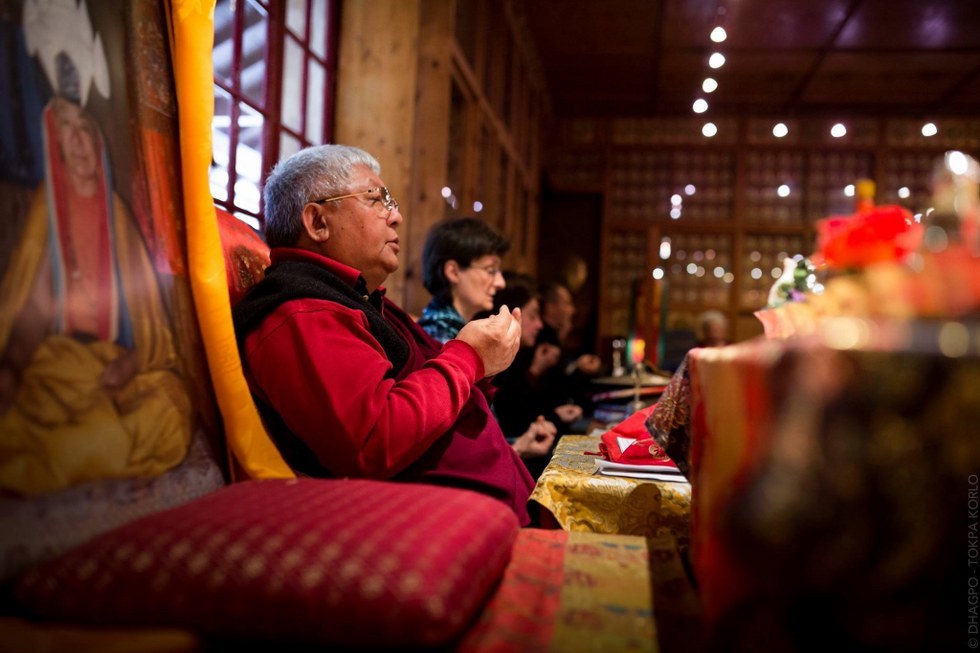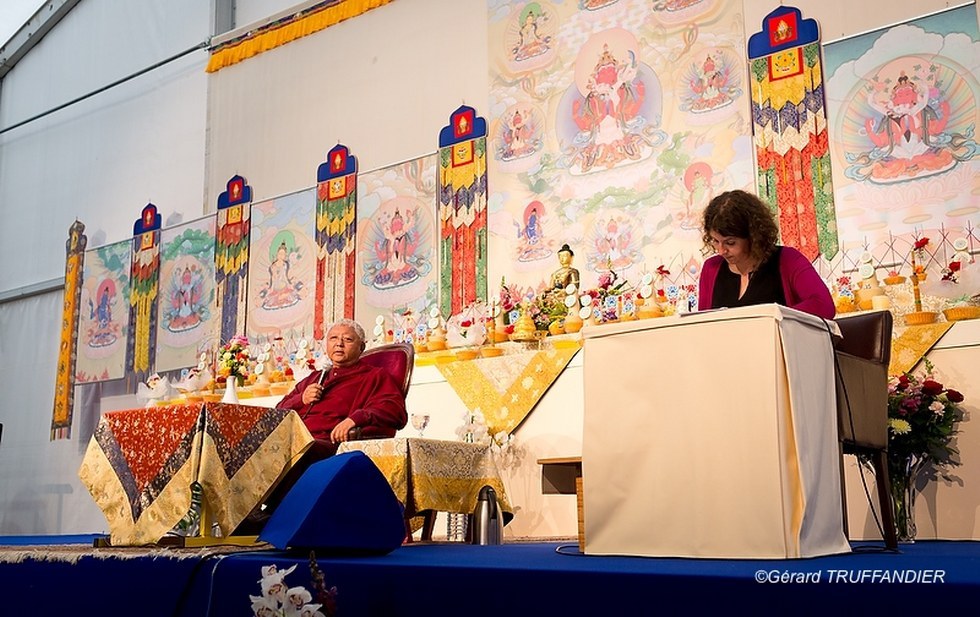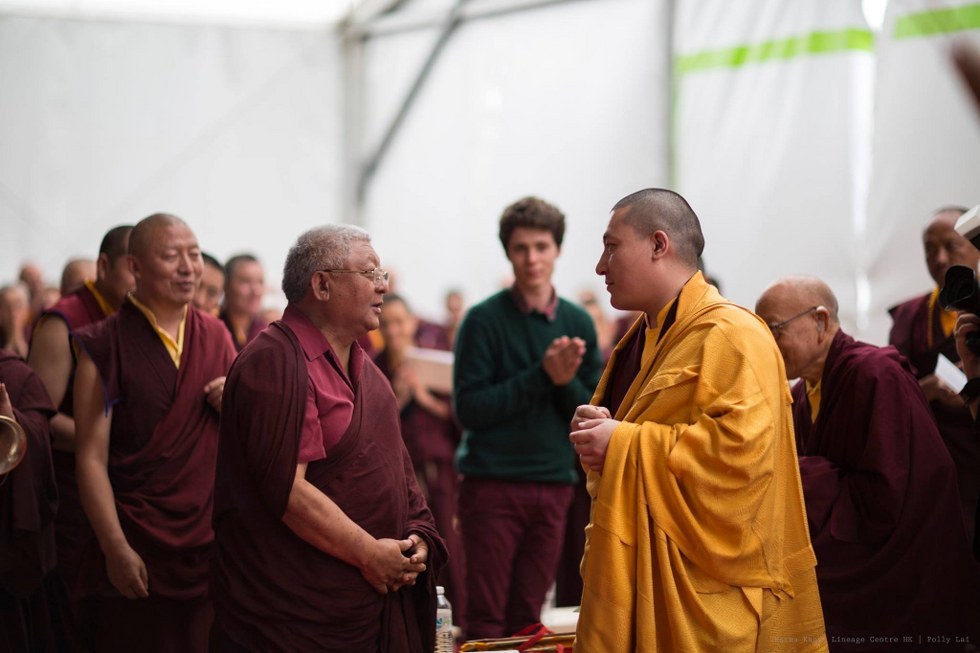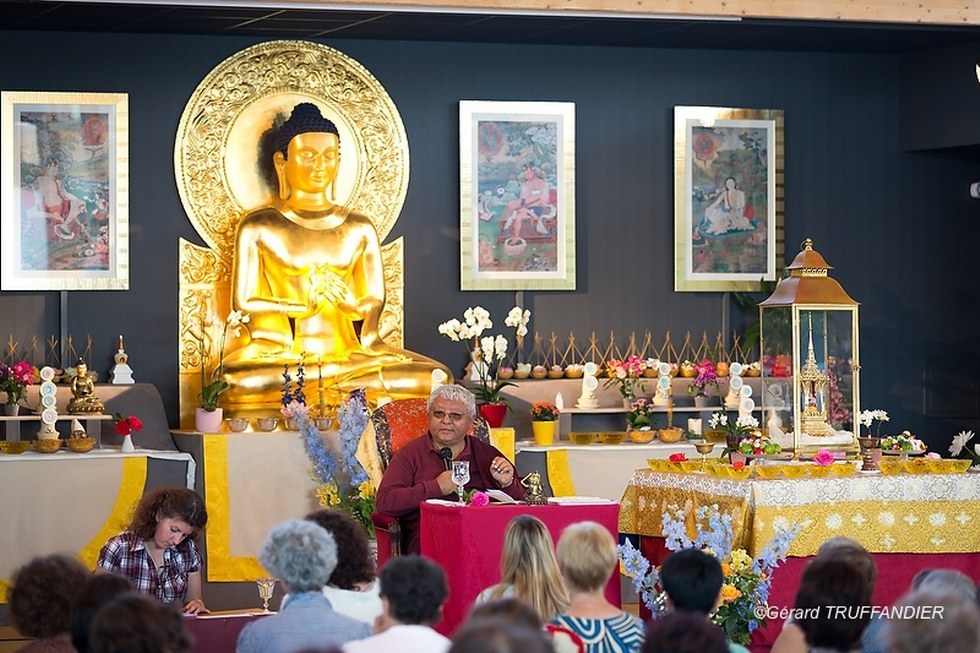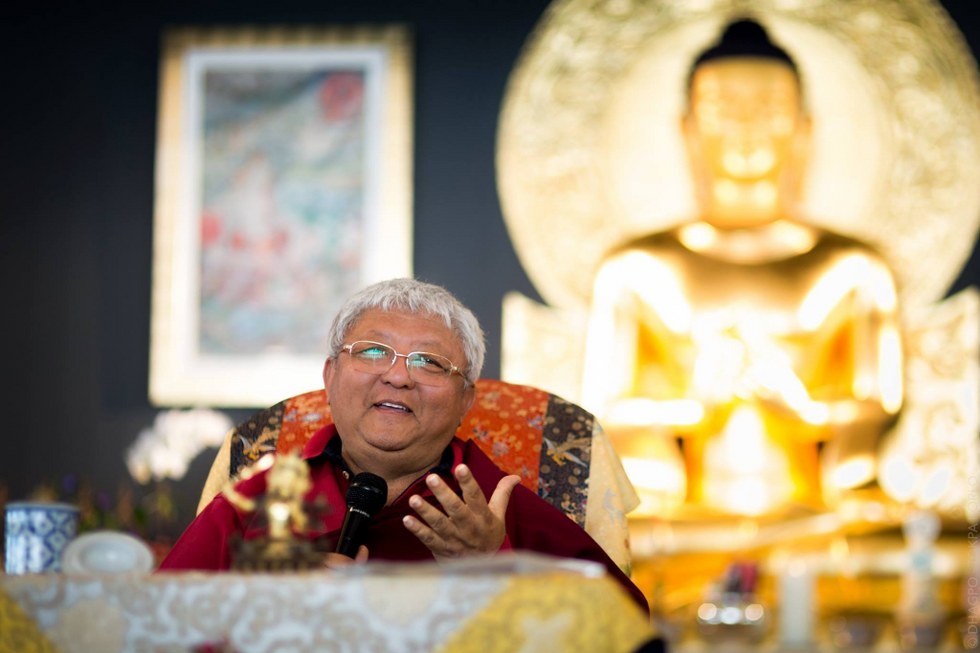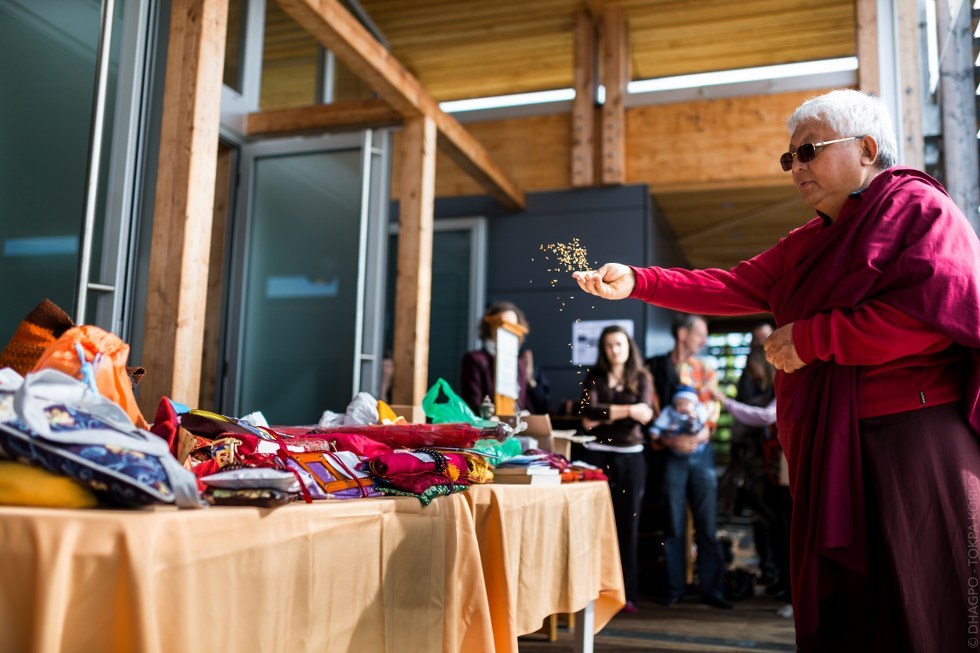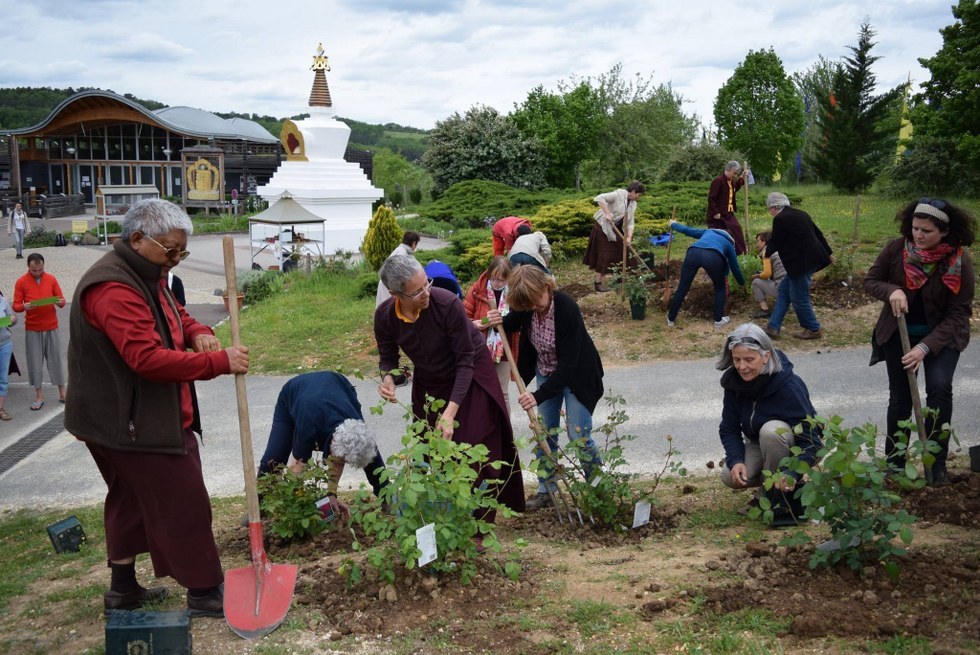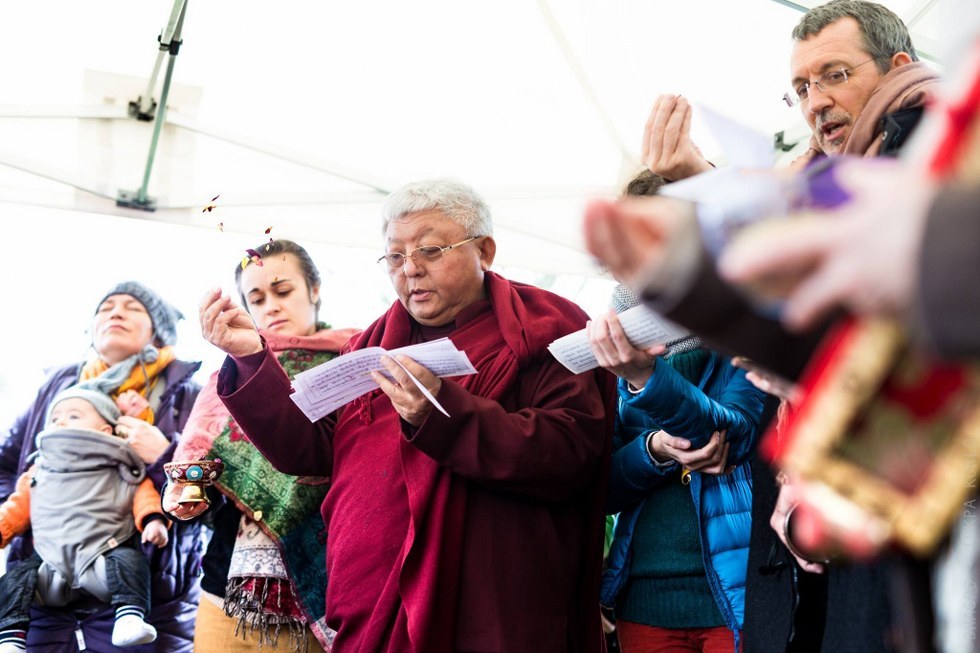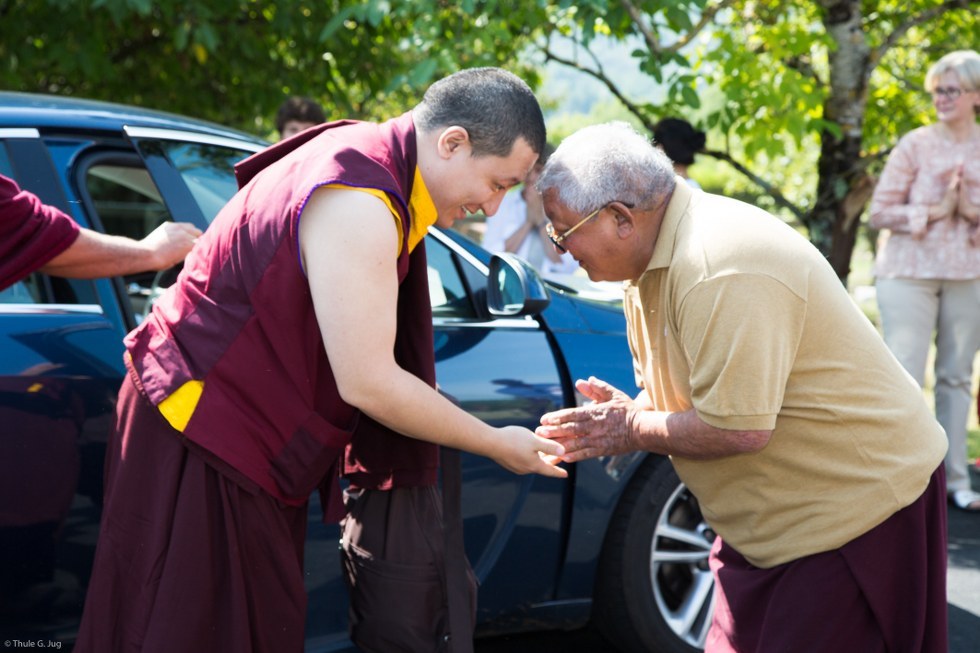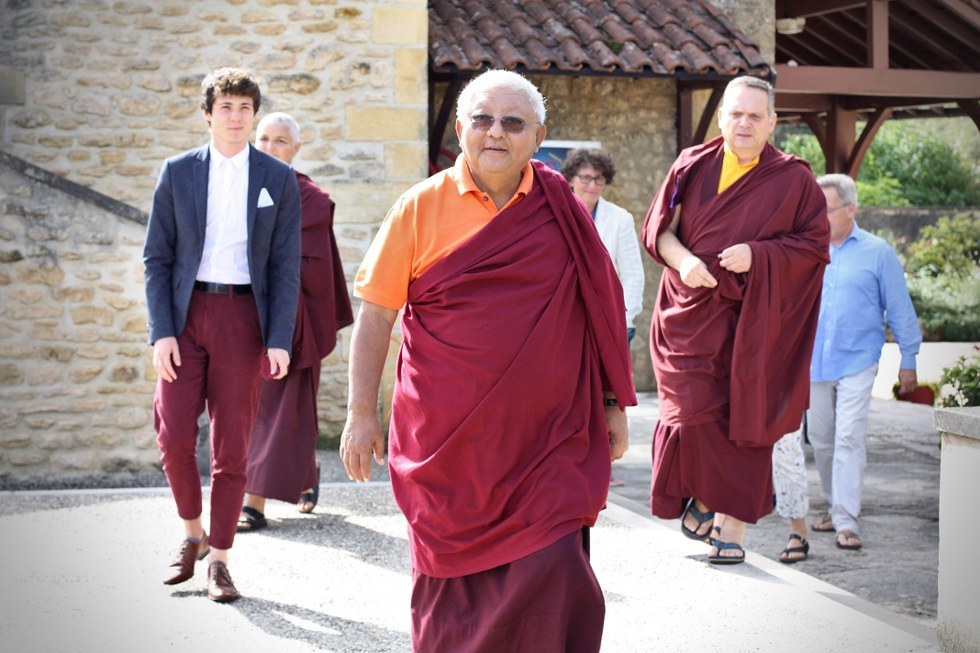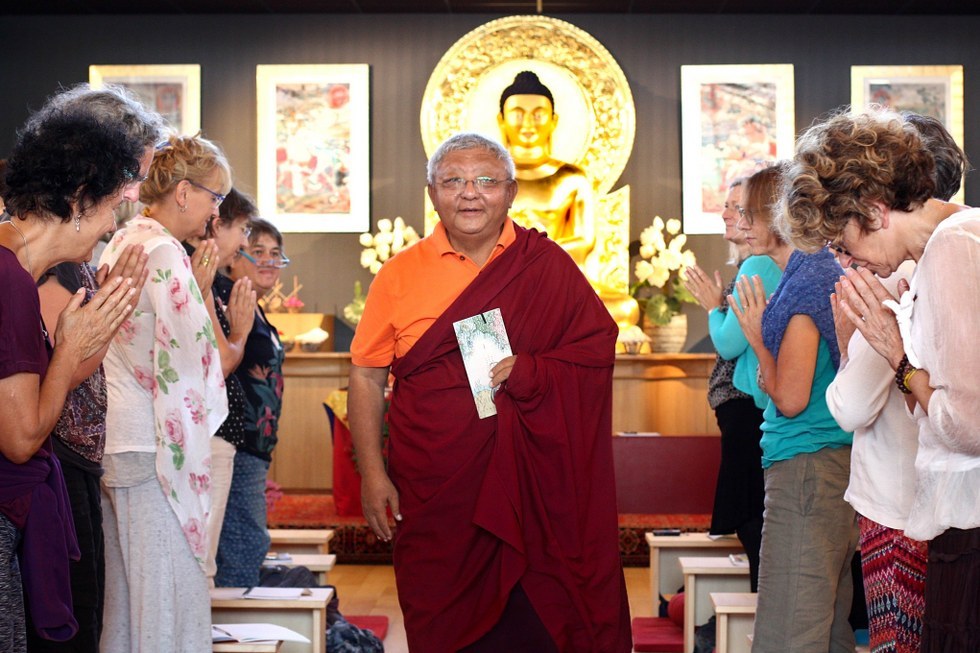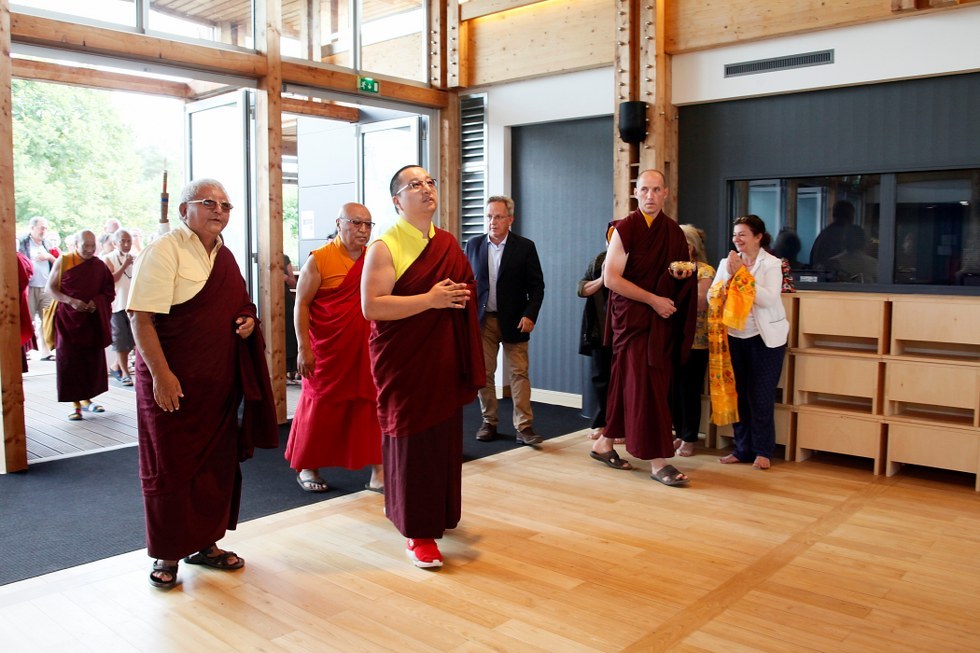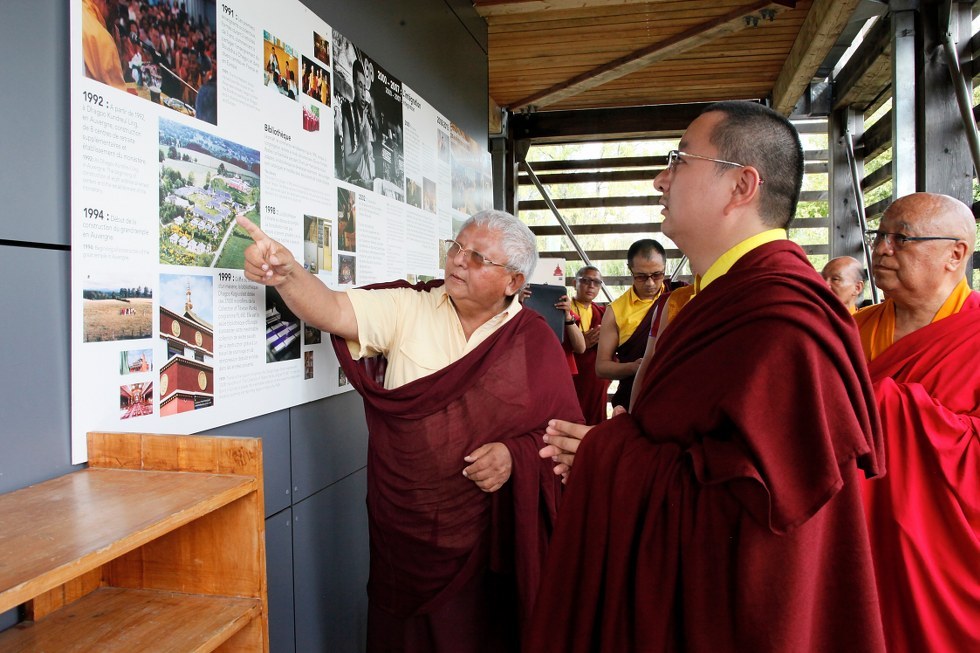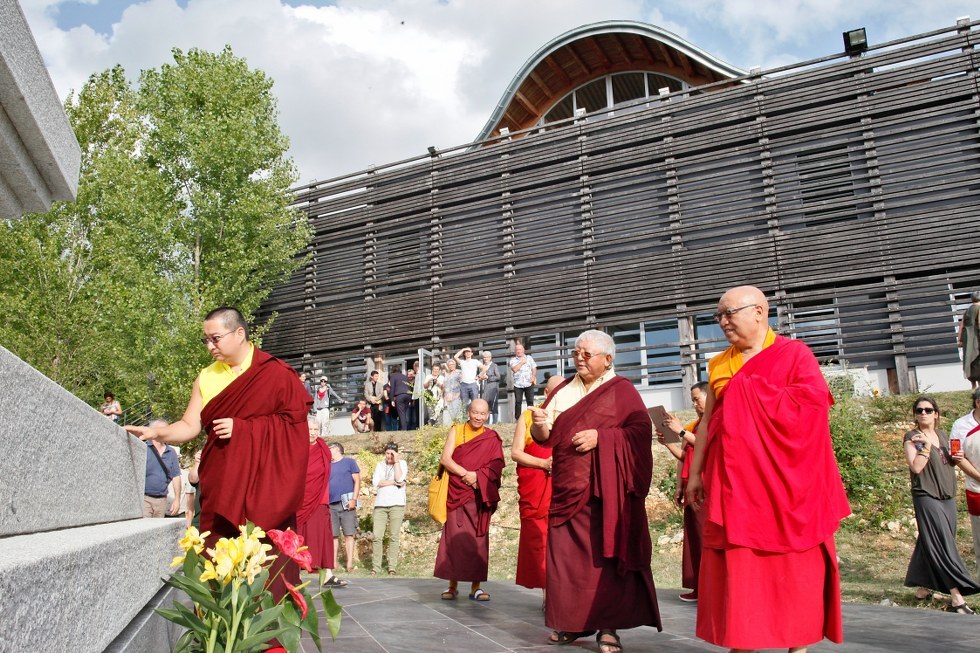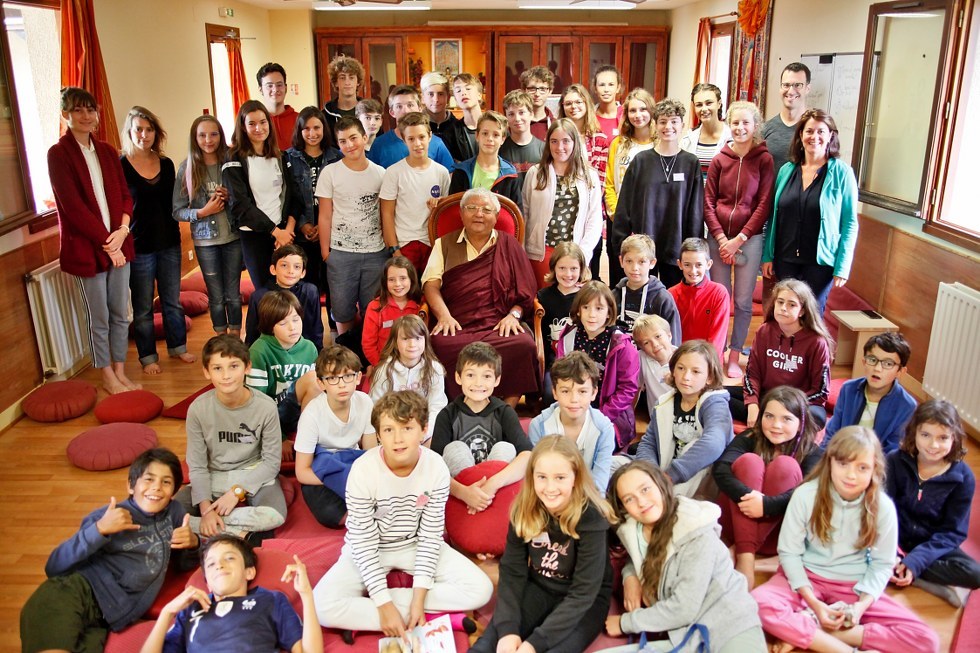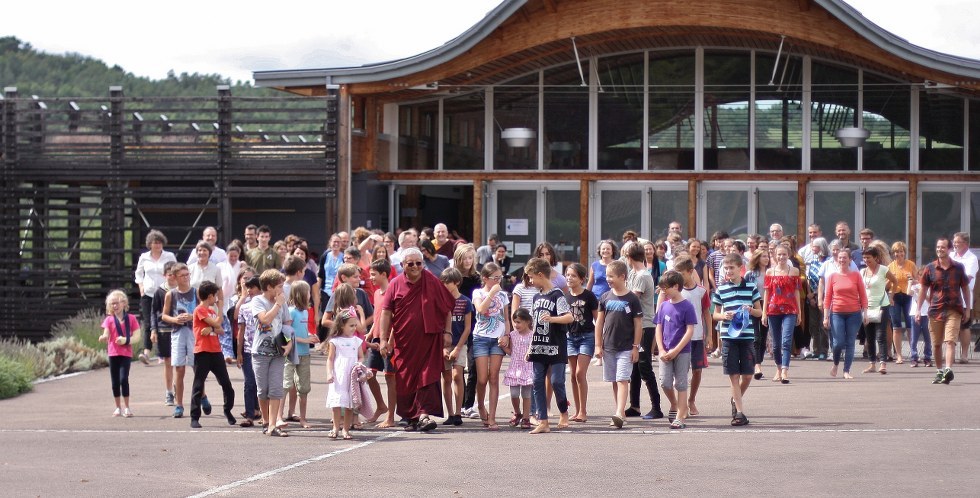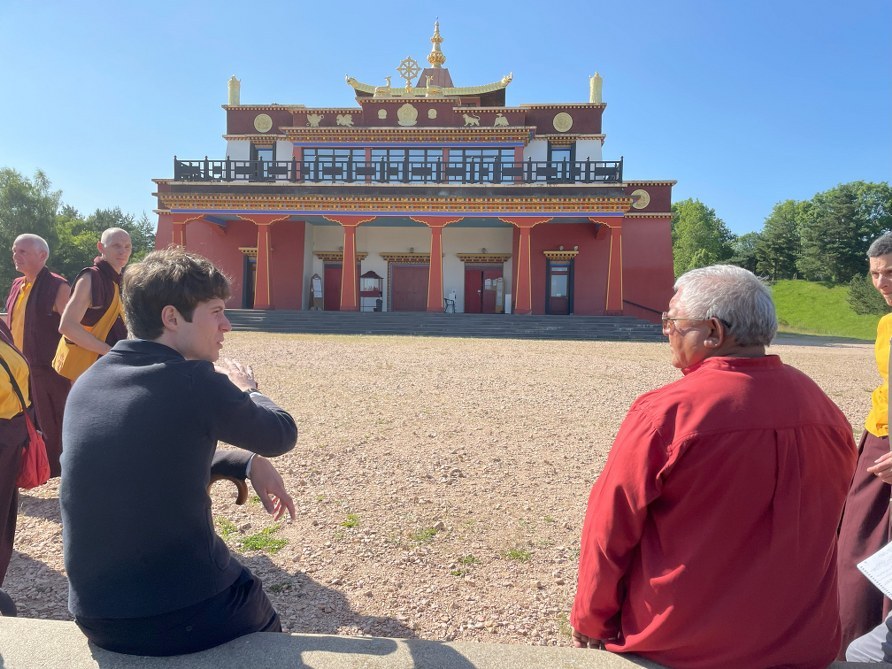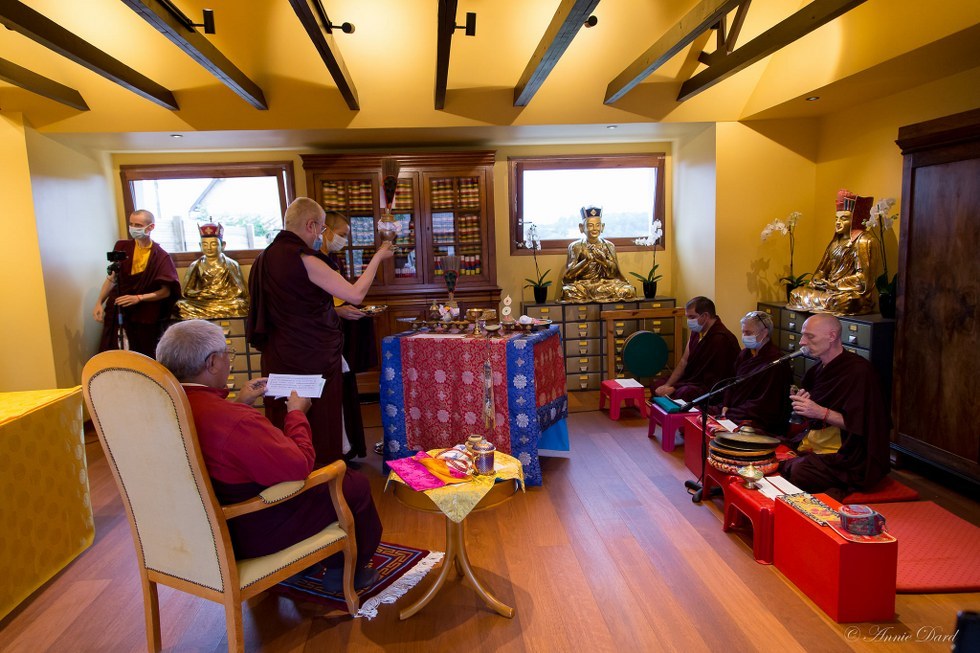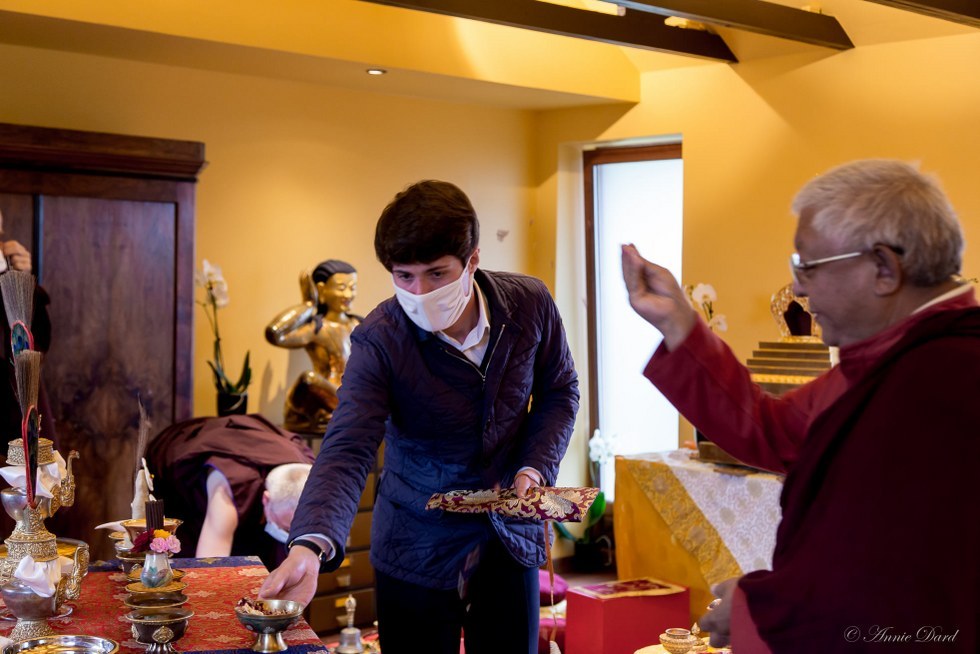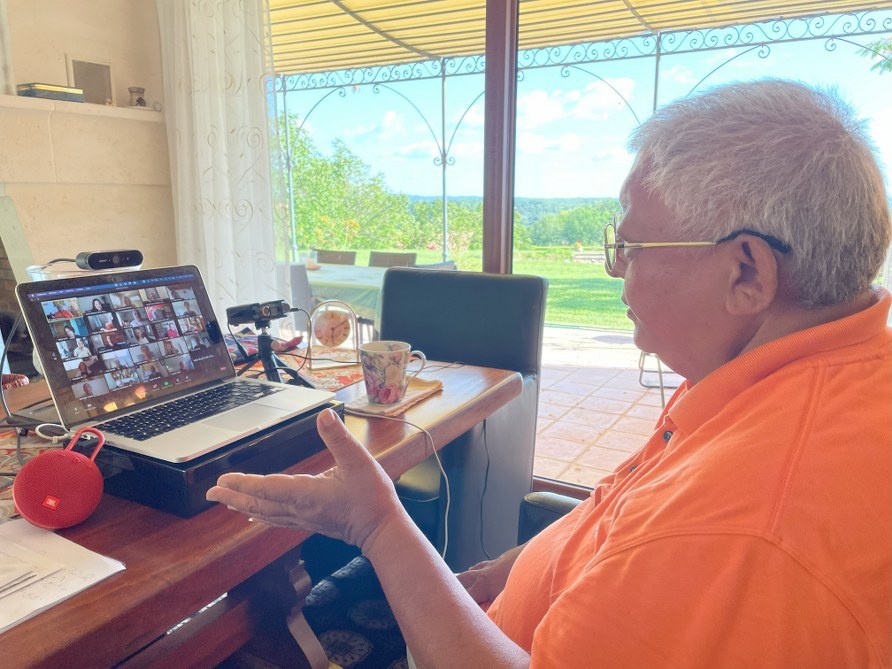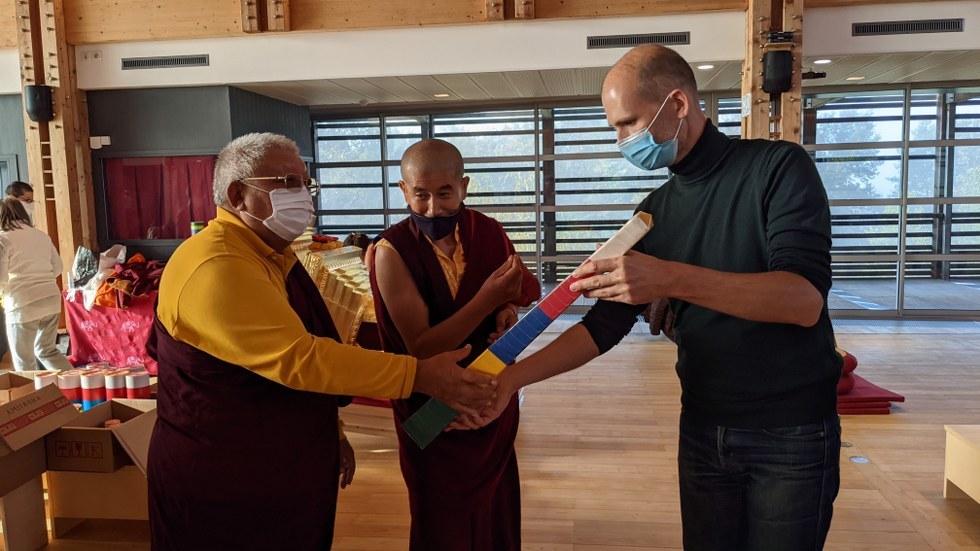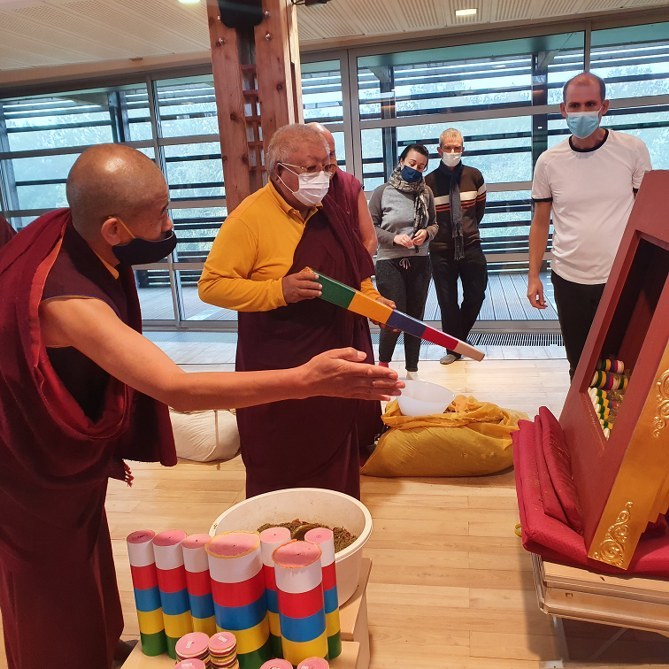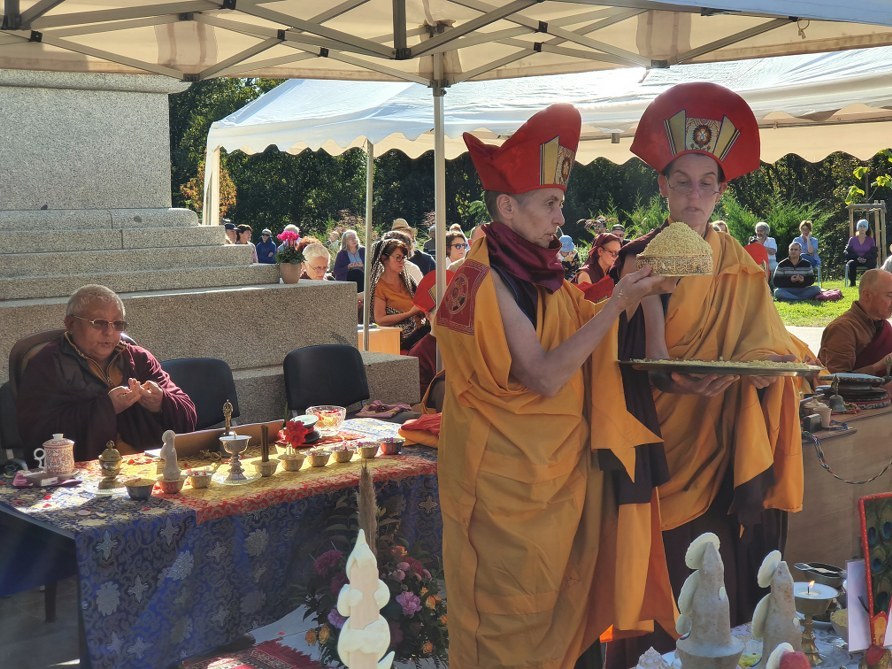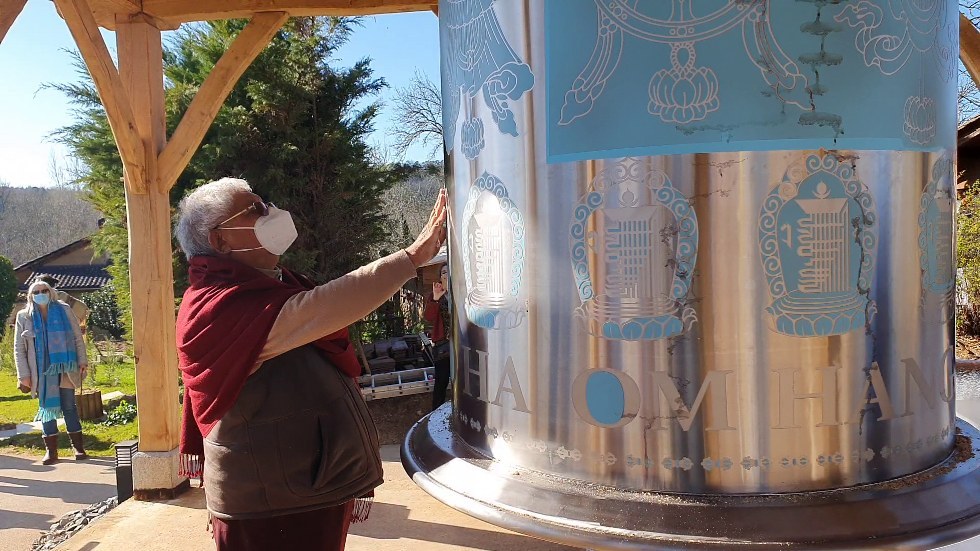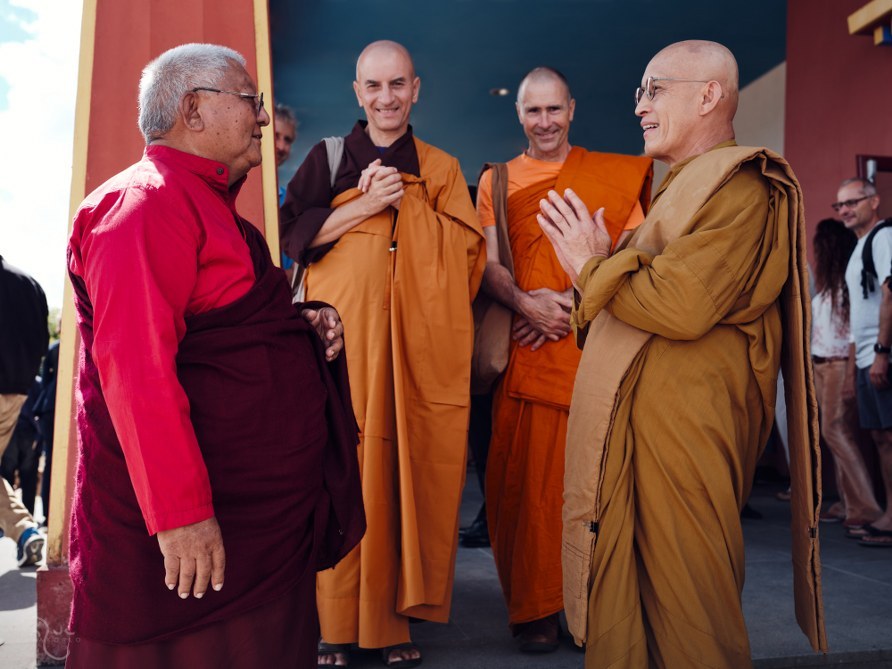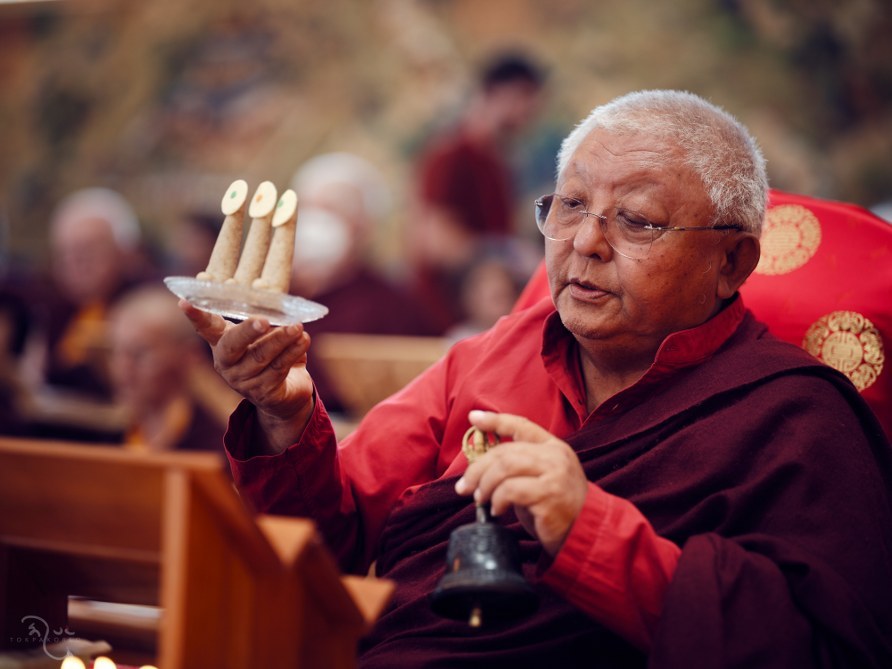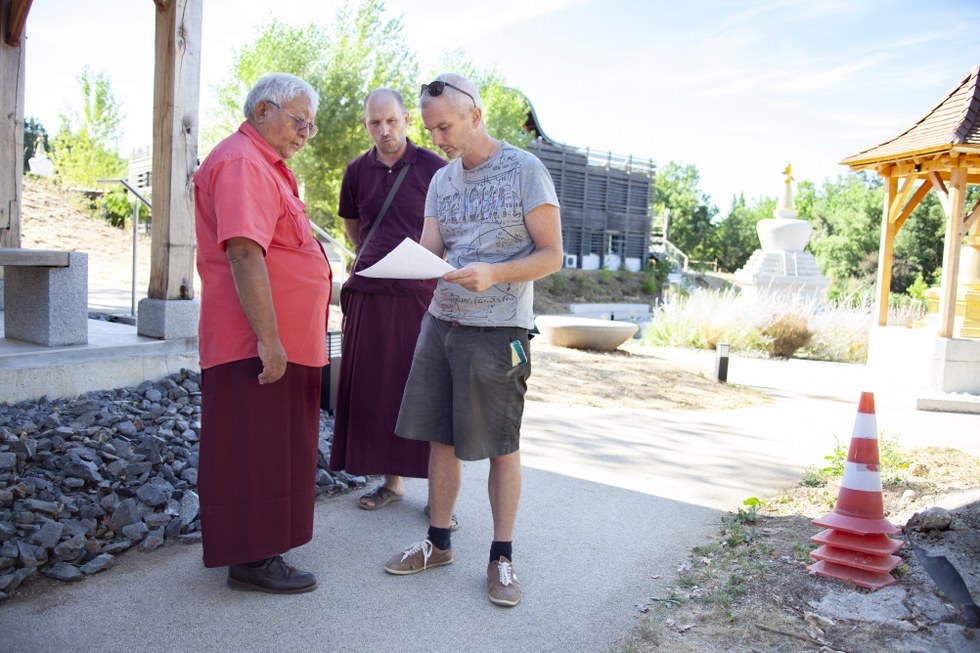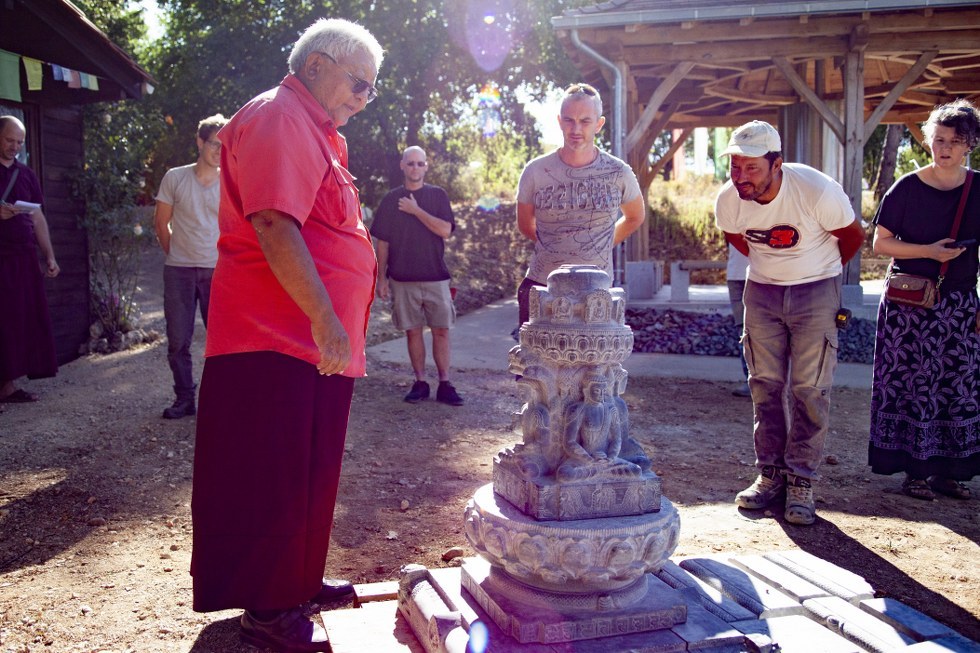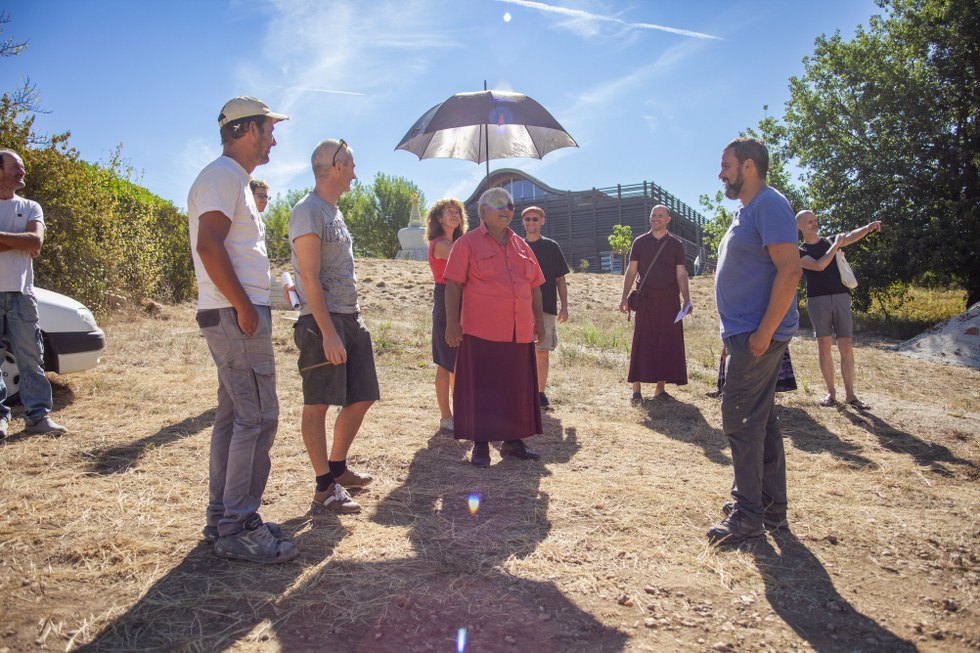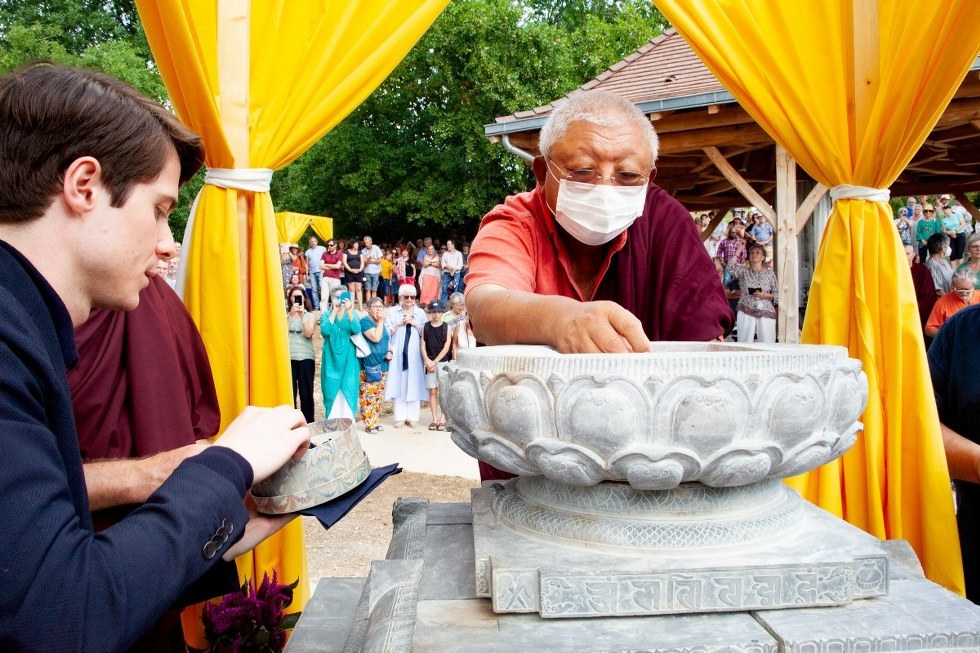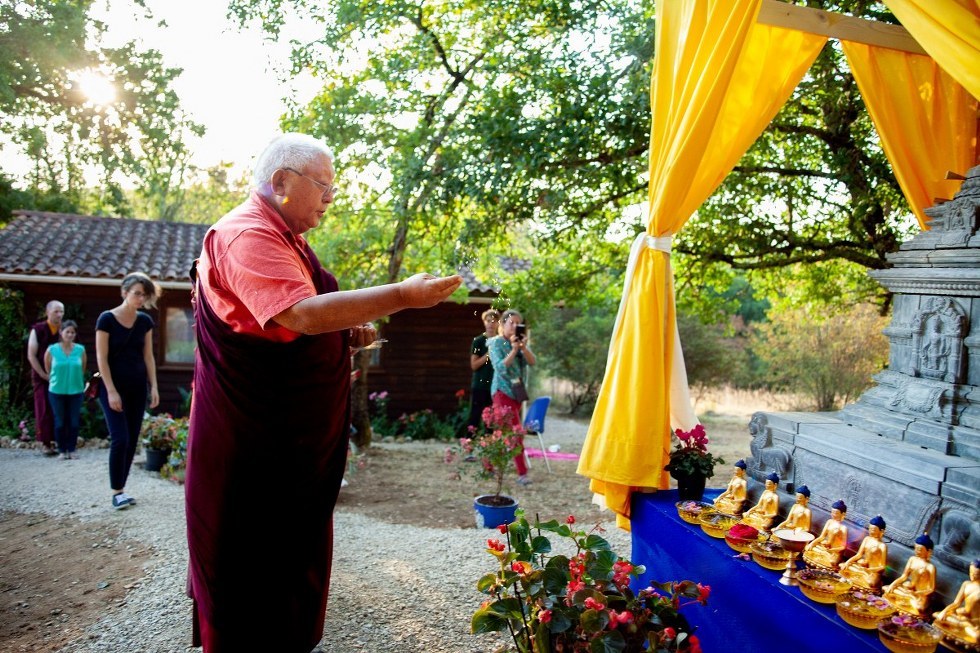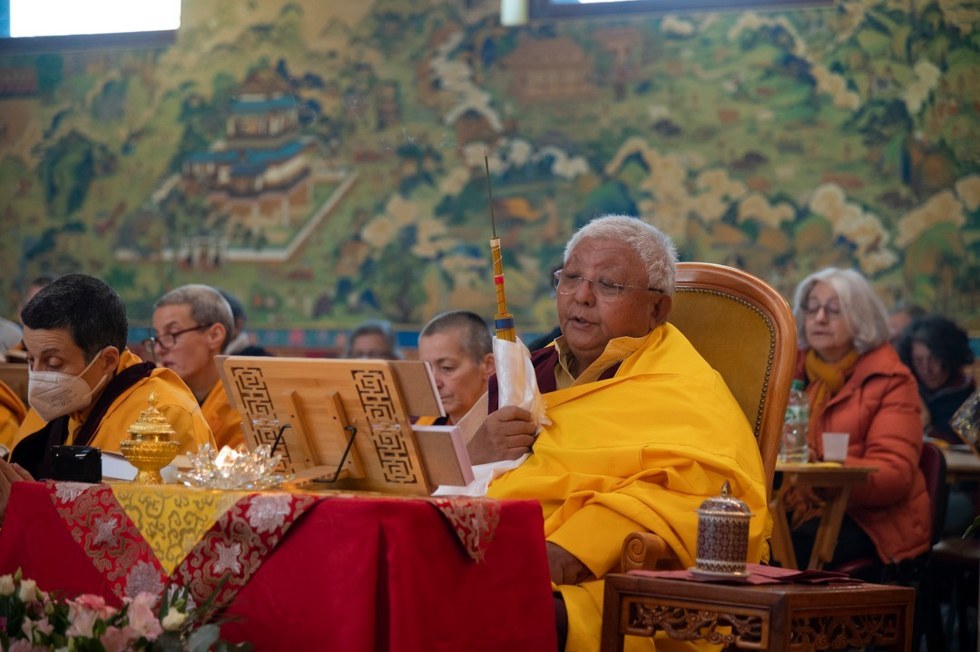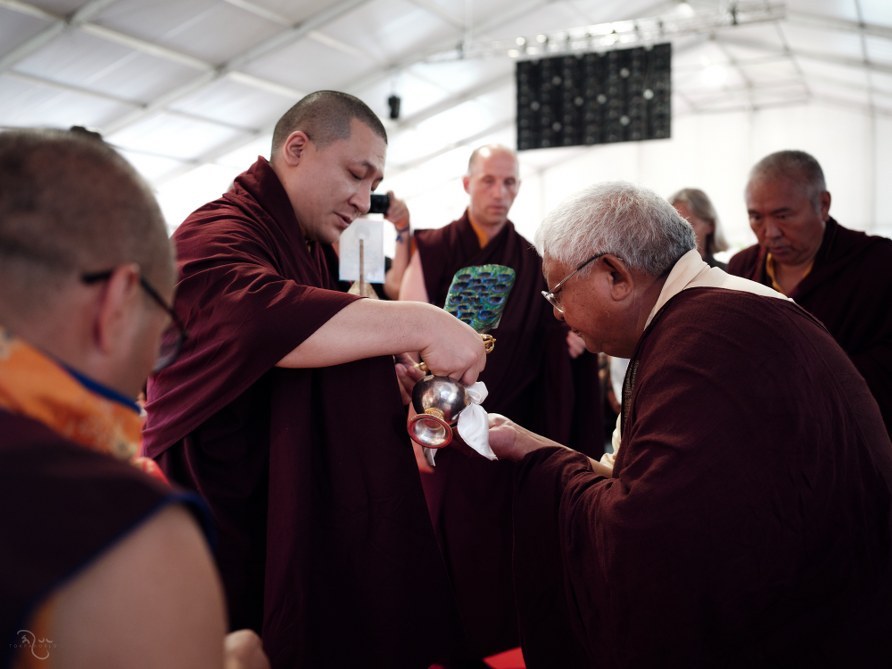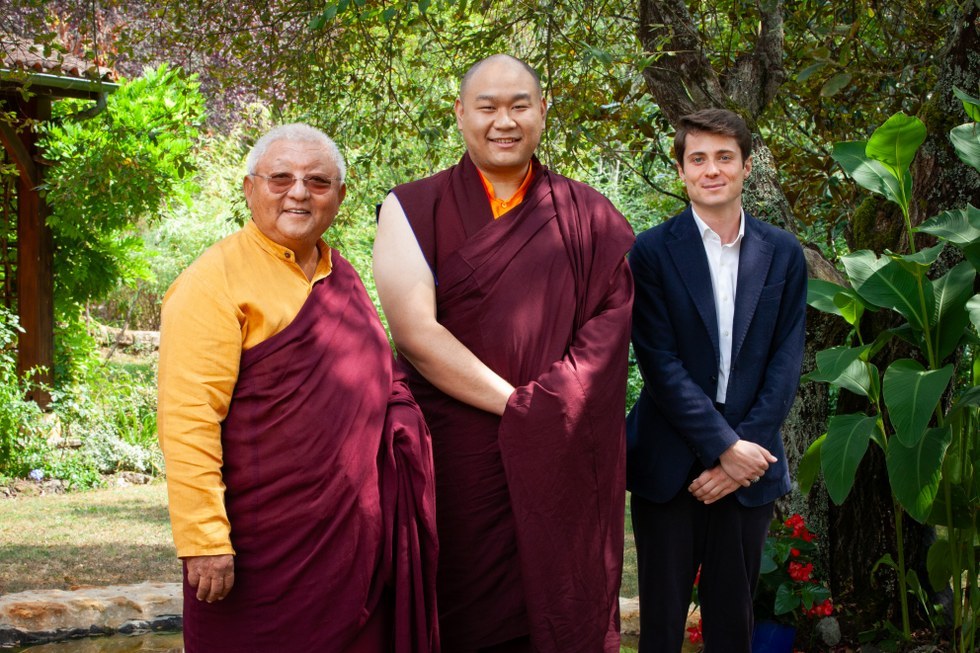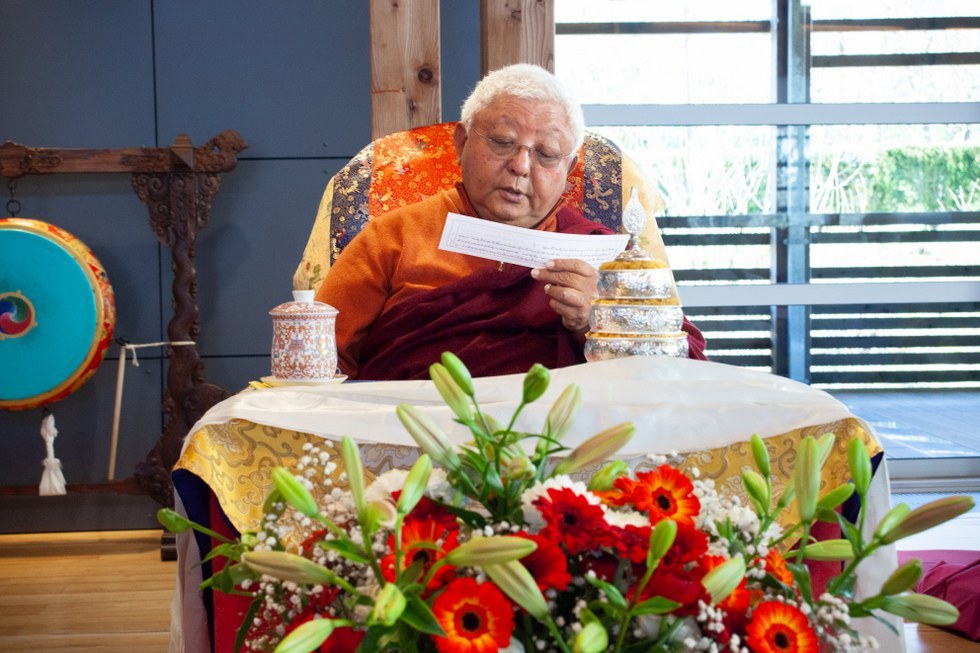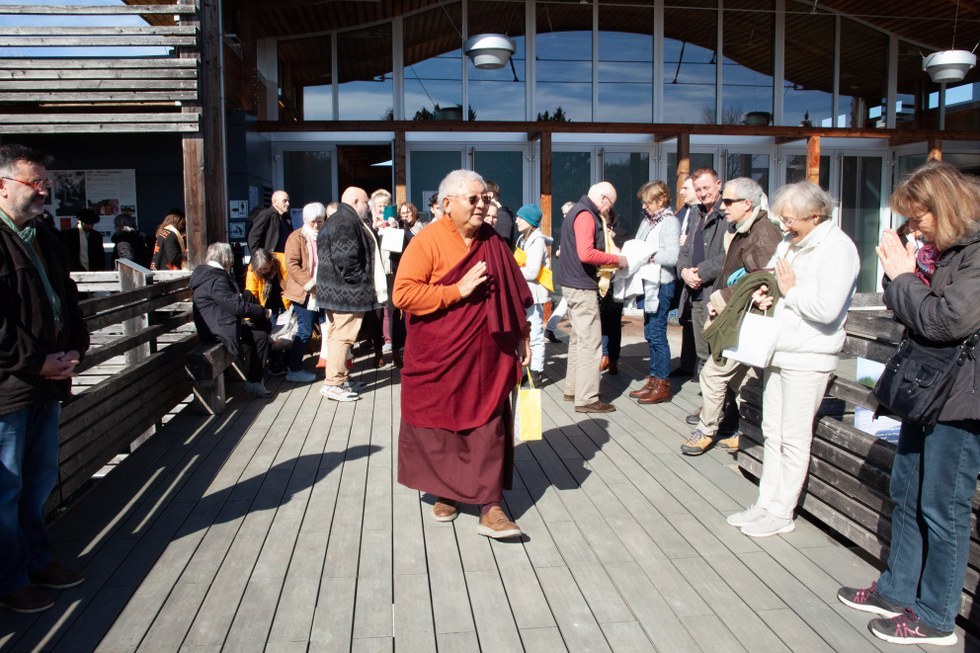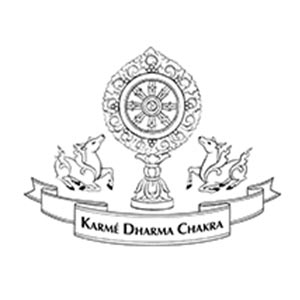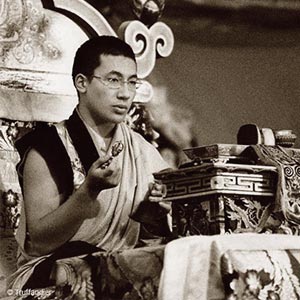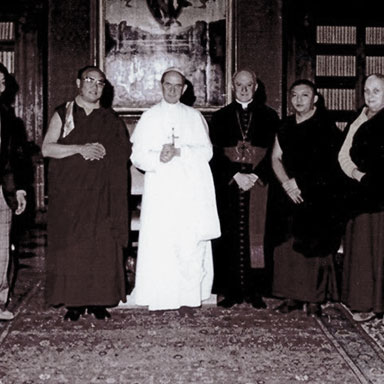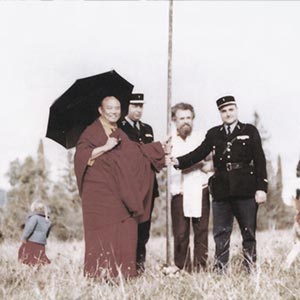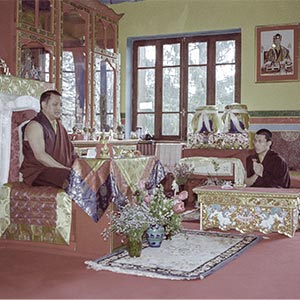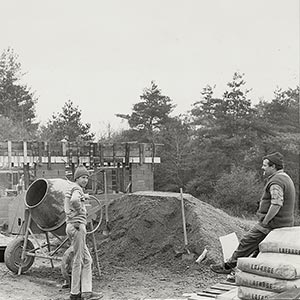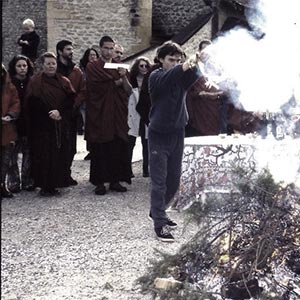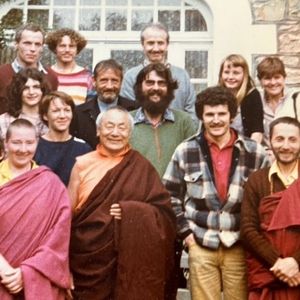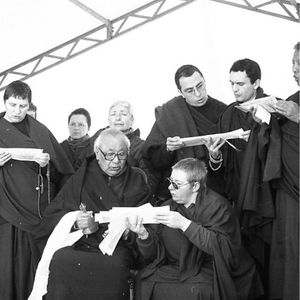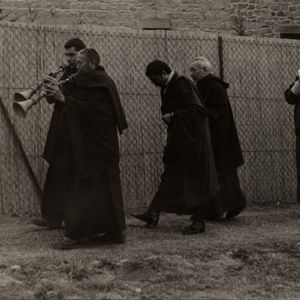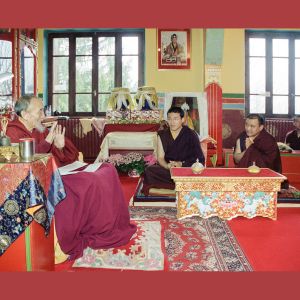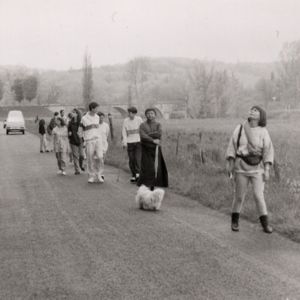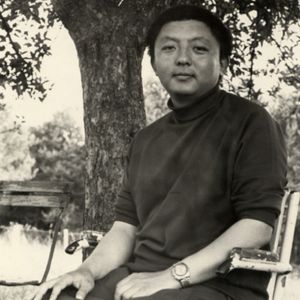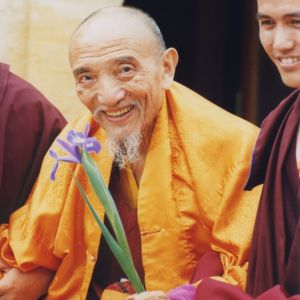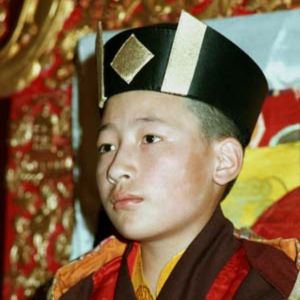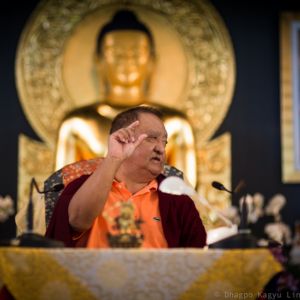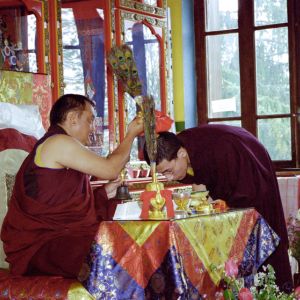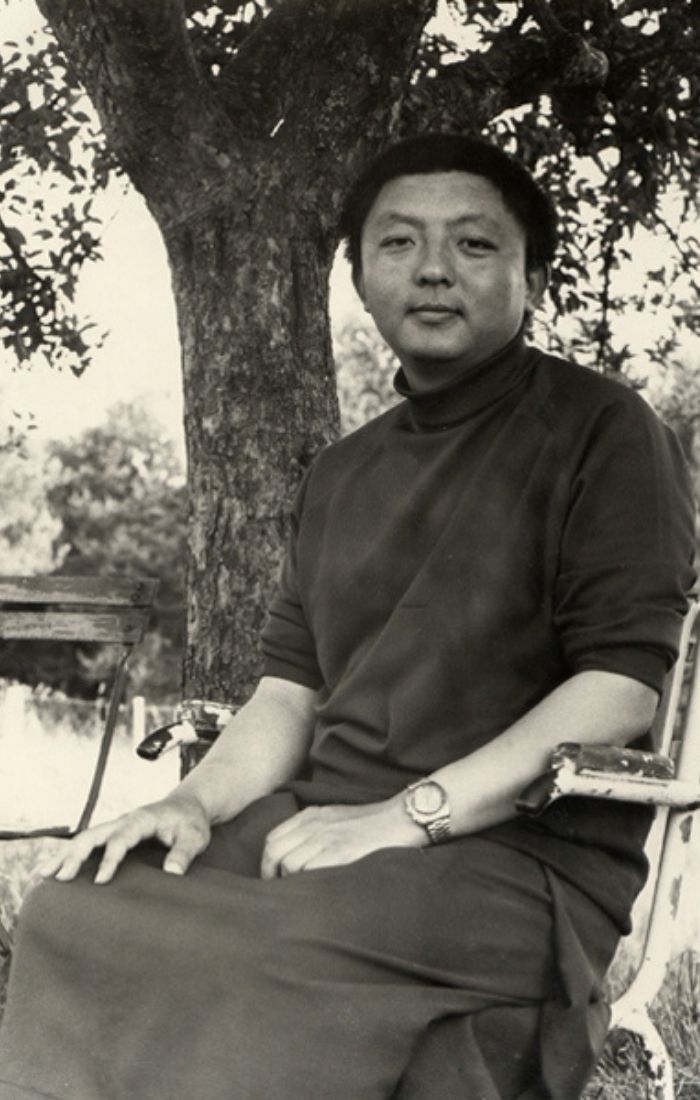 “In January 1975, I was in Geneva with Lama Namgyal. I was taking care of the 16th Karmapa’s birds as he was in Zurich.
“In January 1975, I was in Geneva with Lama Namgyal. I was taking care of the 16th Karmapa’s birds as he was in Zurich.
I was waiting for him and the rest of the group so that we could all return to India together. It must have been around four o’clock in the morning when the phone rang. I wasn’t quite awake when I picked it up.
On the other end of the line, Karmapa asked me if I would agree to stay to take care of the place that he had visited in Dordogne, in France.
I had committed never to refuse Karmapa anything, so I said yes and went back to bed. The next morning, when I woke up, I didn’t know if the phone call was real or if it was a dream!”
This is how Lama Jigme Rinpoche sums up the few minutes that changed his life forever. After spending three months in England waiting for his visa, Lama Jigme Rinpoche arrived at Dhagpo Kagyu Ling on May 3, 1975. He was twenty-six years old. He could barely speak English. He had no idea how long he would be staying.
“From Samye Ling in Scotland, Akong Rinpoche, Umze-la and myself arrived by train to Kagyu Dzong, in Paris. We spent one or two days there before taking the train to Périgueux,” Jigme Rinpoche recalls.
“A small welcoming committee was waiting for us in what was nothing more than a dilapidated farmhouse. There was Bernard Benson, Mr. Gaillard, the head of the intelligence service at the time, Yahne Le Toumelin, Mr. Tierce, a local farmer, Helen and Franz, two Dutch artists, Leo and Simone Mutsaers, and the mayor of Saint-Léon.
I hadn’t expected to find such a rudimentary place. There was really nothing! Yahne Le Toumelin, Matthieu Ricard’s mother, would come every day by bicycle from Chanteloube to bring us food. Then, gradually, people came.”
The early days were spartan and the place was not yet Dhagpo Kagyu Ling. In order to remain as close as possible to what he had learned, Lama Jigme Rinpoche copied Gampopa’s work, The Ornament of Precious Liberation by hand.
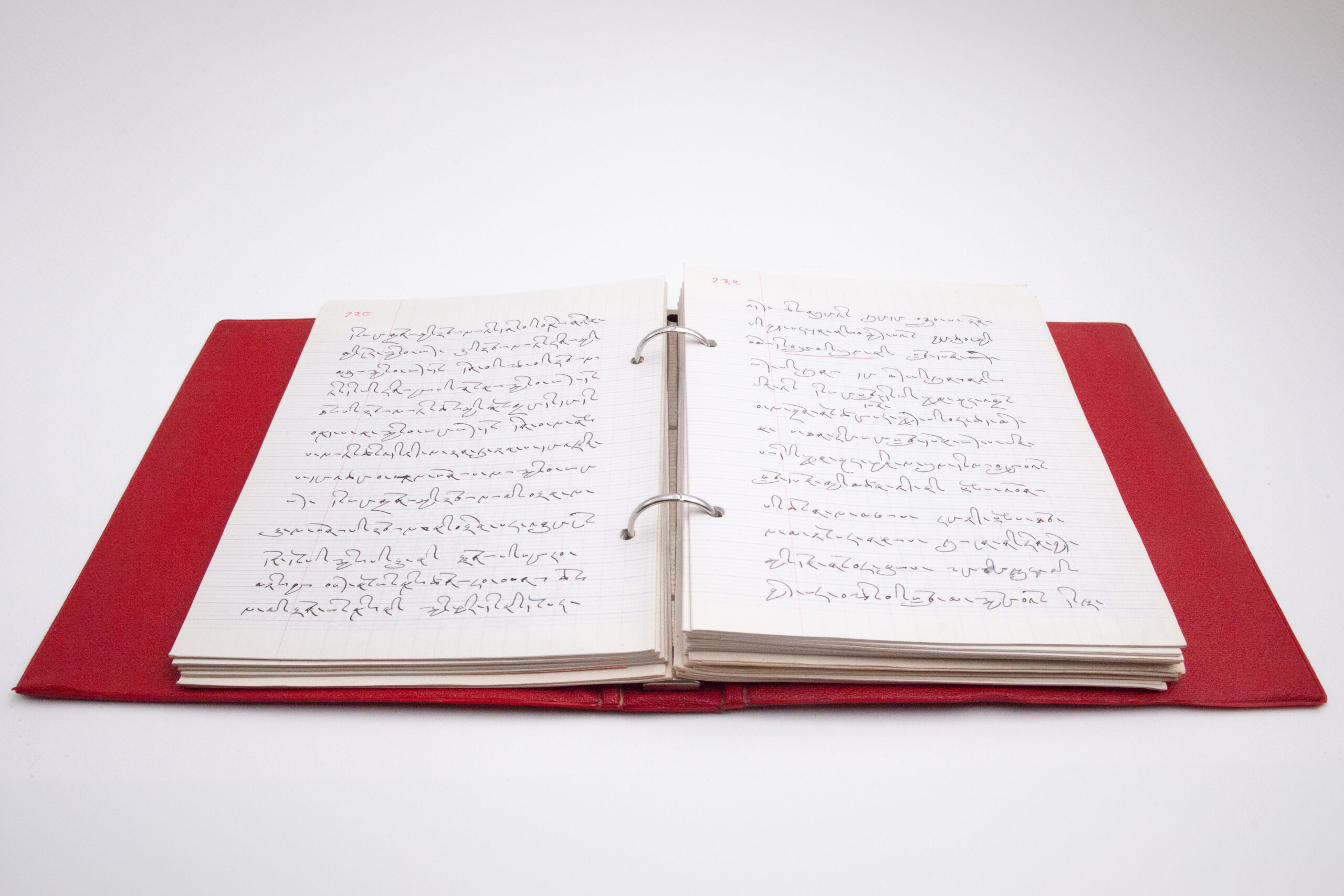
A half century has gone by… Today, on this same date, Lama Jigme Rinpoche is guiding practitioners in the Chenrezig Course in Dhagpo Kagyu Ling’s Institute. A brief summary of his activities is available on his website.
His spiritual education began in Tsurphu, Tibet, at the age of six, under Rangjung Rigpe Dorge, His Holiness the 16th Gyalwa Karmapa, and continued in Rumtek, India. While this traditional education involves learning about the philosophy and practice of the Buddhadharma, its founding principle is known in Tibetan as tongwa gyünpe chalen མཐོང་བ་རྒྱུན་པའེ་ཕྱག་ལེན།, an expression that can be translated as assimilate through continuous observation. Like learning a craft, it involves being present to see what is not necessarily obvious; to listen to words that are said as much as how they are said; to observe gestures and practice in reproducing them; to ask questions and really listen to the answers; to understand through a process of immersion; to fully integrate. This way of learning the Dharma is more about living it, experiencing it as close as possible to the awakened presence of the 16th Karmapa. It is less about learning to do as about learning to be.
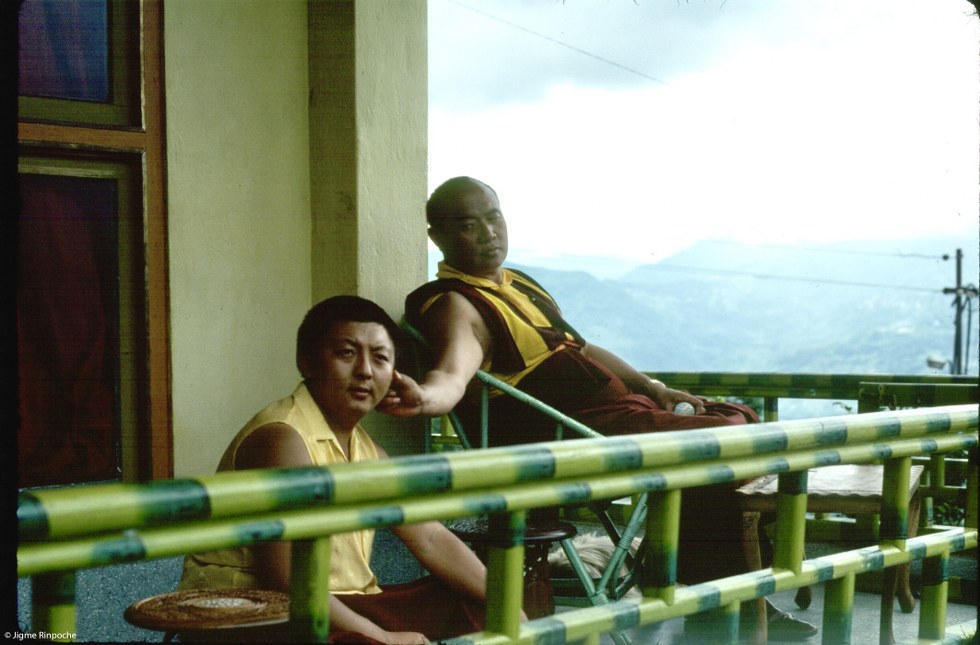
When Jigme Rinpoche was sixteen years old, Karmapa entrusted him with the delicate task of receiving and welcoming any person who came to Rumtek to meet with His Holiness, from local villagers to the King of Sikkim, the last Dharma Raja Palden Thondup Namgyal (1923-1982), or the first westerners interested in Dharma who found their way to Rumtek. This involved receiving them and being fully available to everyone, regardless of their status.
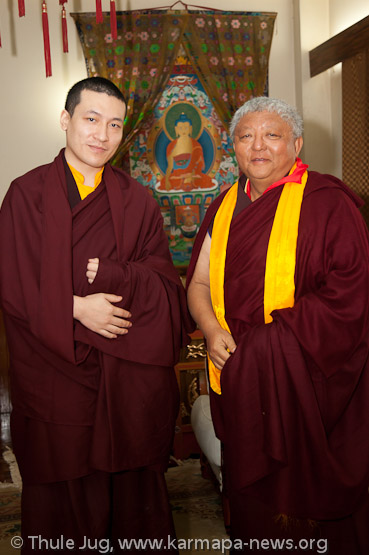
Thus began, with the utmost discretion, an entire life of service to the Gyalwa Karmapa—first to the 16th, Rangjung Rigpe Dorje, then to the 17th, Trinley Thaye Dorje. The Buddha Karmapa is a nirmanakaya, an emanation of enlightenment; as such, his sole intention is to accomplish the good of all sentient beings. To serve Karmapa, whatever his incarnation, is therefore to dedicate one’s life to the service of others.
Five decades later, on May 3, 2025, Lama Jigme Rinpoche is now seventy-six years old. He speaks English. He never left and has French citizenship. He continues to be available and to welcome anyone who wishes to meet him with kindness and patience. He continues to share the Buddhadharma at Dhagpo Kagyu Ling and throughout the world. He continues to do everything to make the Dharma accessible by creating the conditions for this to be possible today and for future generations.
Lama Jigme Rinpoche continues to dedicate himself to others and to serve the Karmapa, with utmost discretion.
“In the person of Jigme Rinpoche, I leave you my heart.”
Event
This day will open with a smoke offering practice (sang puja) from 6:30 a.m. to 8:30 a.m. in the Institute.
The ritual will be followed by Jigme Rinpoche’s teaching for the Chenrezig Progressive Curriculum of Study & Meditation, onsite and online.
The teaching is given in English and translated into French, Spanish and German.
These photos come from our archives or were collected as part of the research for Dhagpo Kagyu Ling’s 50th anniversary. We have not been able to identify all the authors. The use of these photos is solely for informational purposes within the context of Dhagpo Kagyu Ling’s 50th anniversary celebration. Their use is limited to this event and our website and is not for commercial purposes.
These photos come from our archives or were collected as part of the research for Dhagpo Kagyu Ling’s 50th anniversary. We have not been able to identify all the authors. The use of these photos is solely for informational purposes within the context of Dhagpo Kagyu Ling’s 50th anniversary celebration. Their use is limited to this event and our website and is not for commercial purposes.


